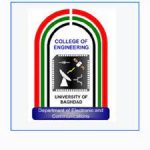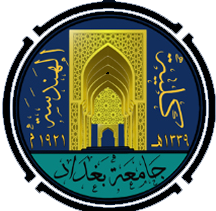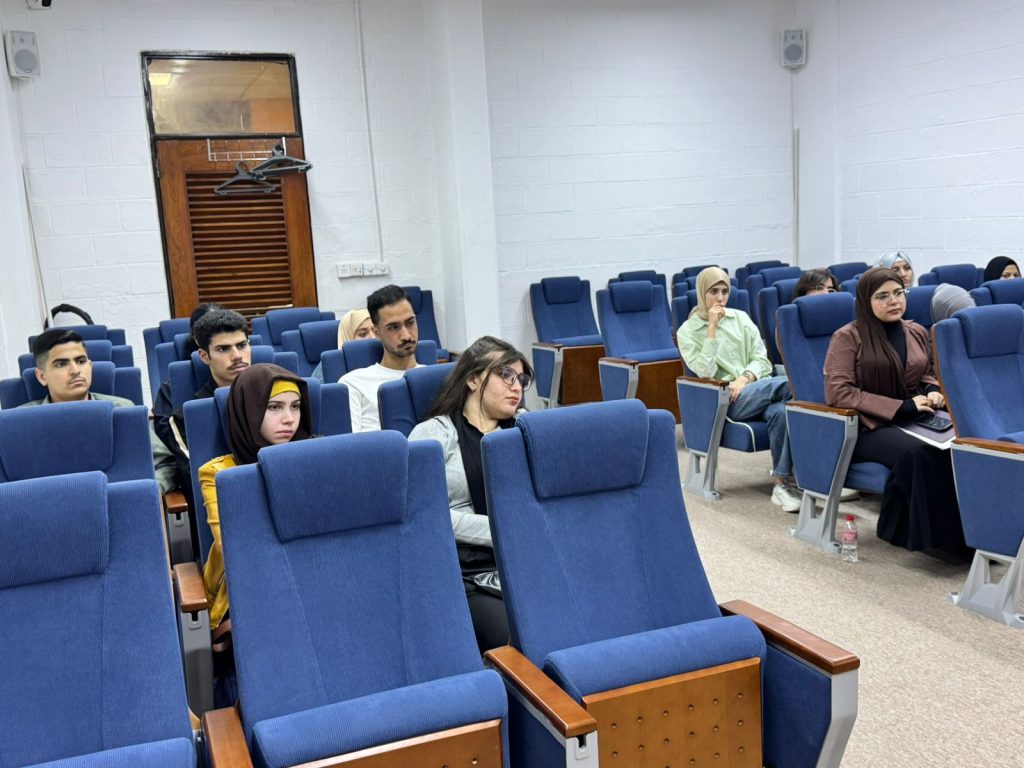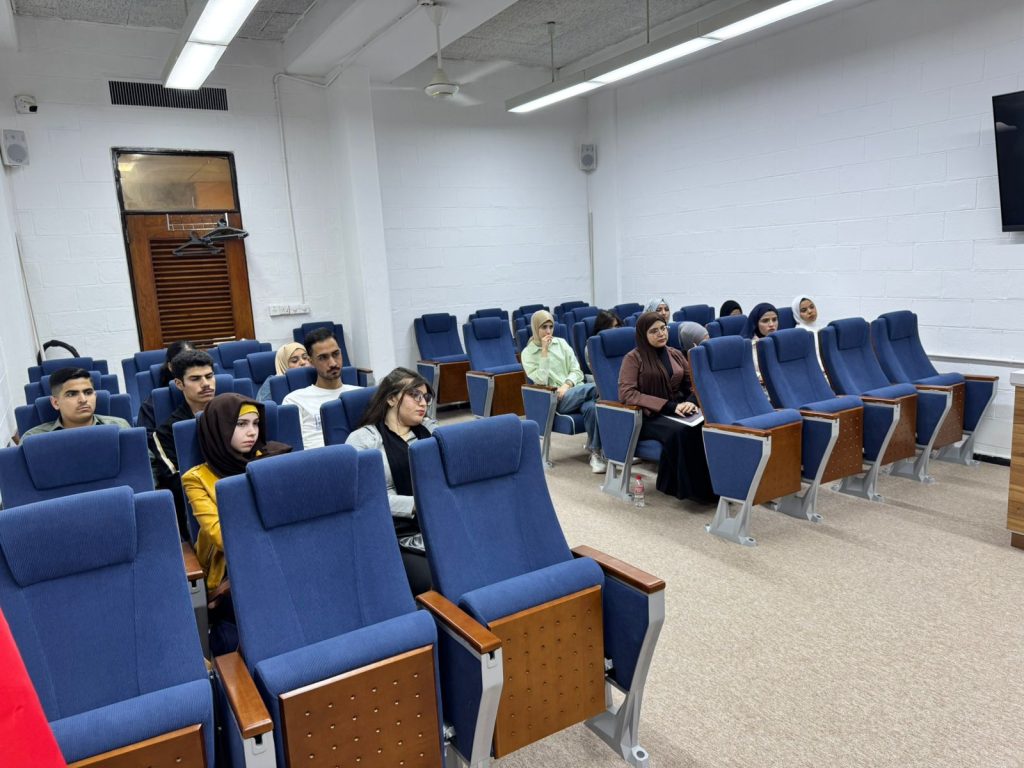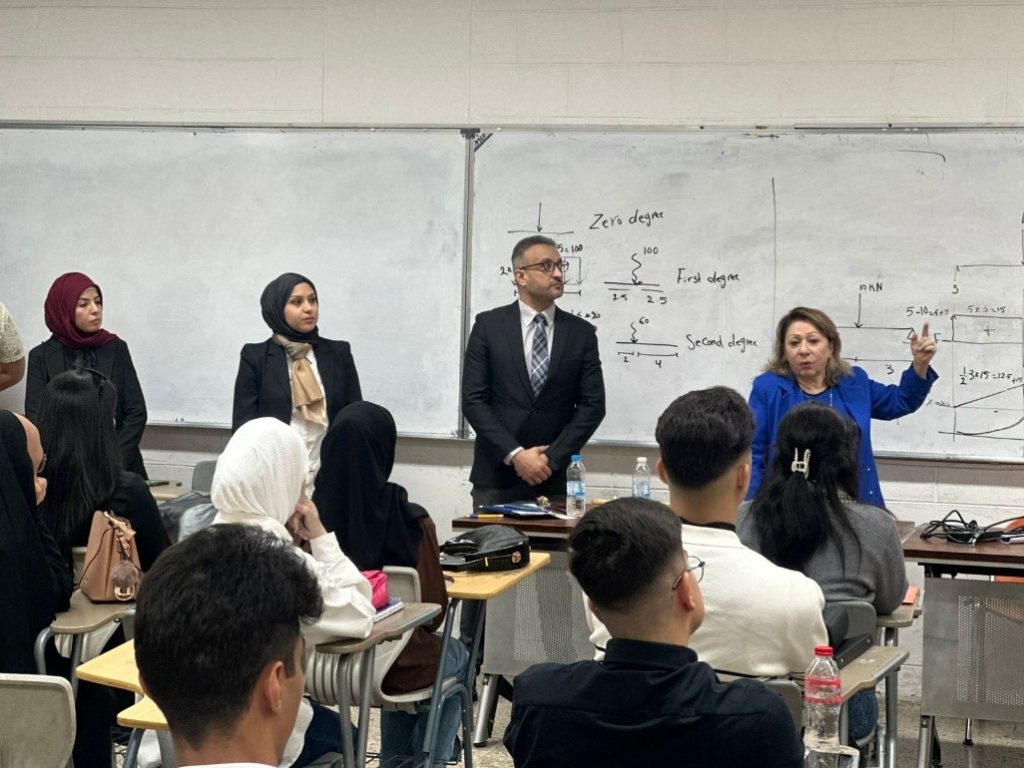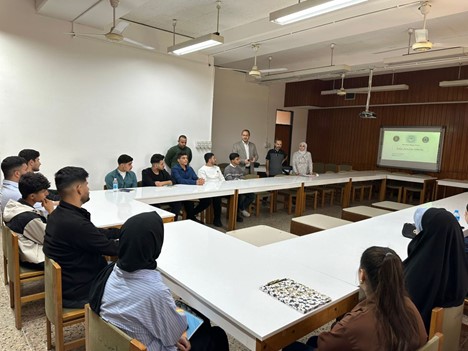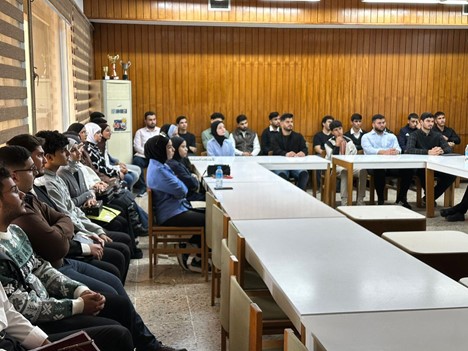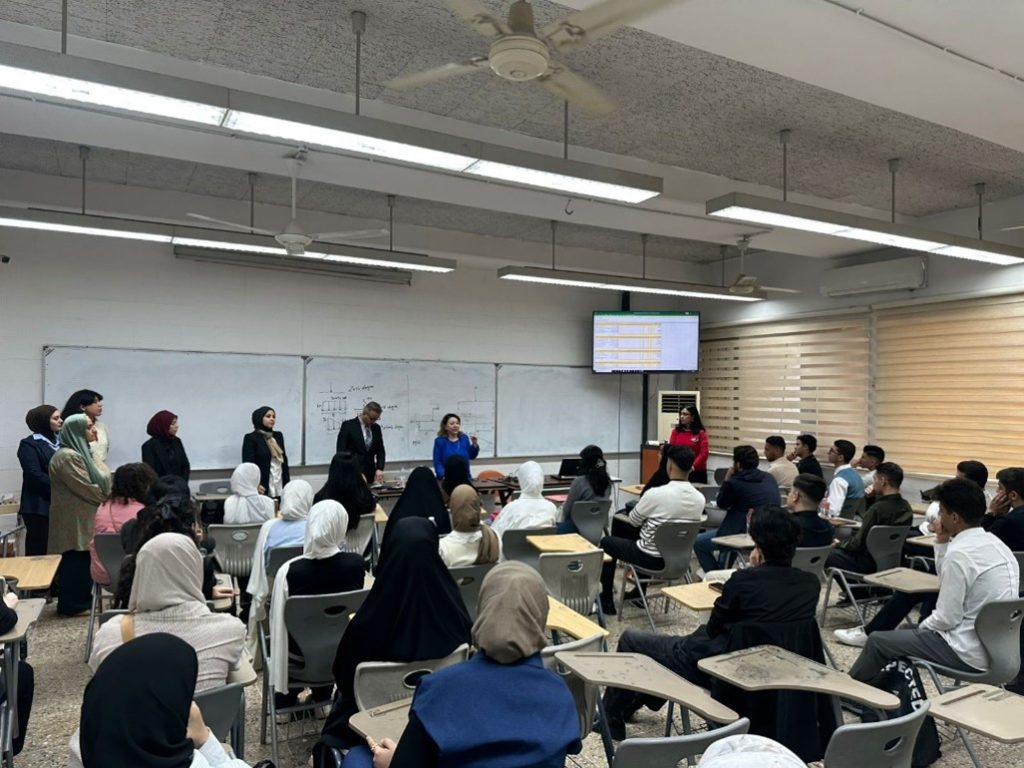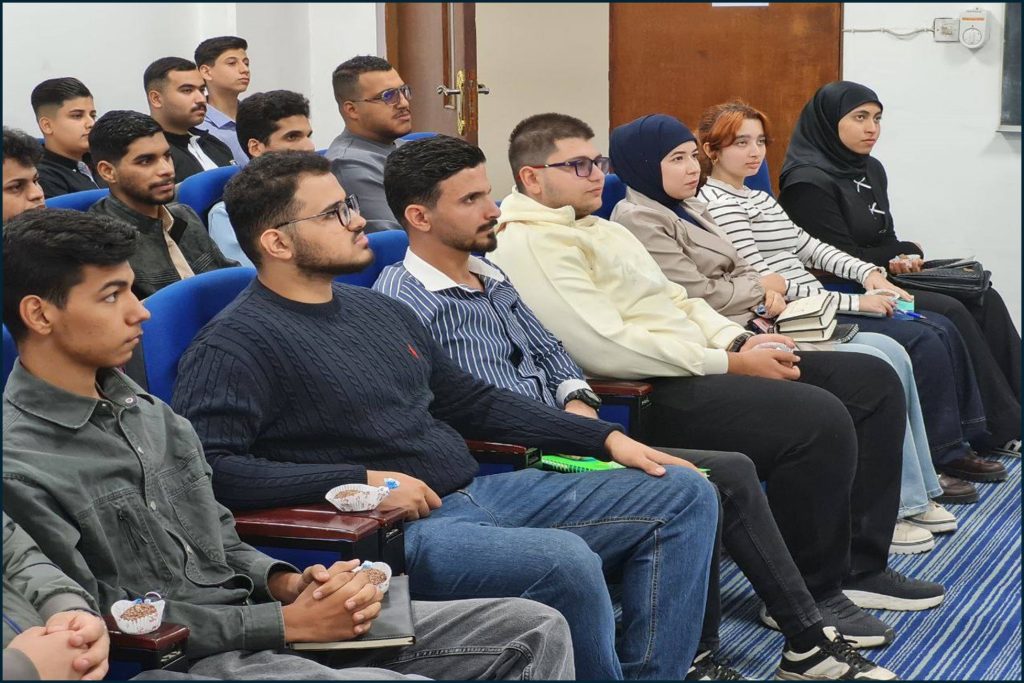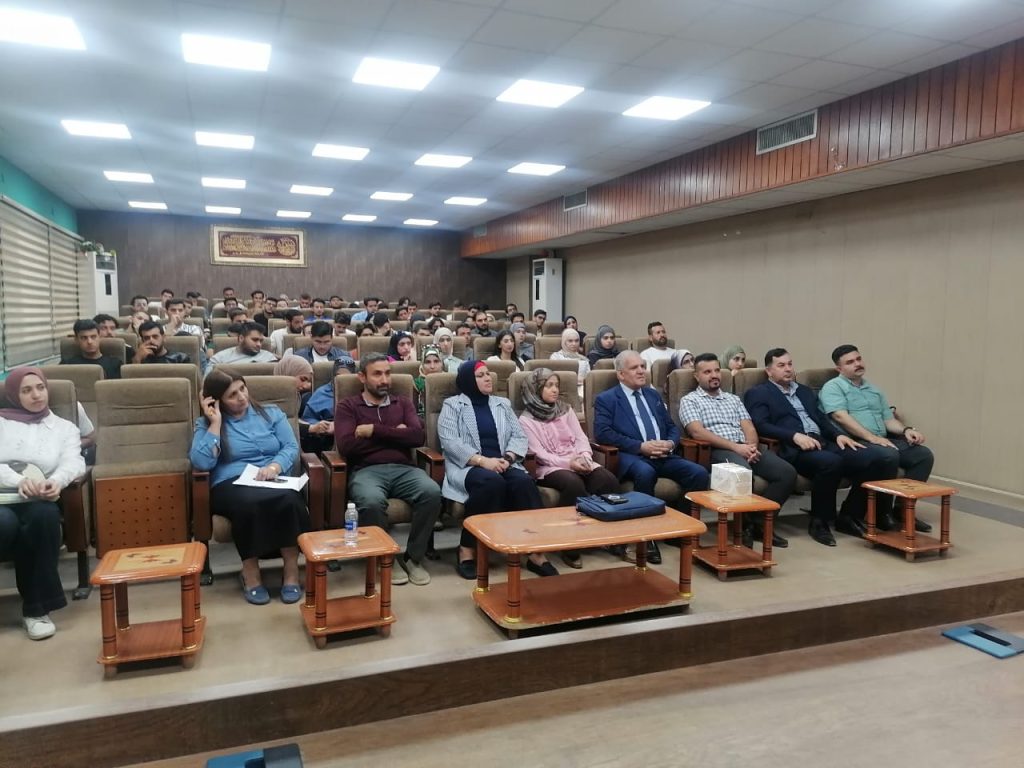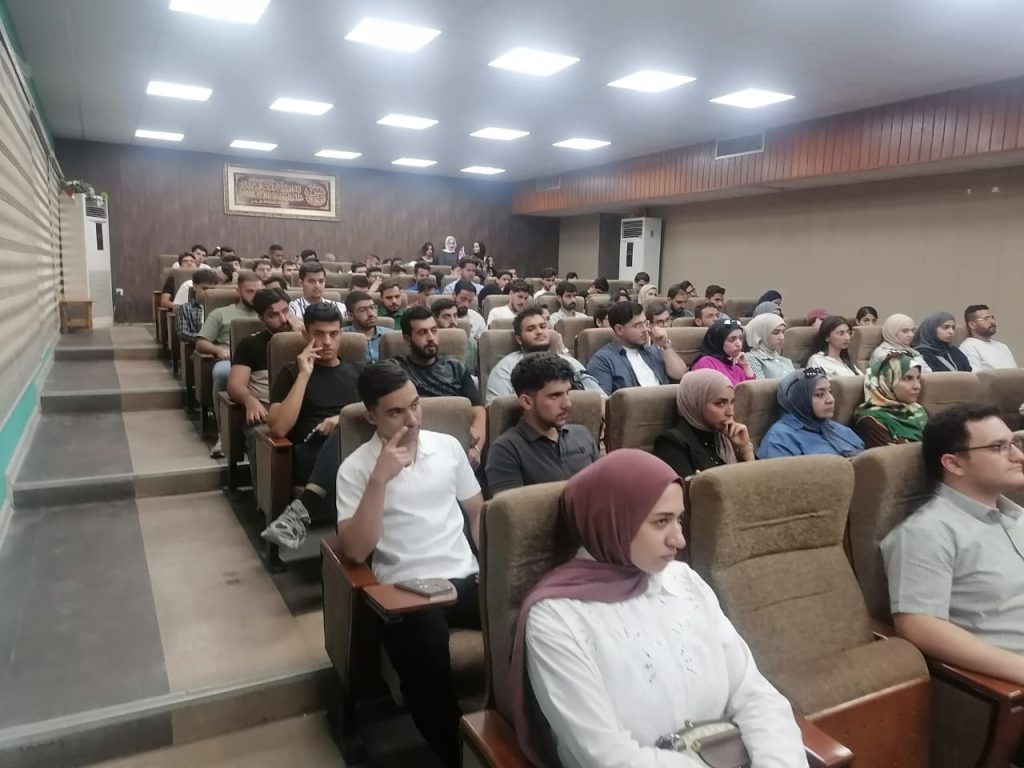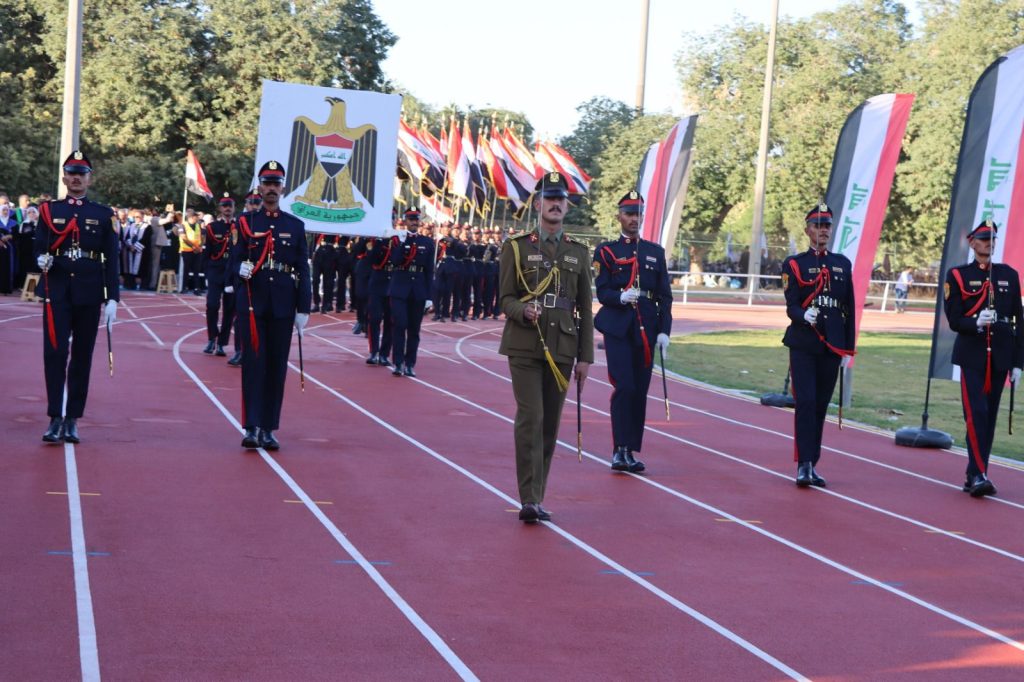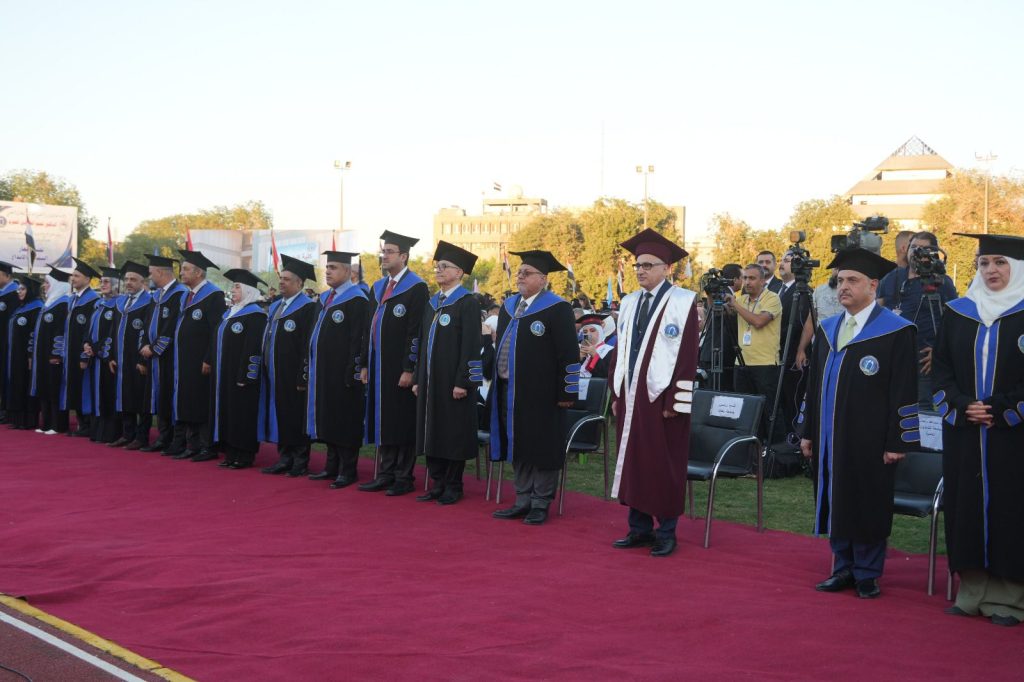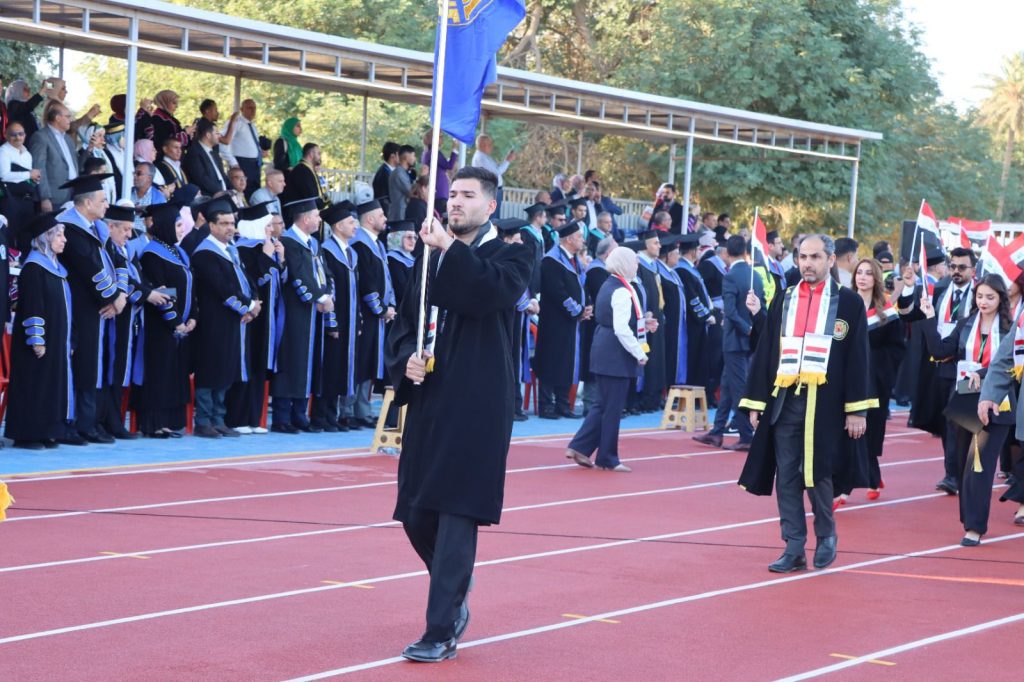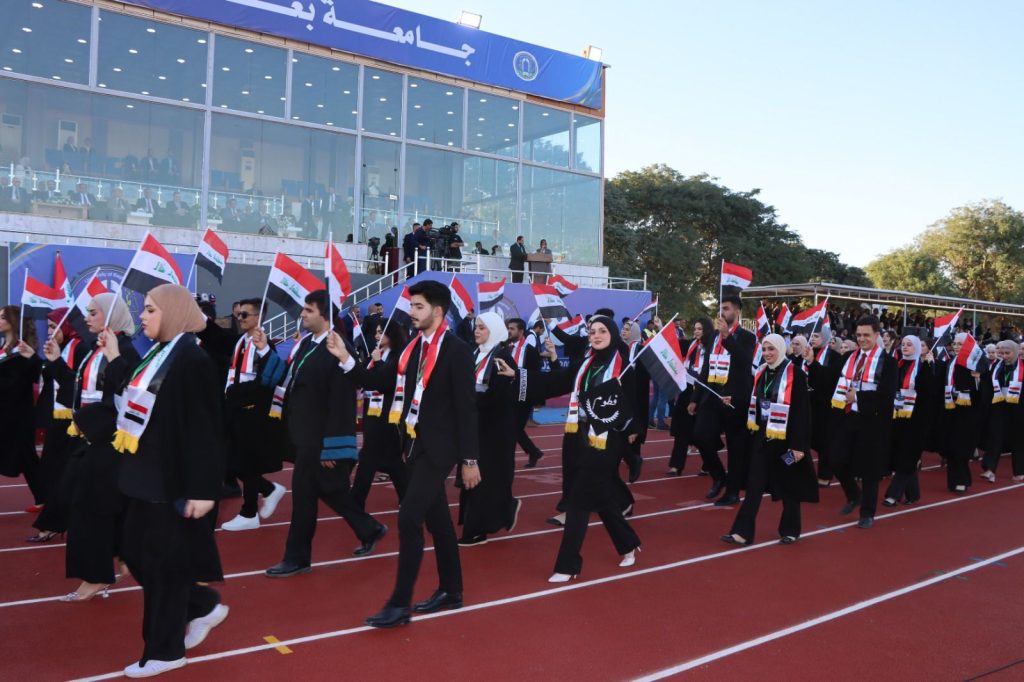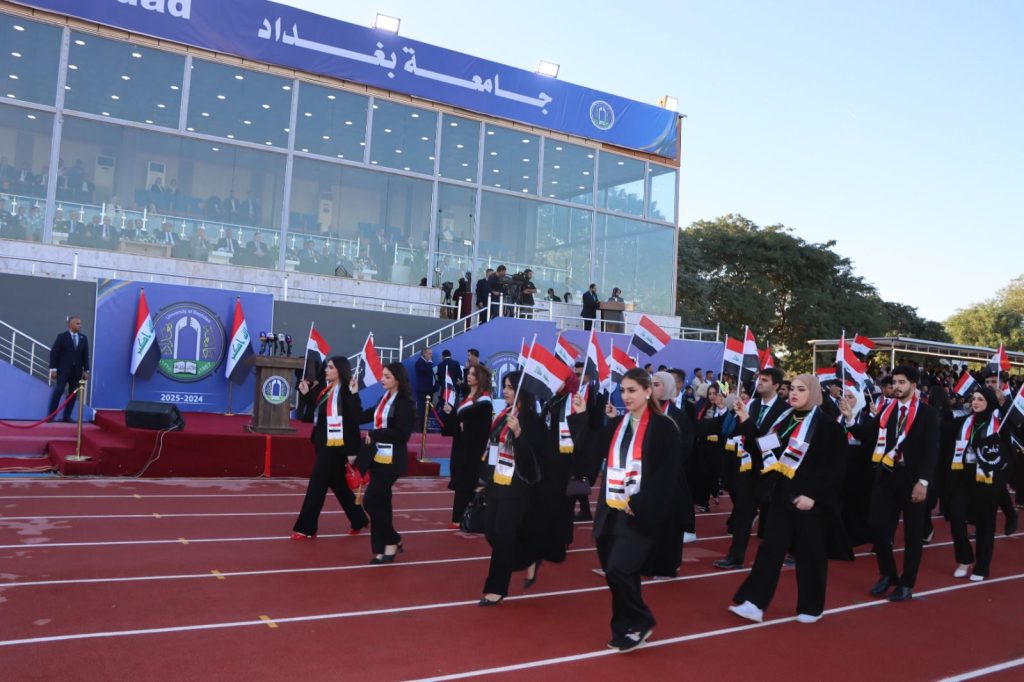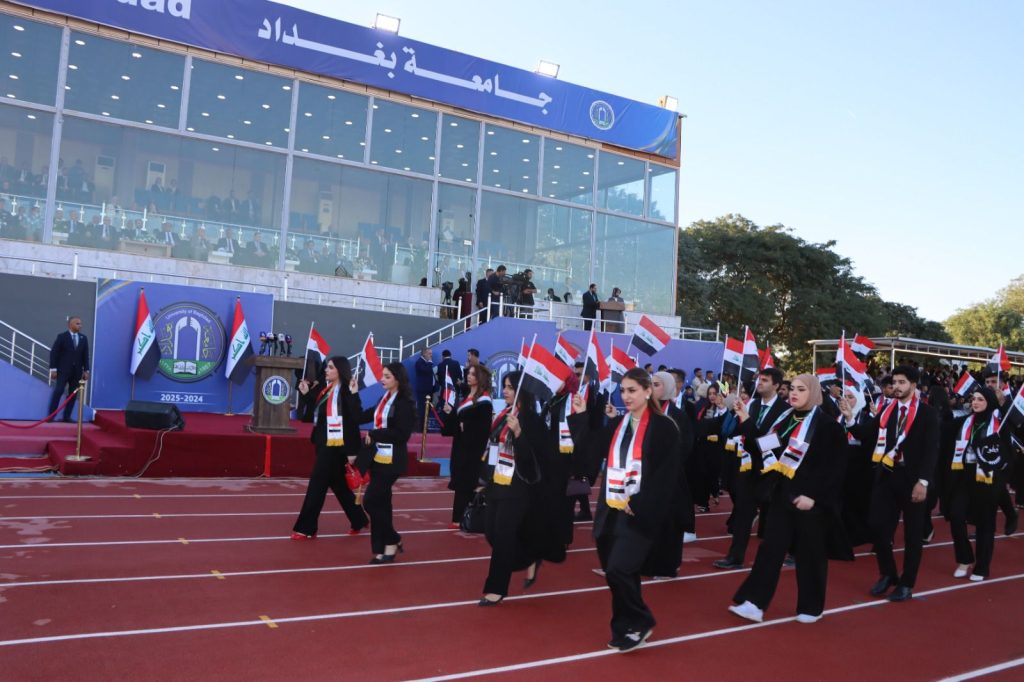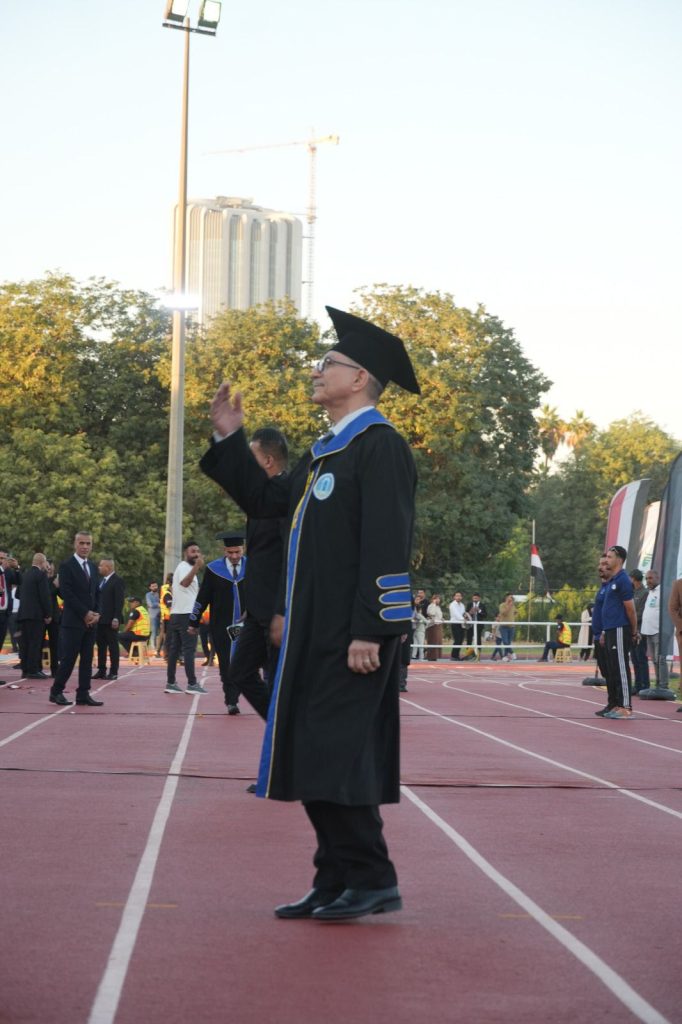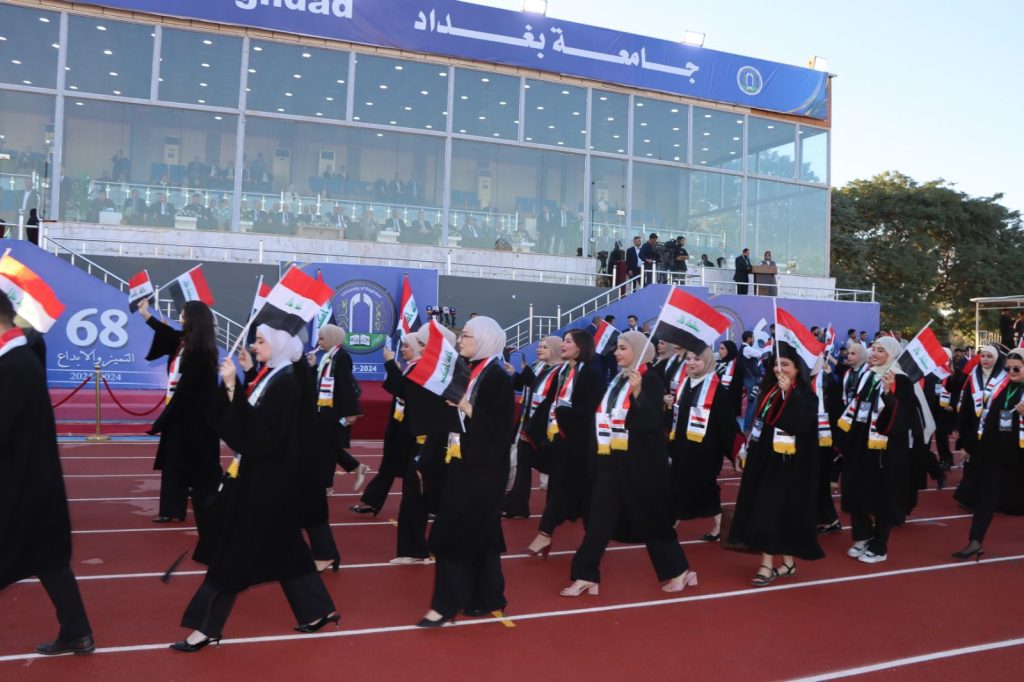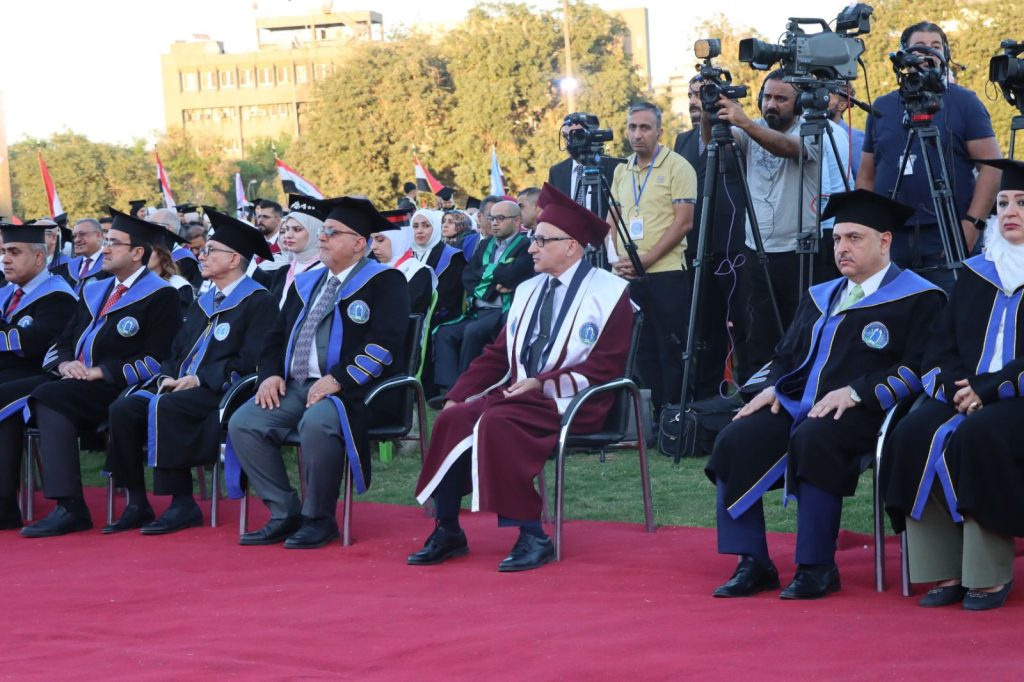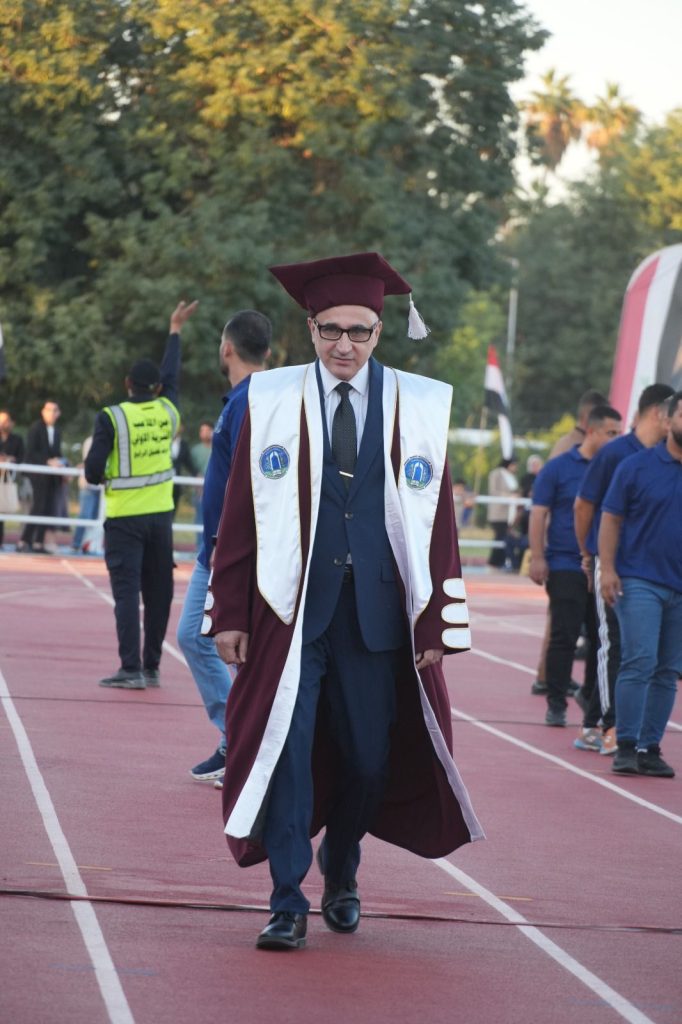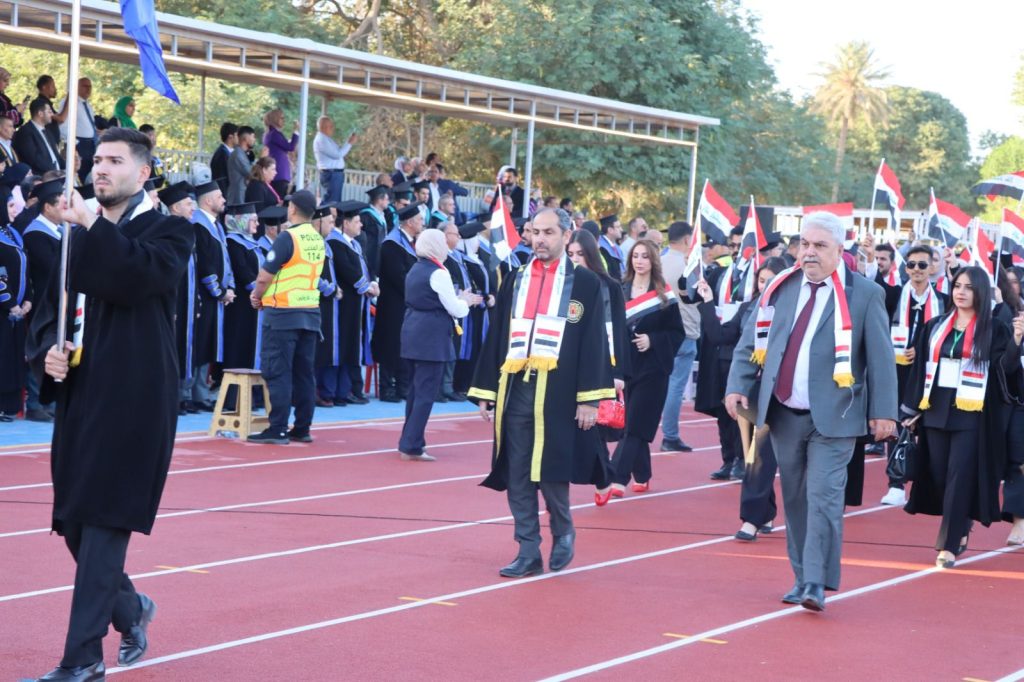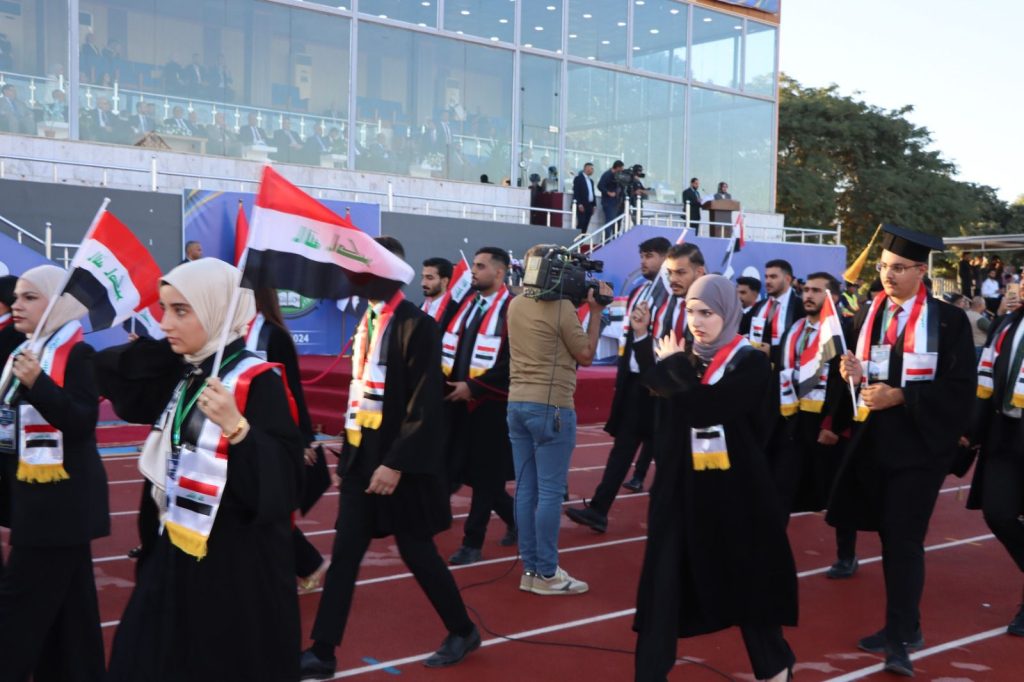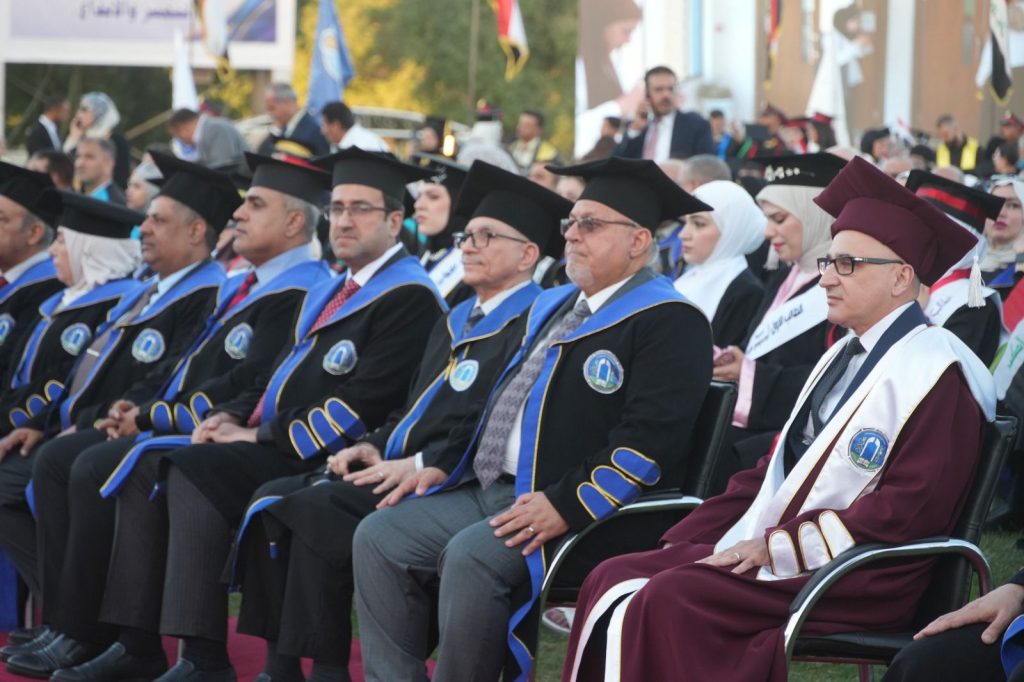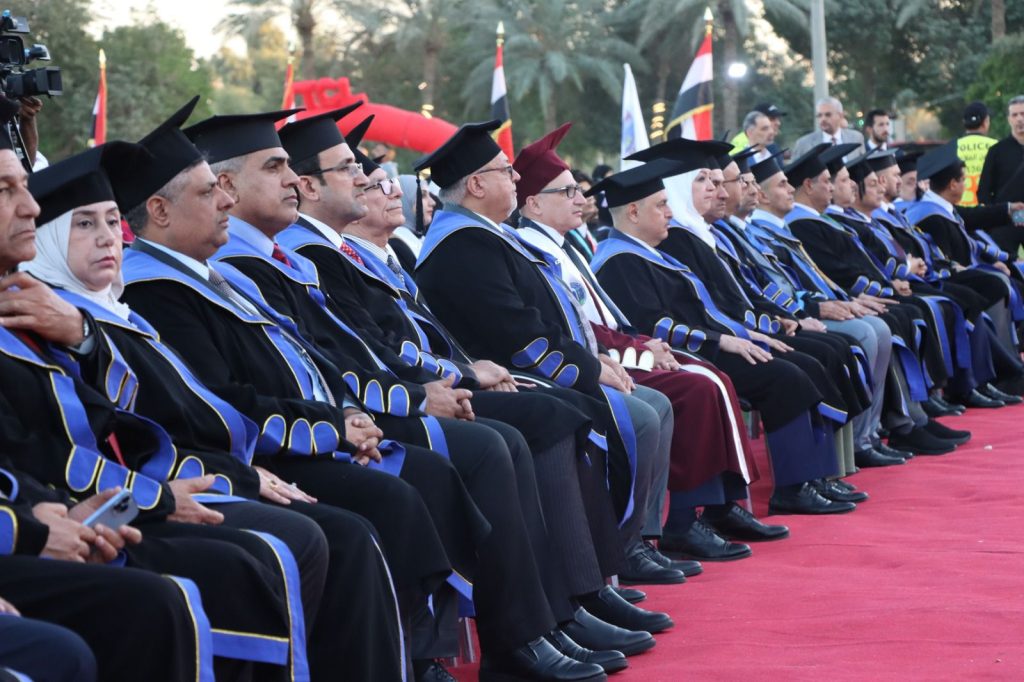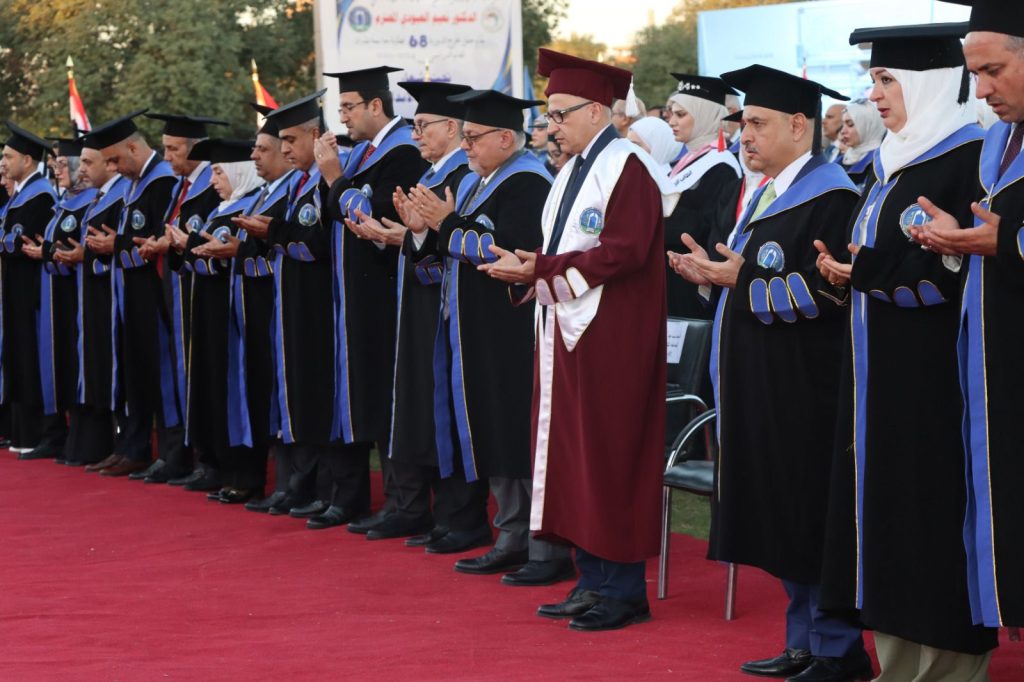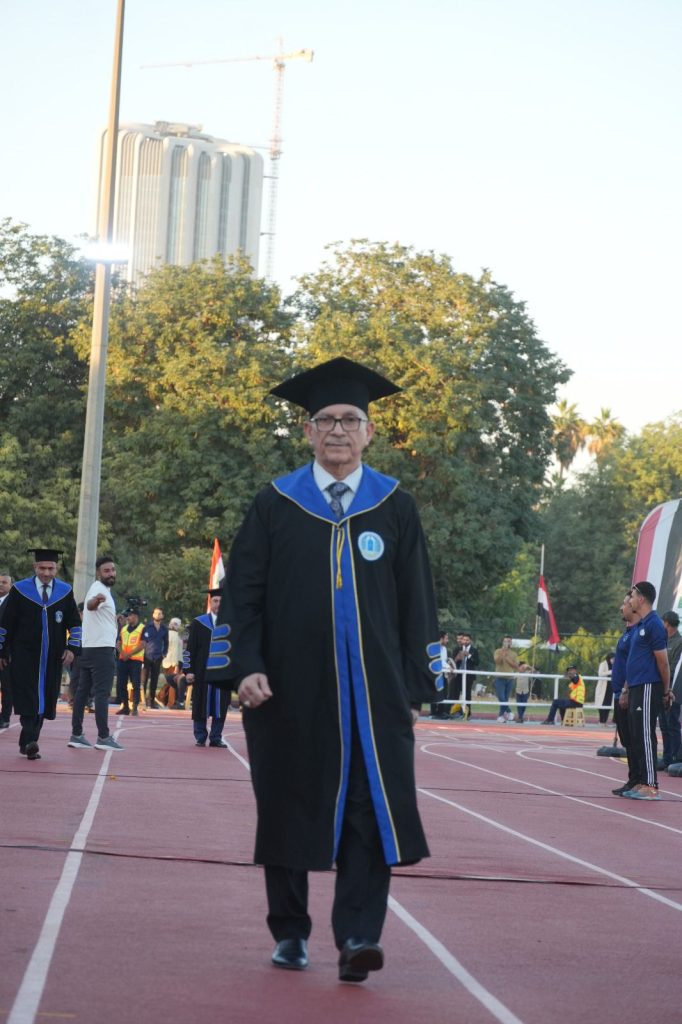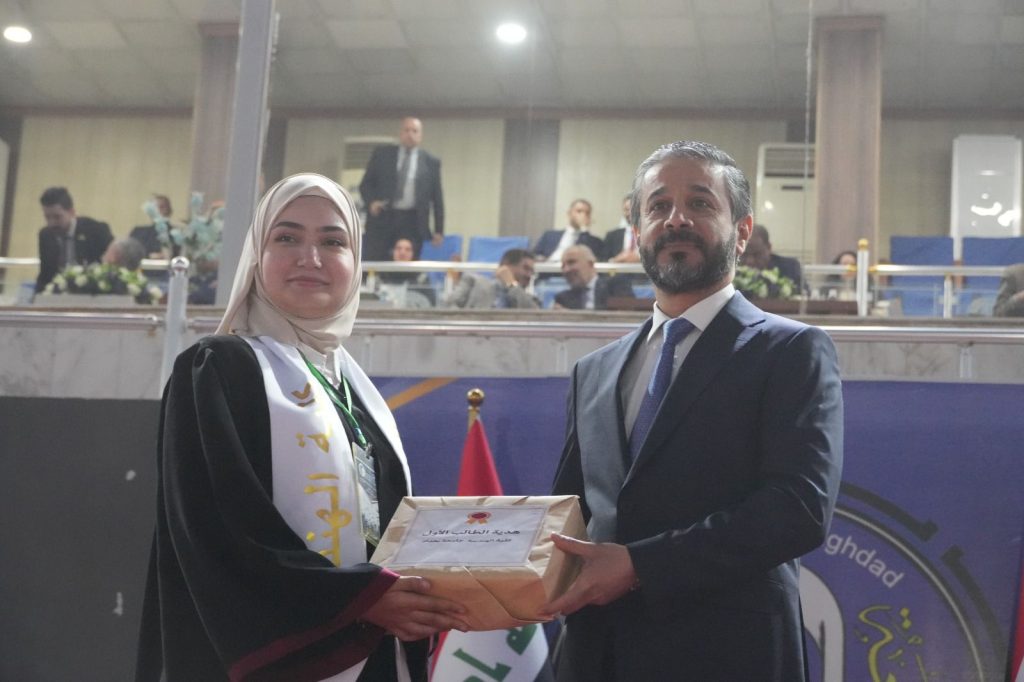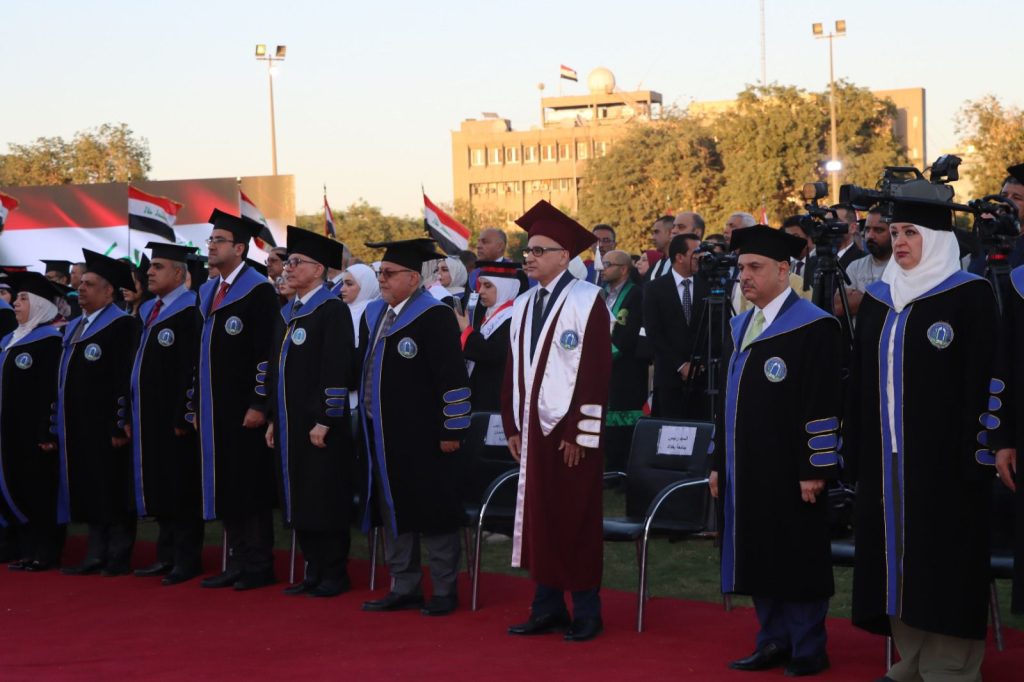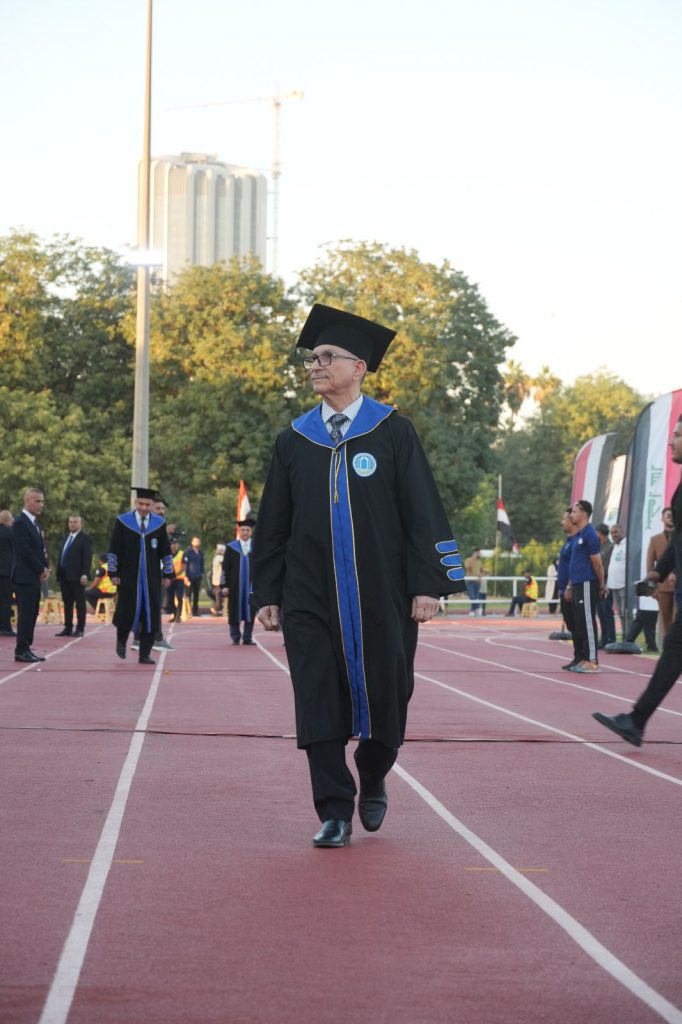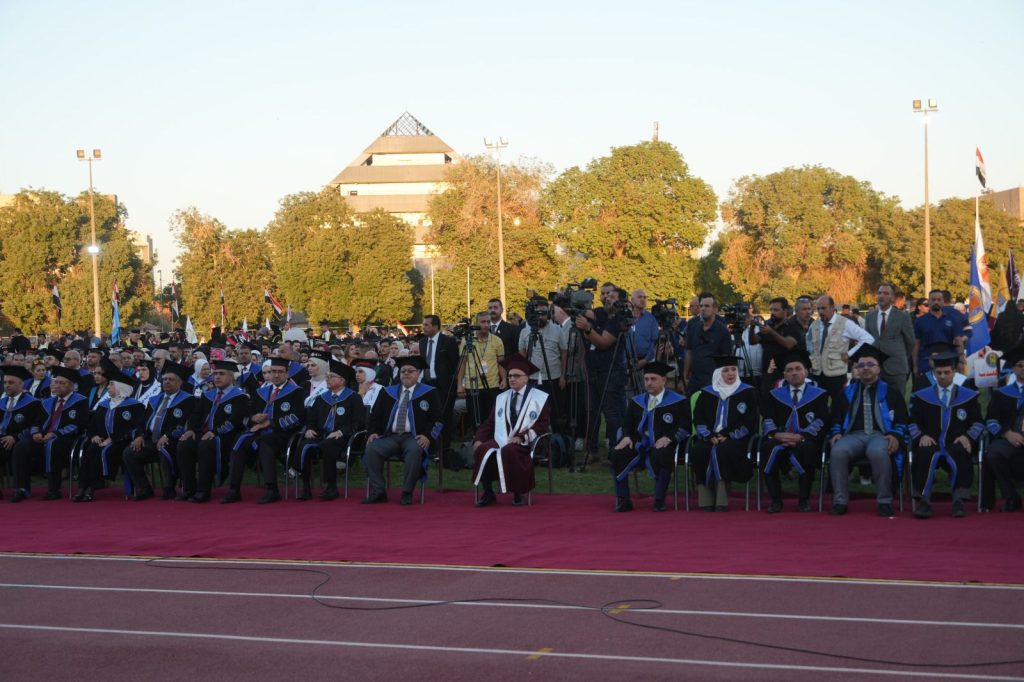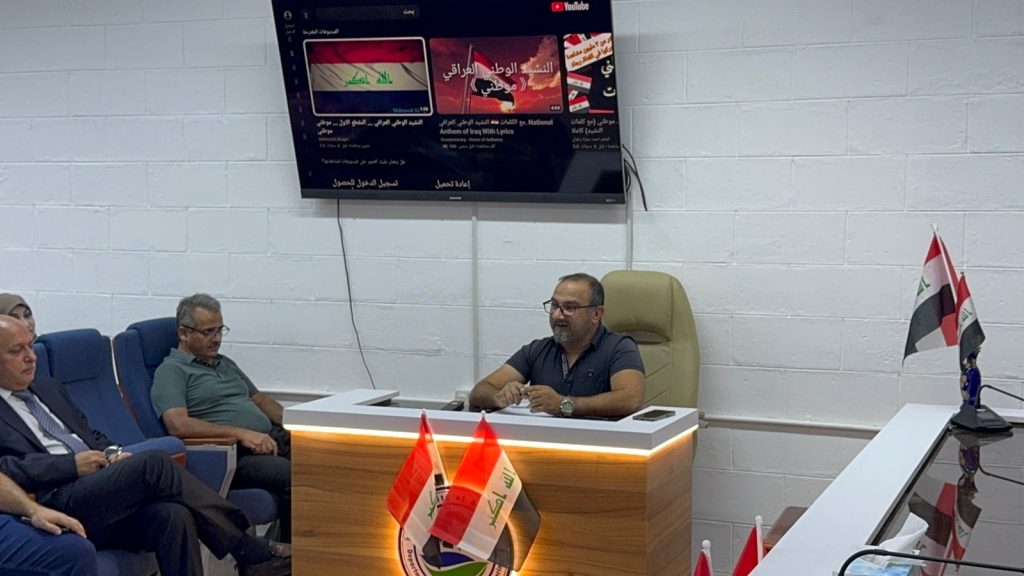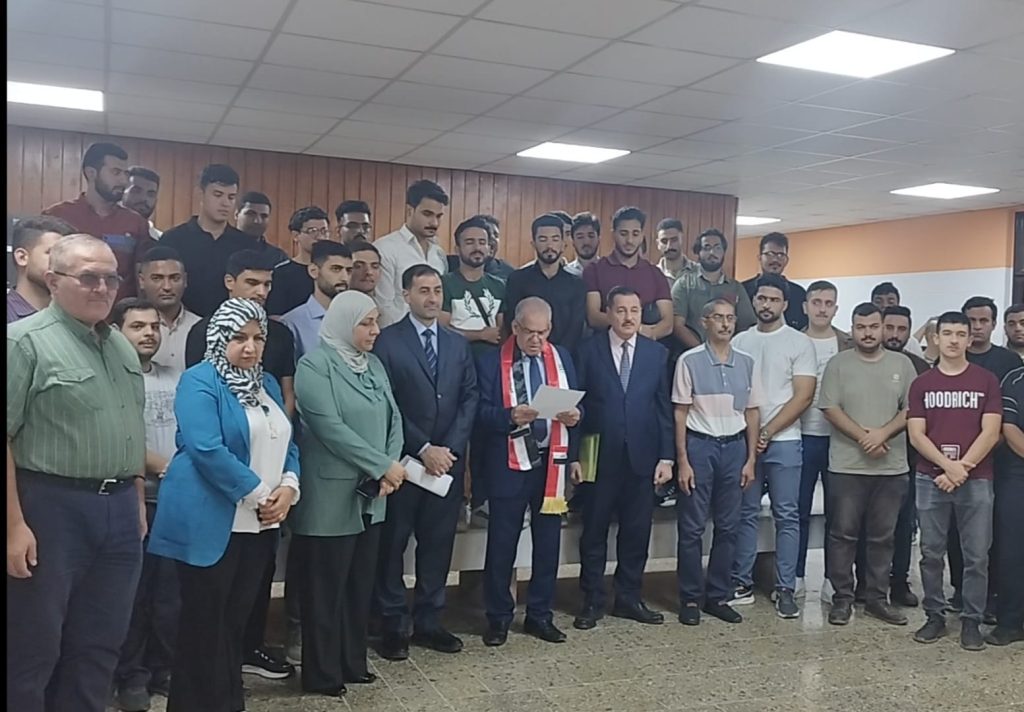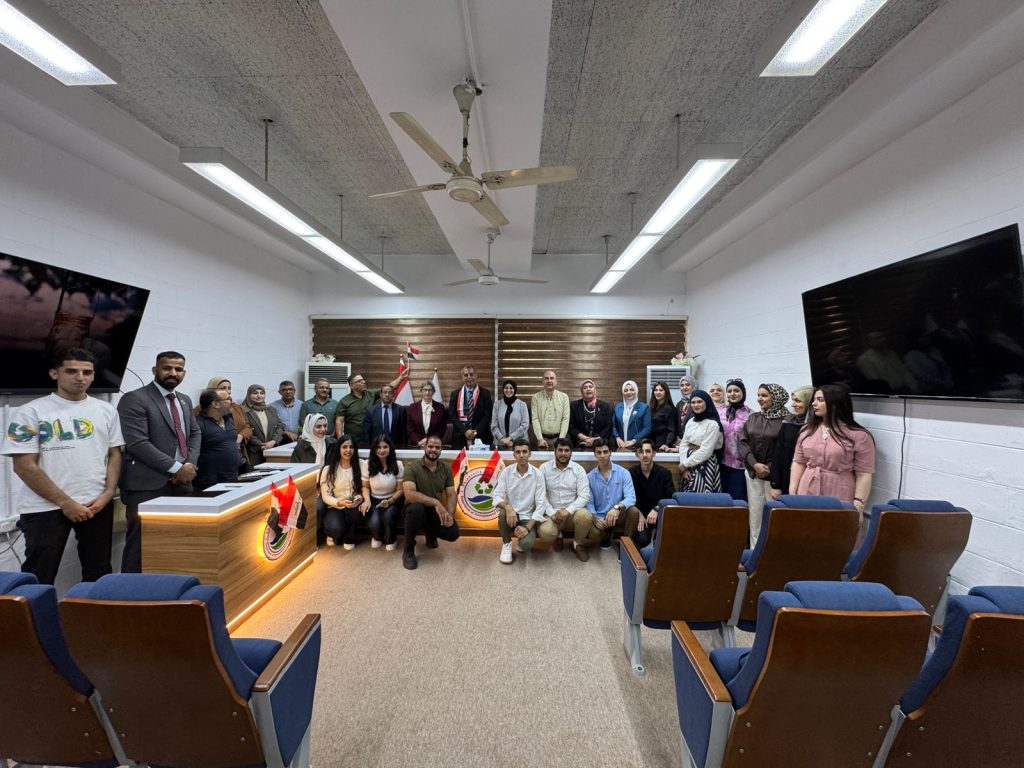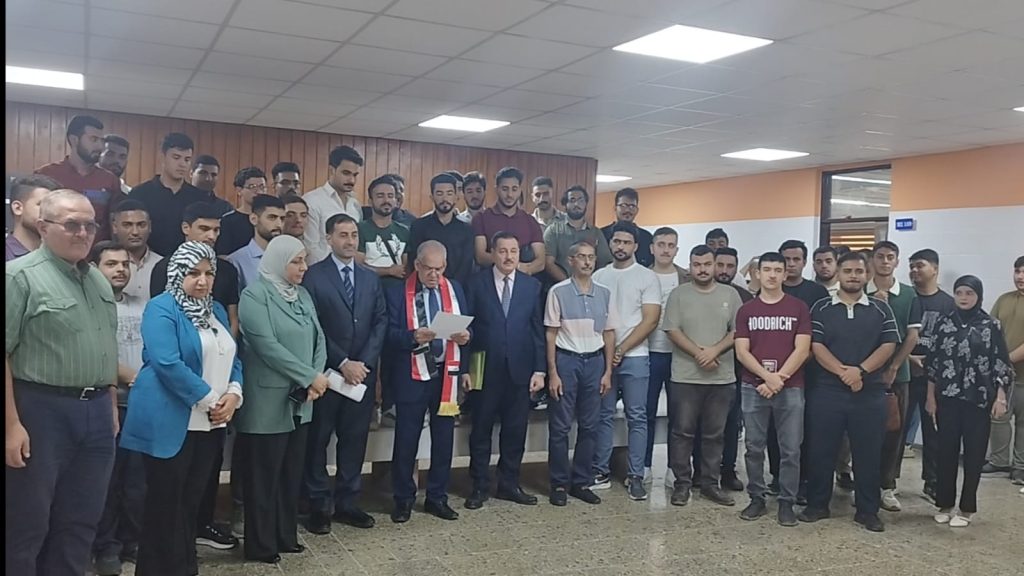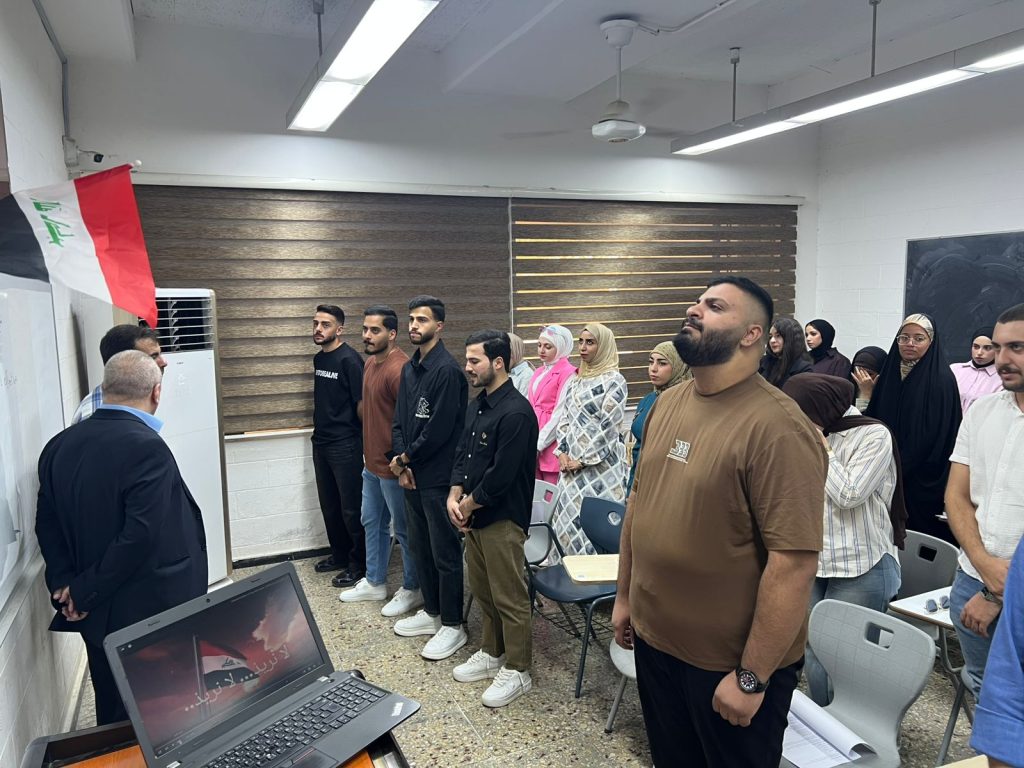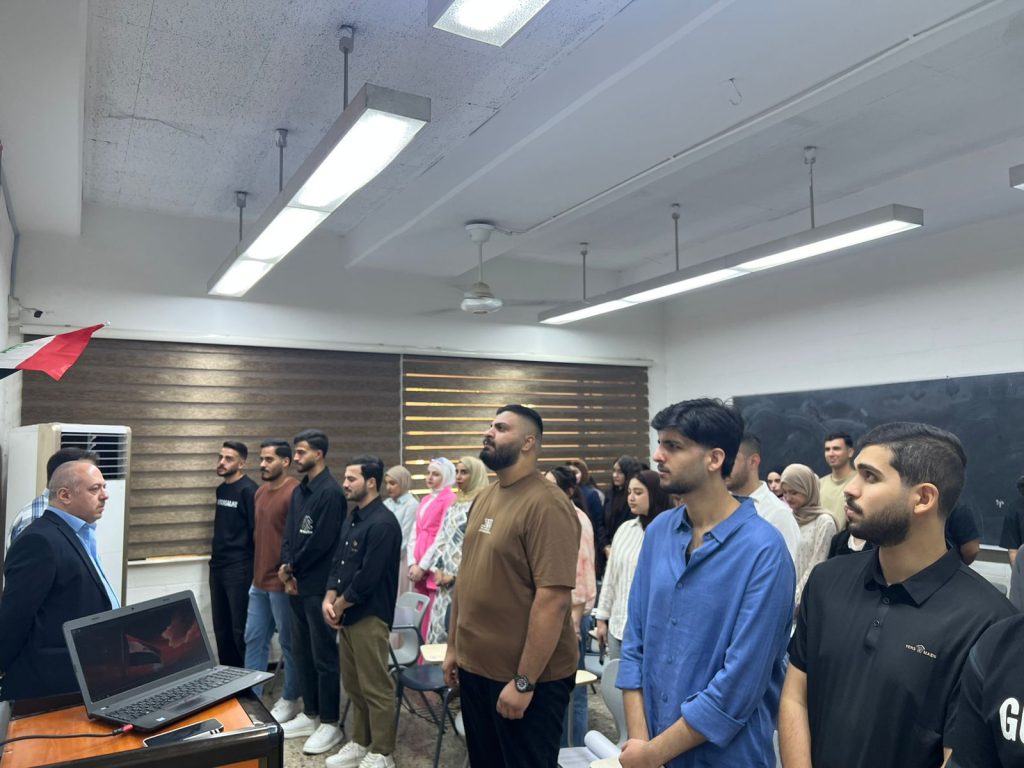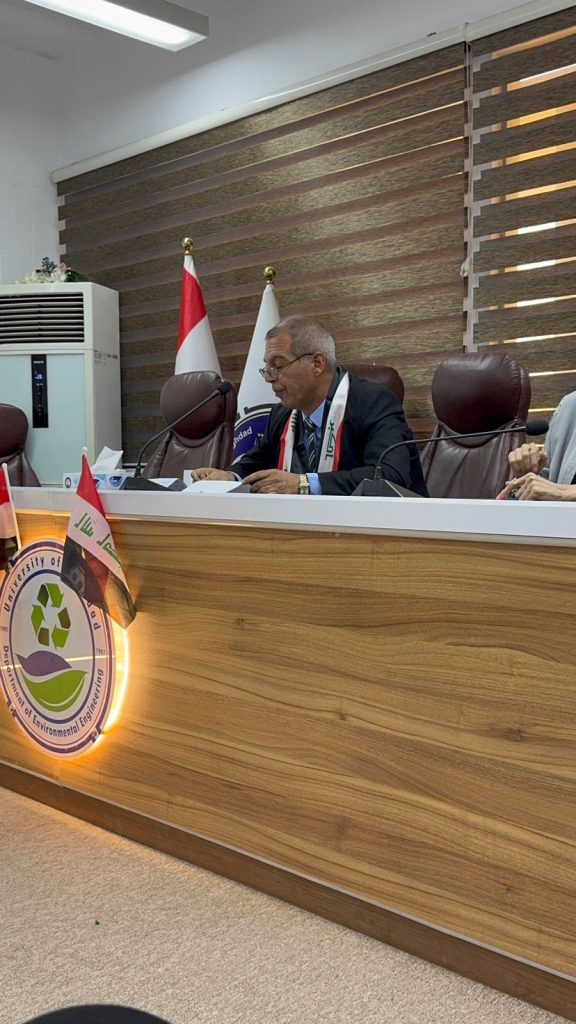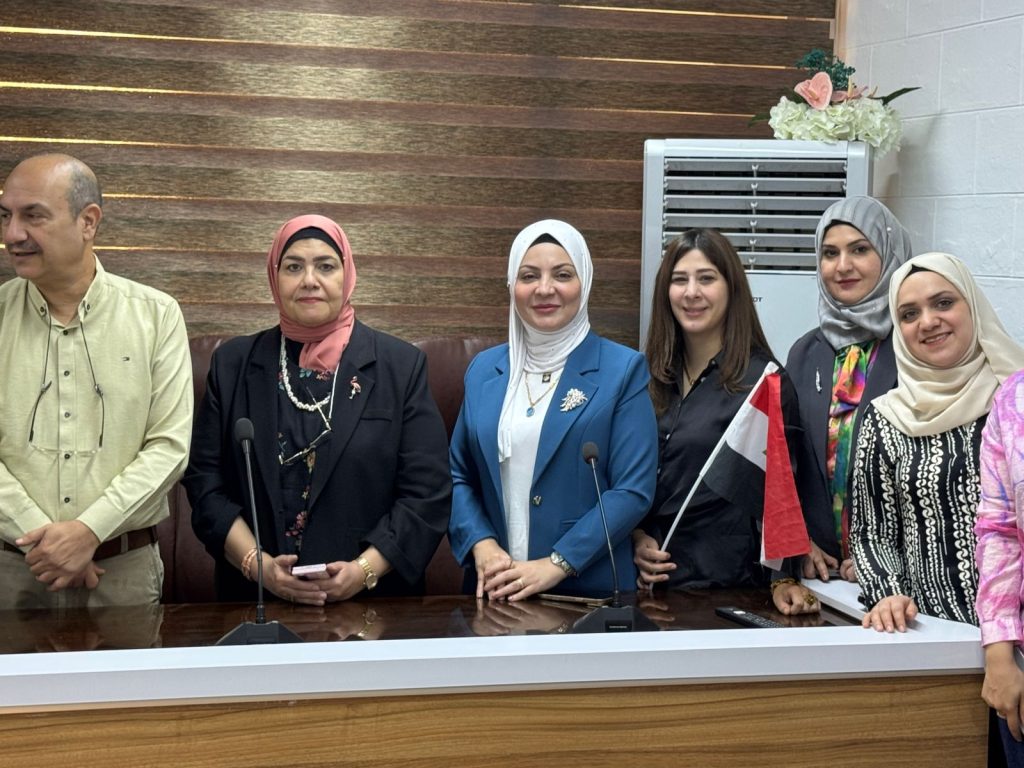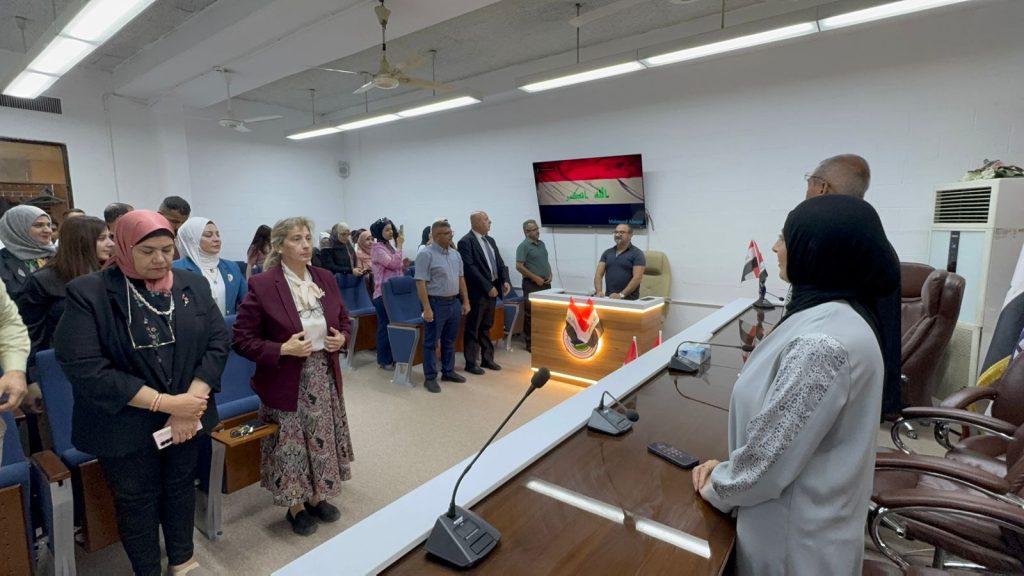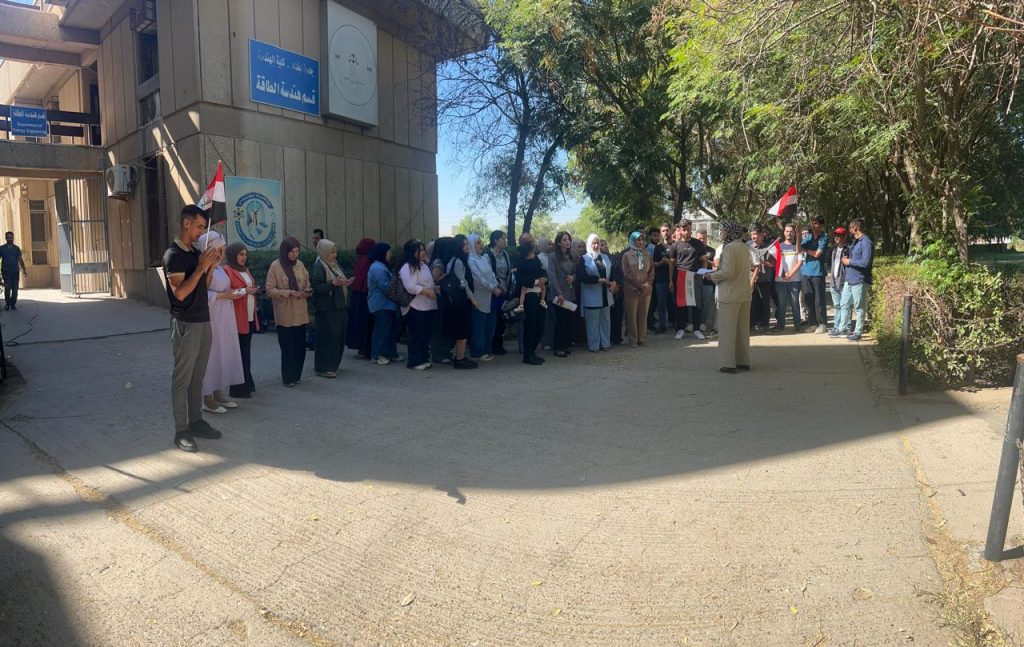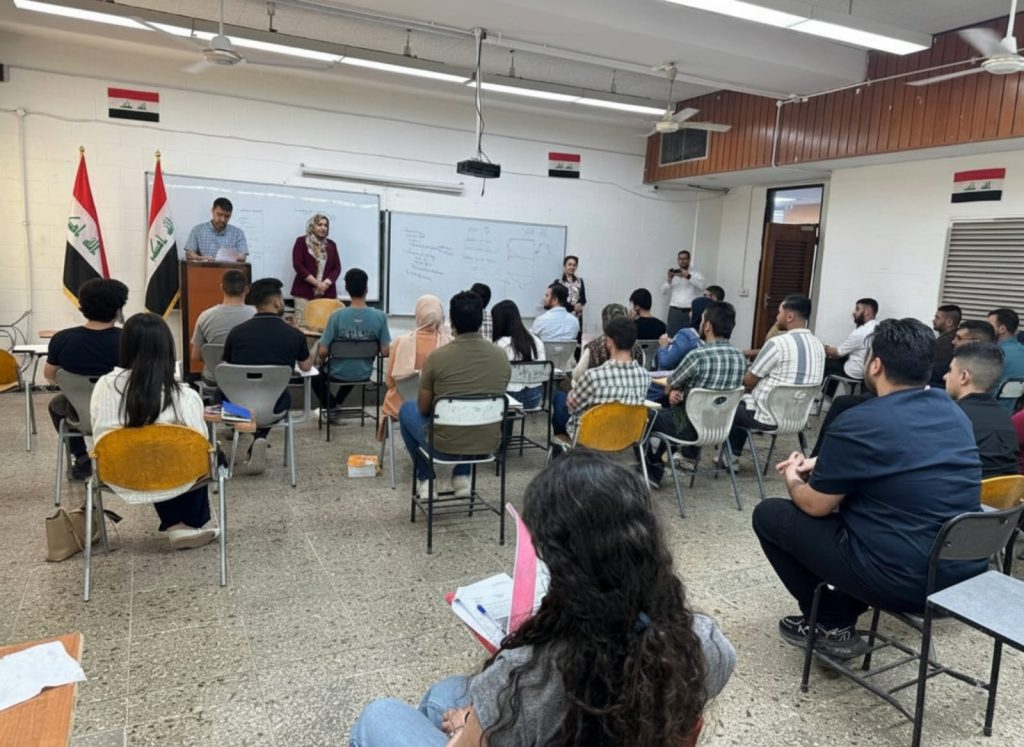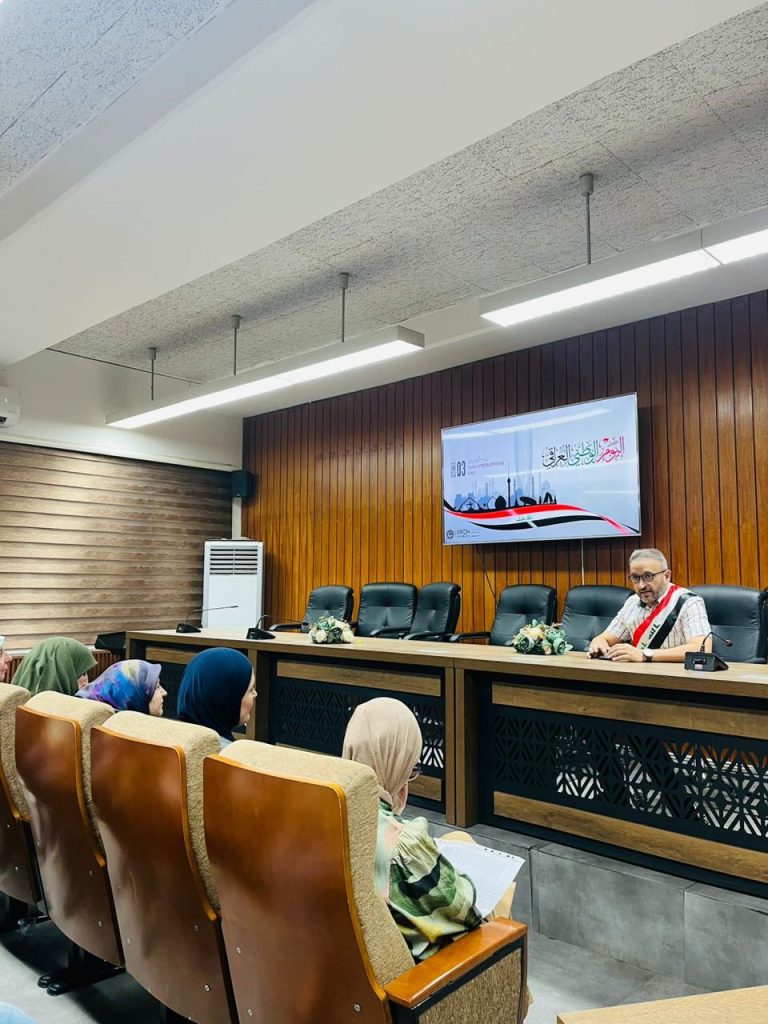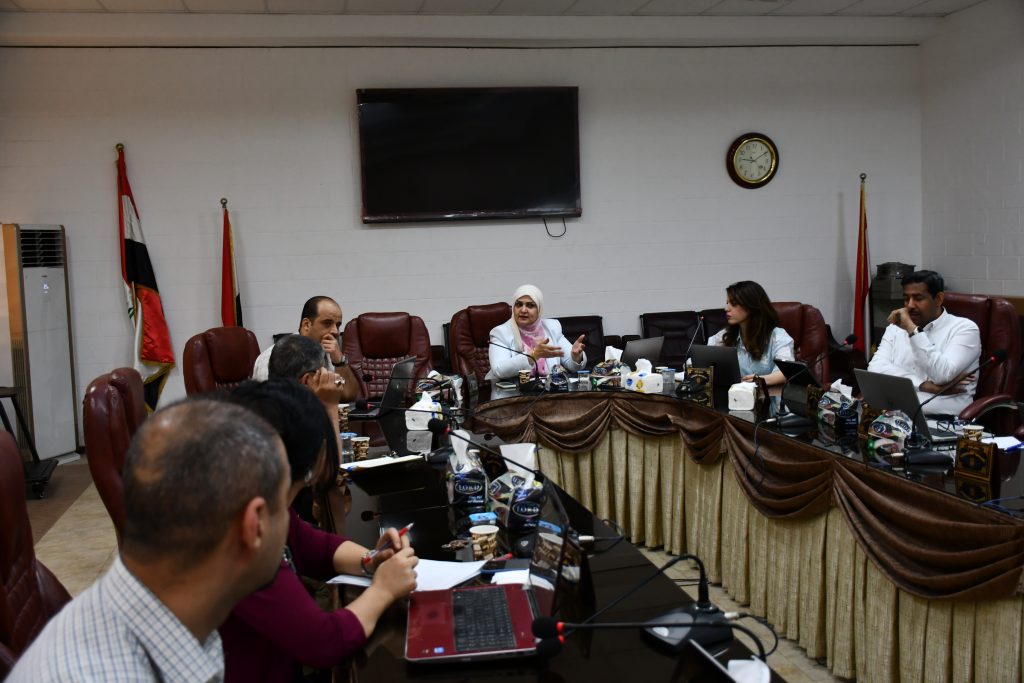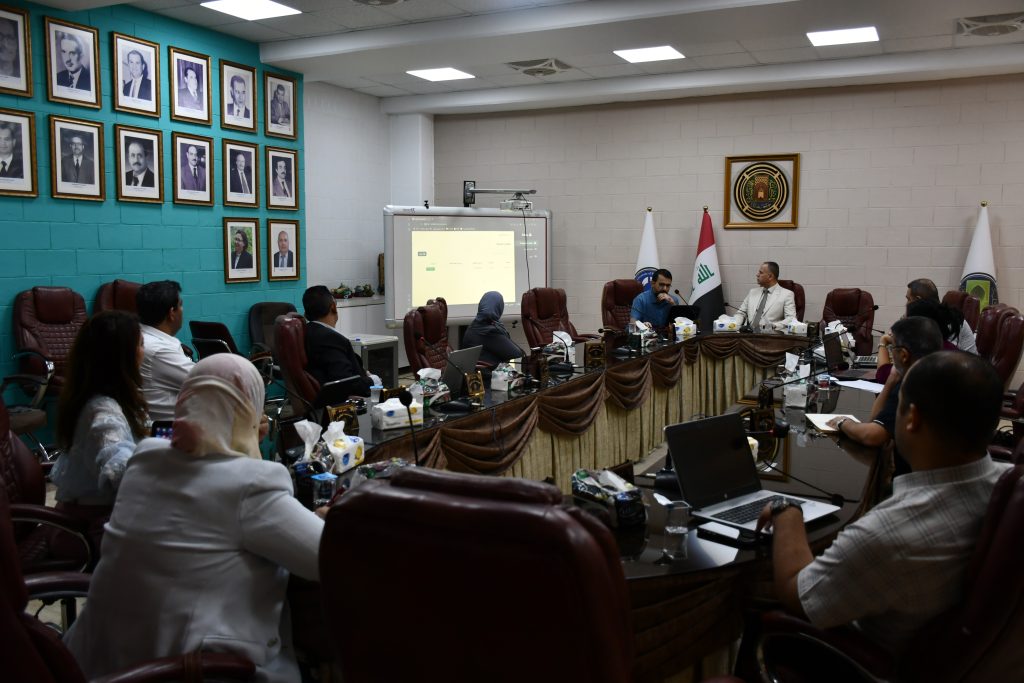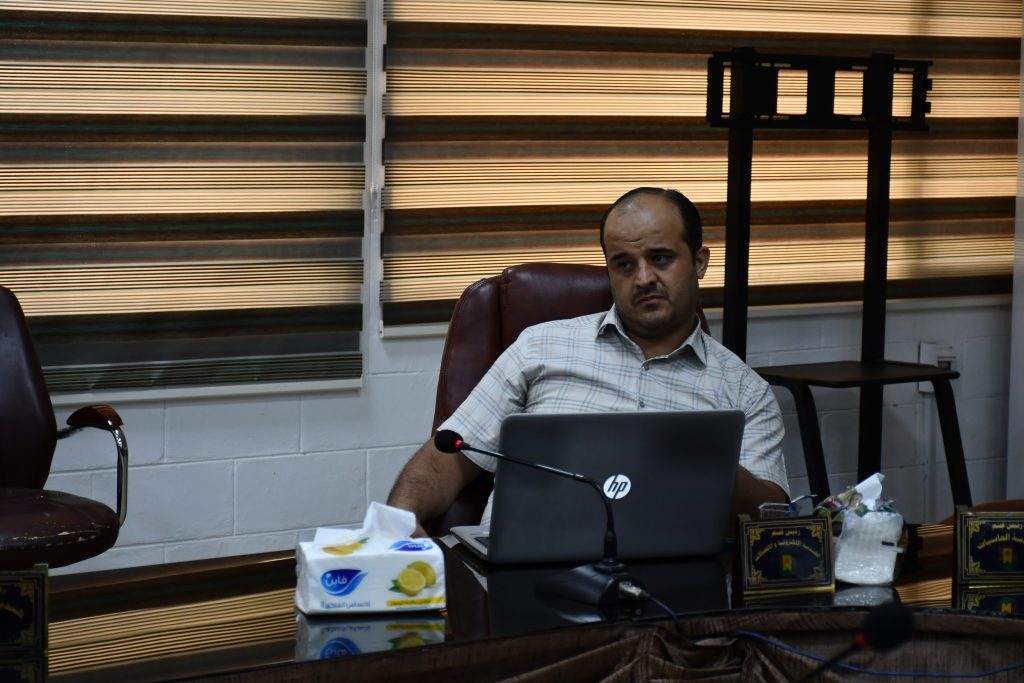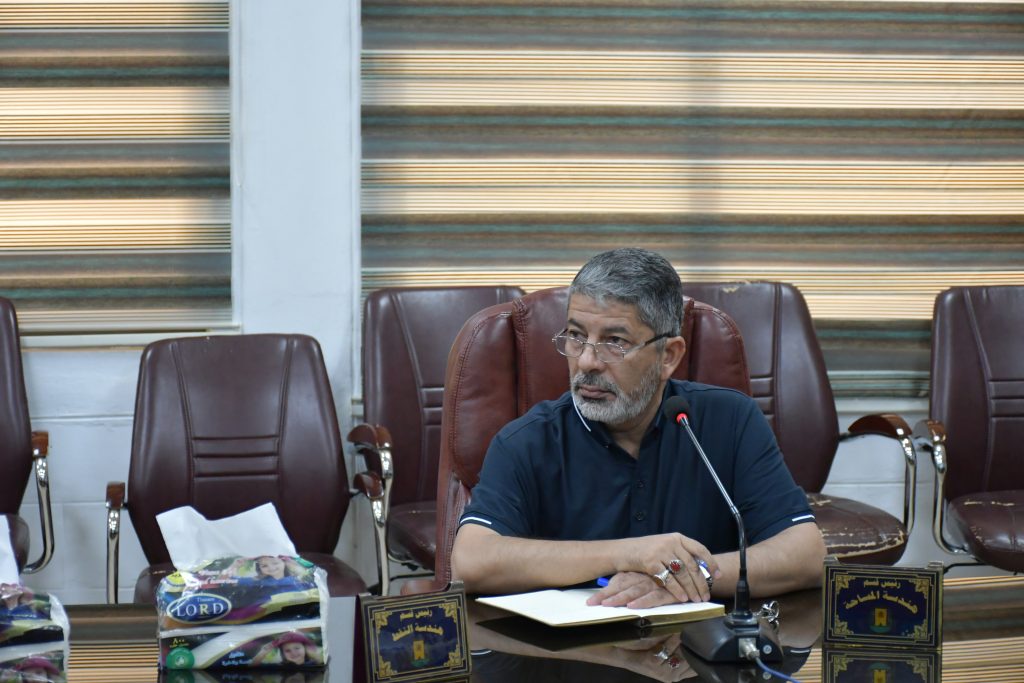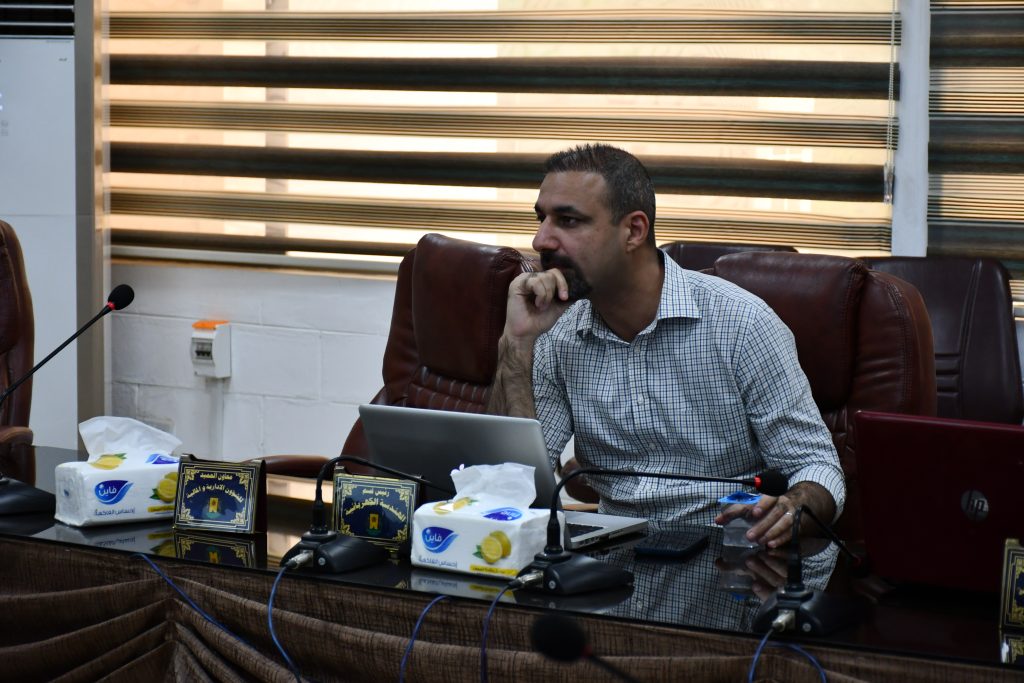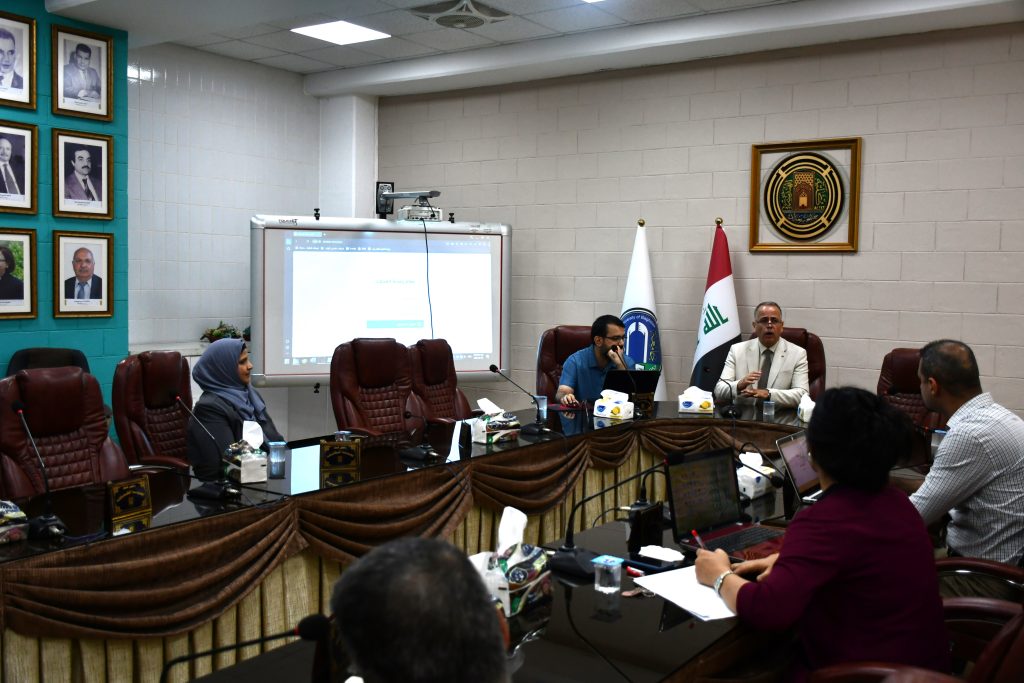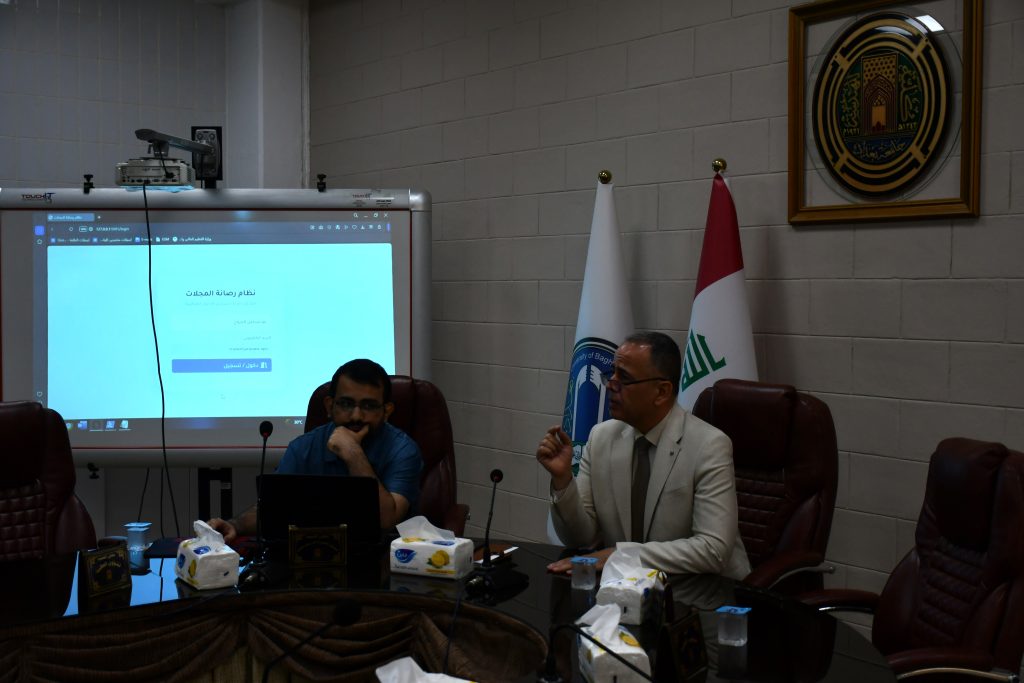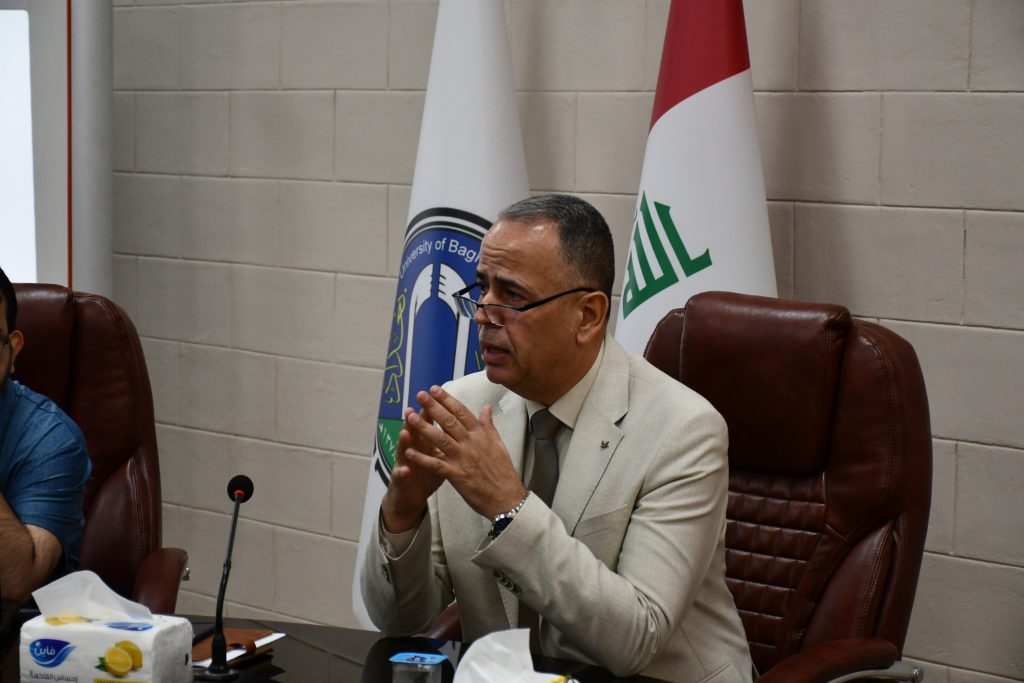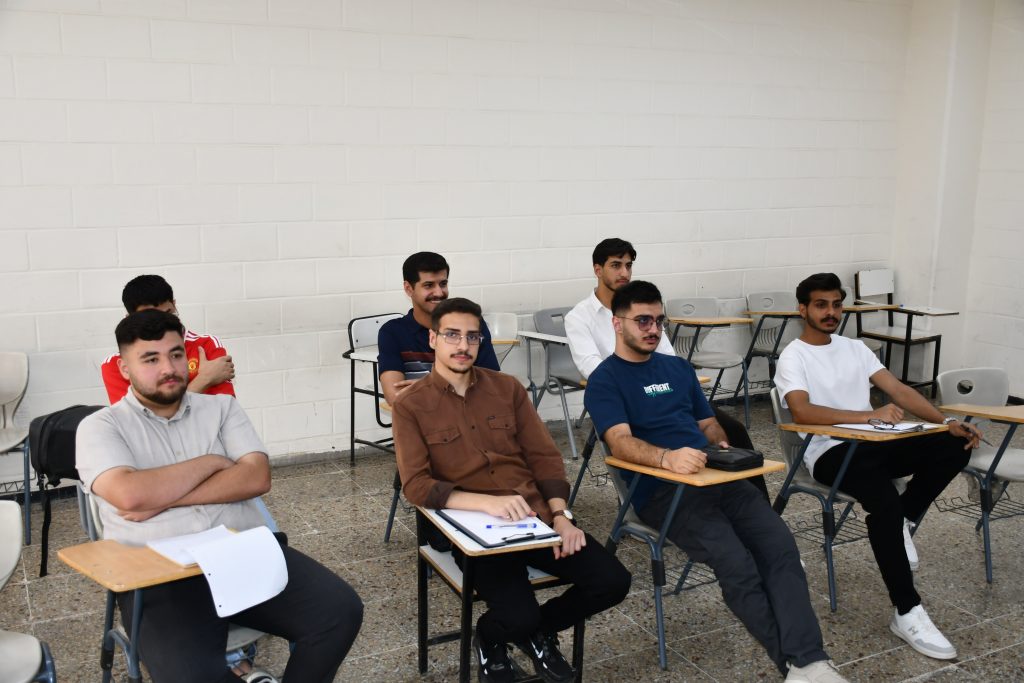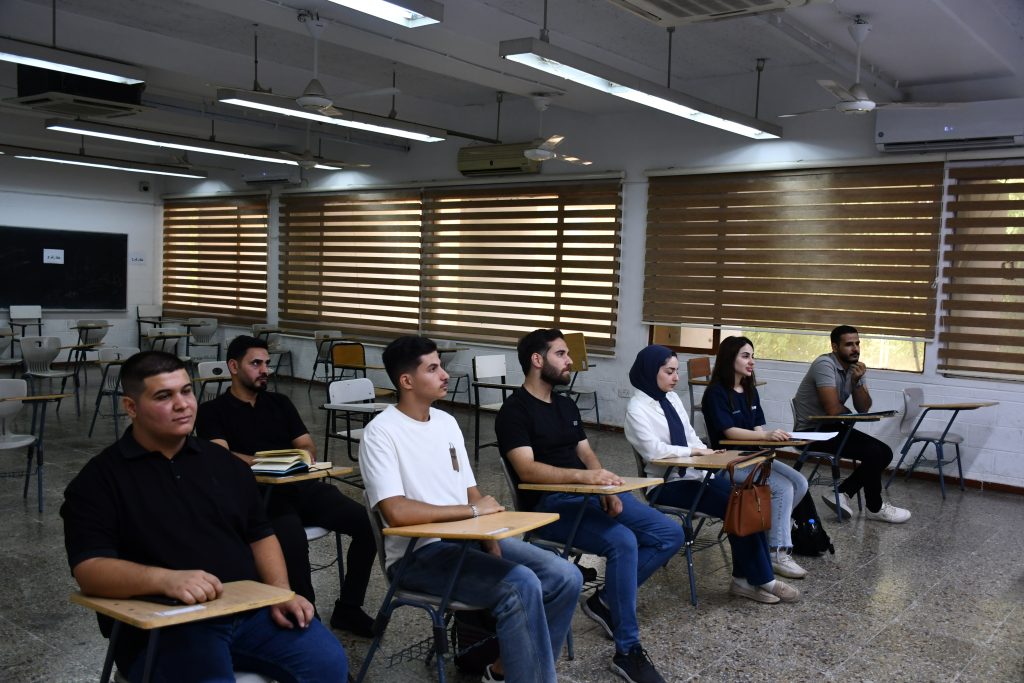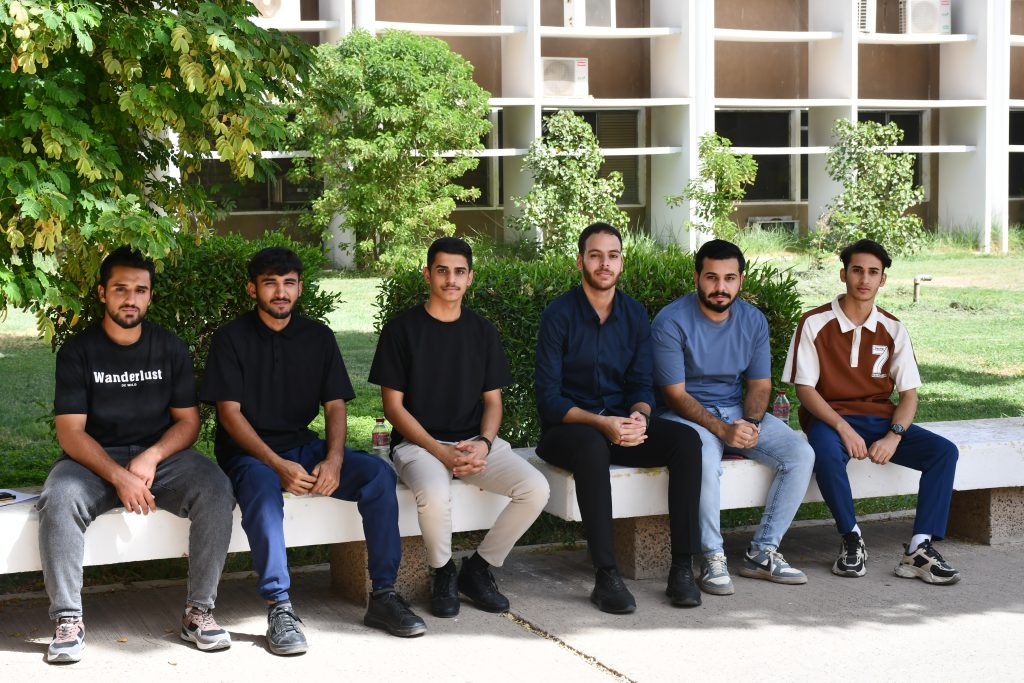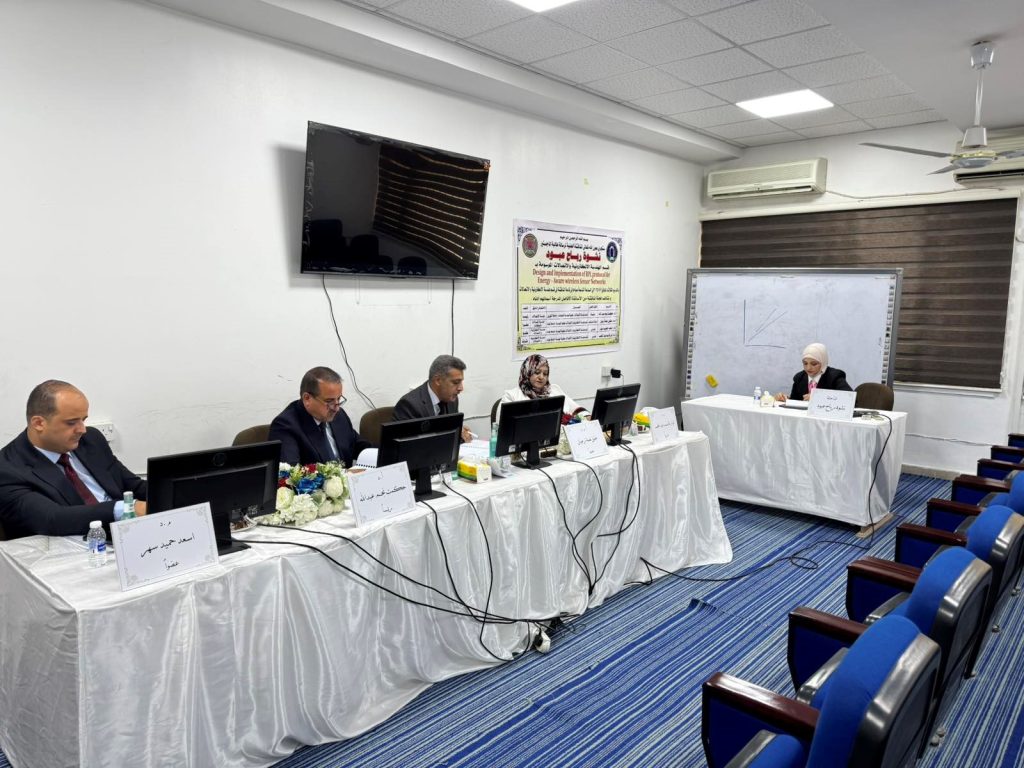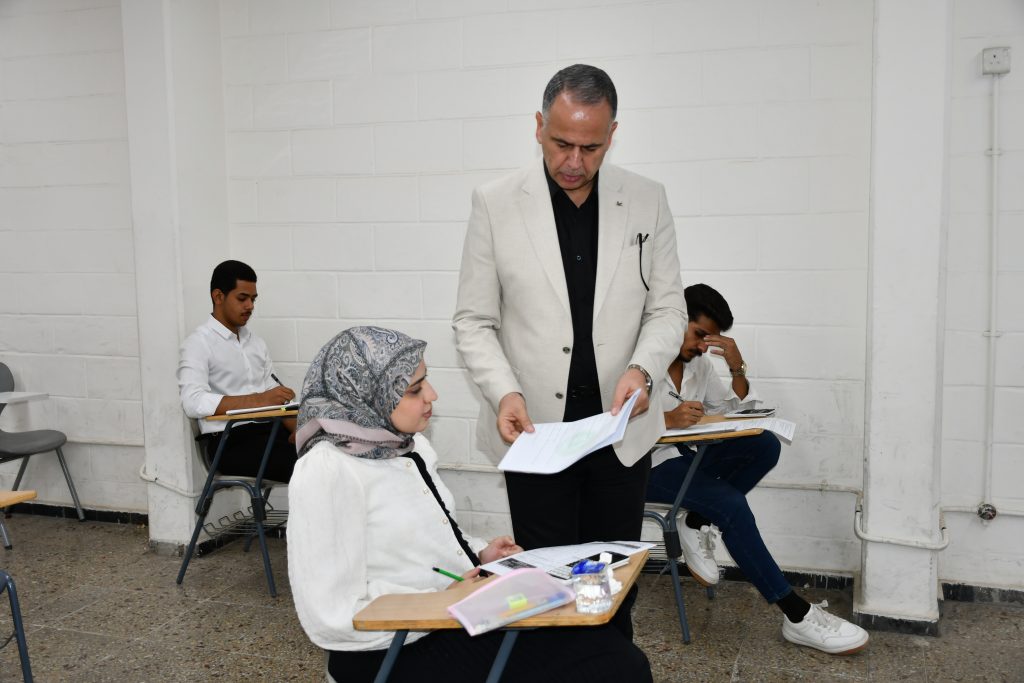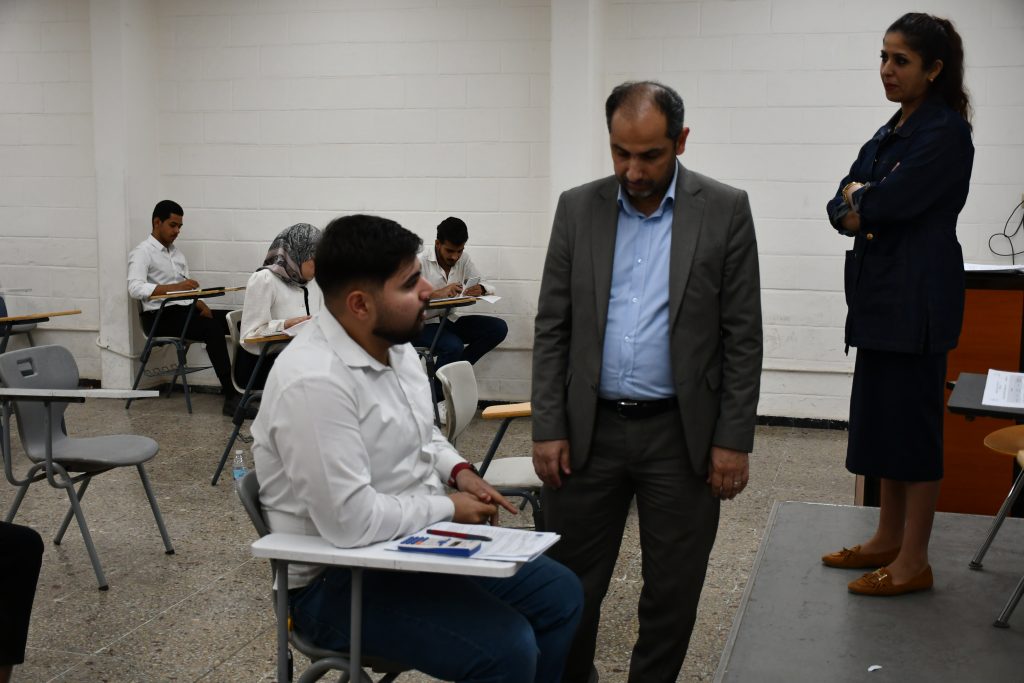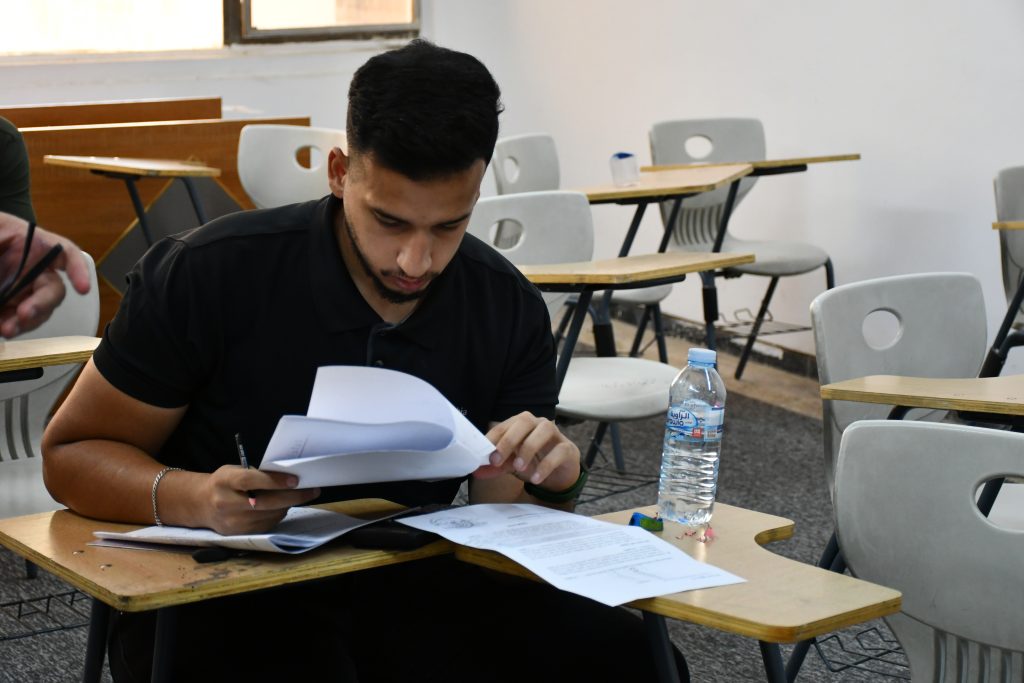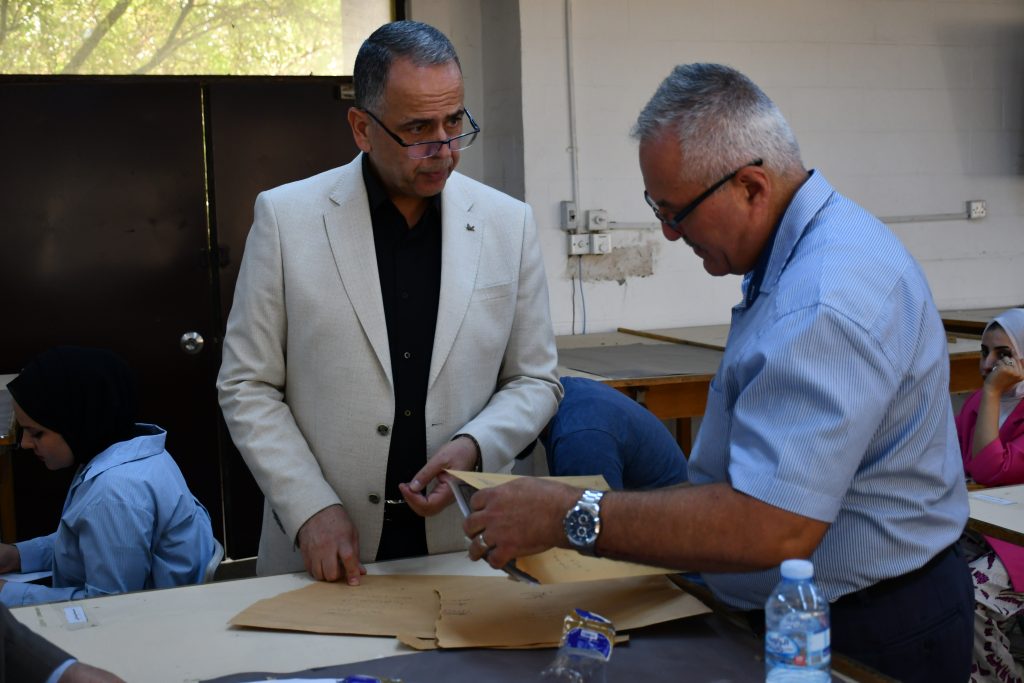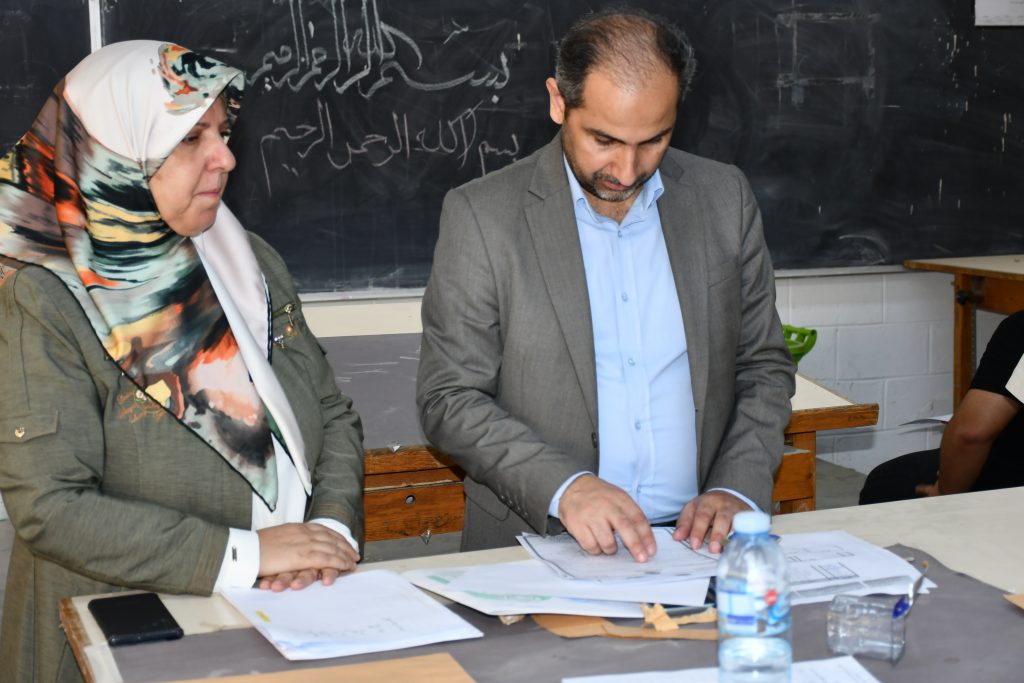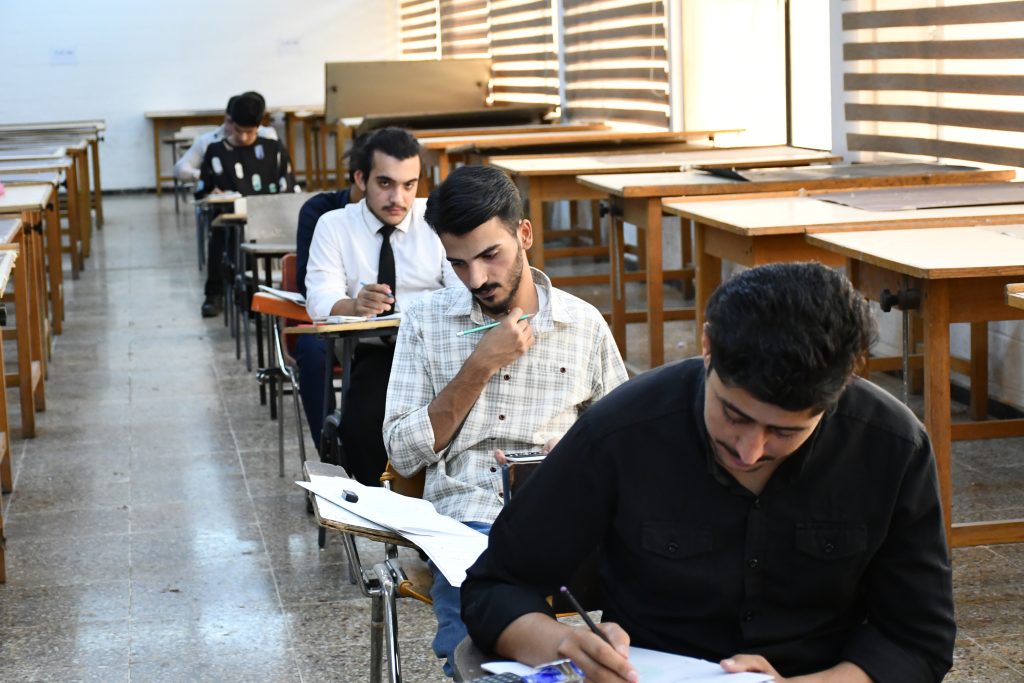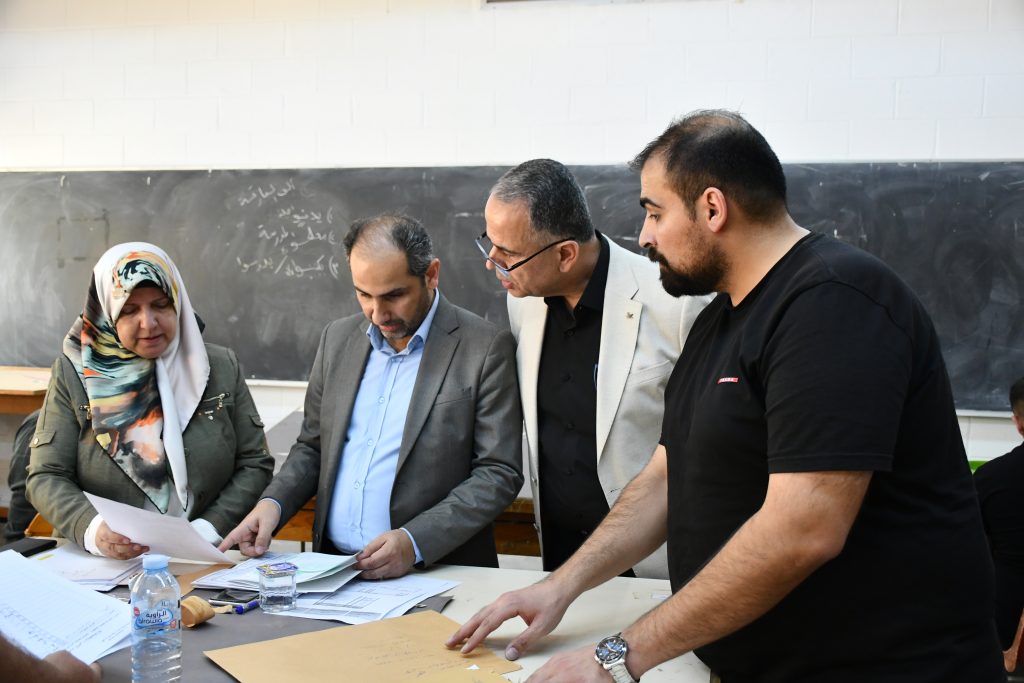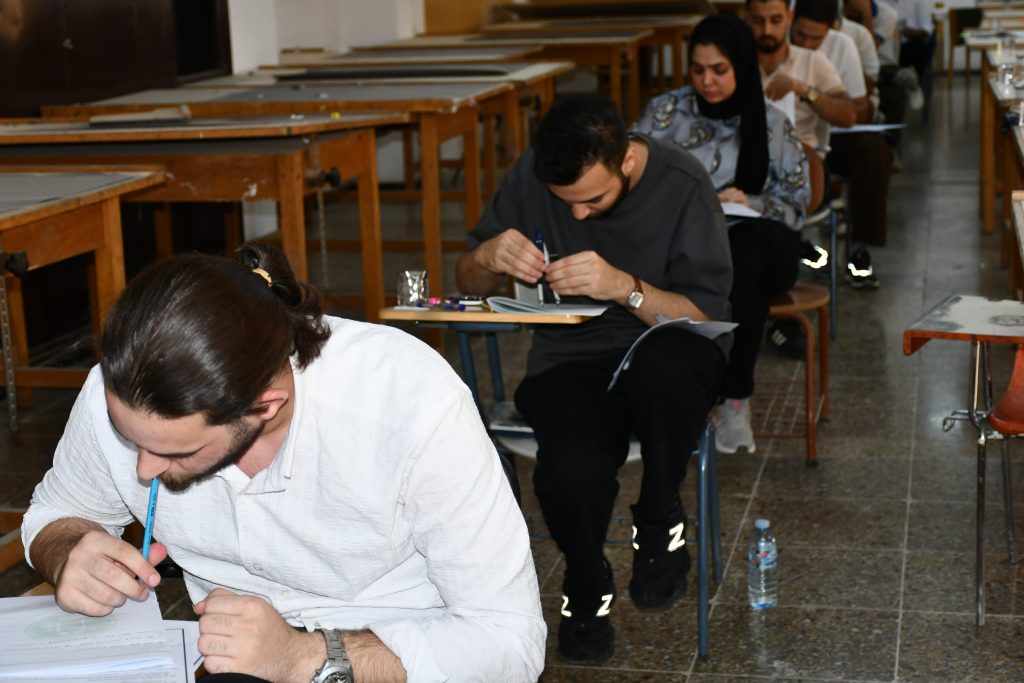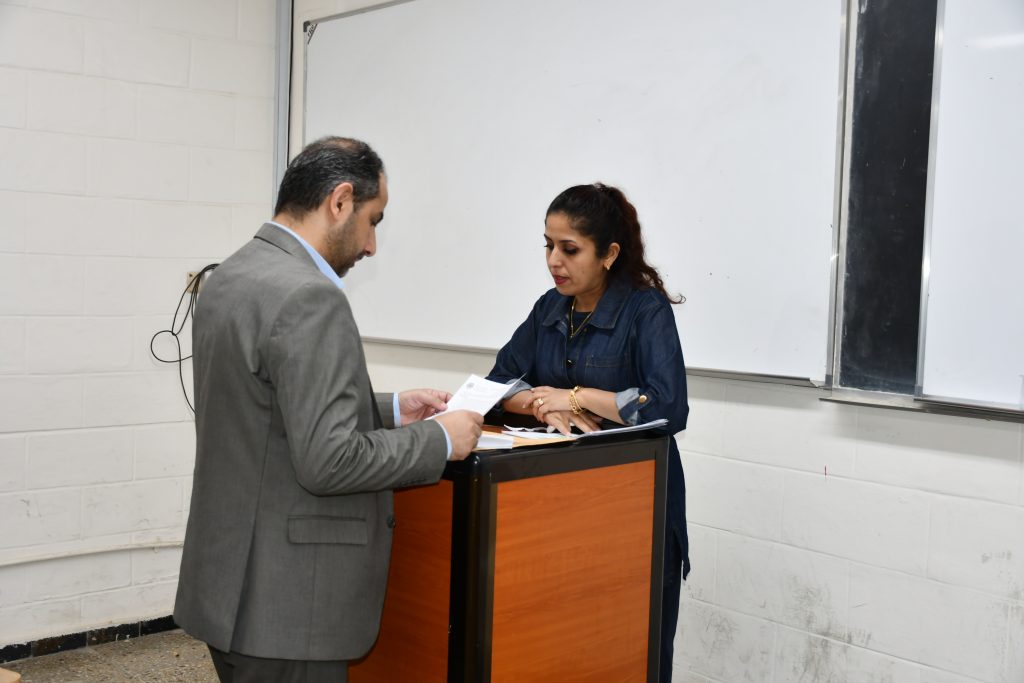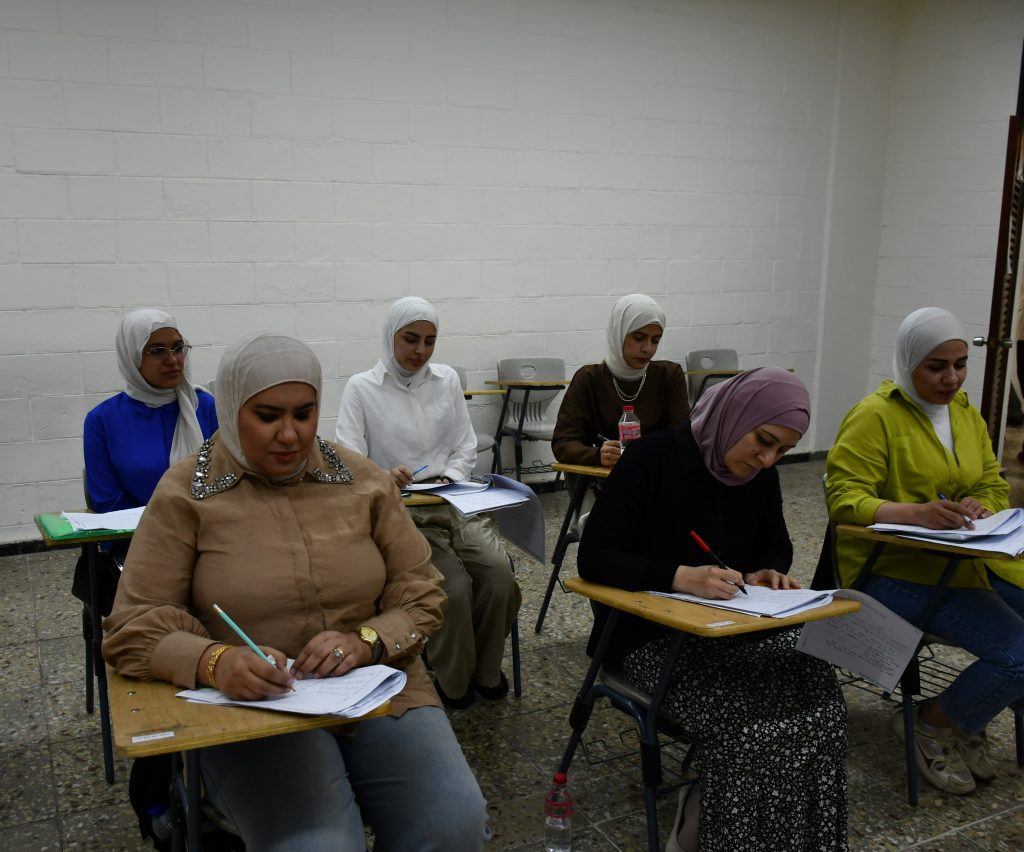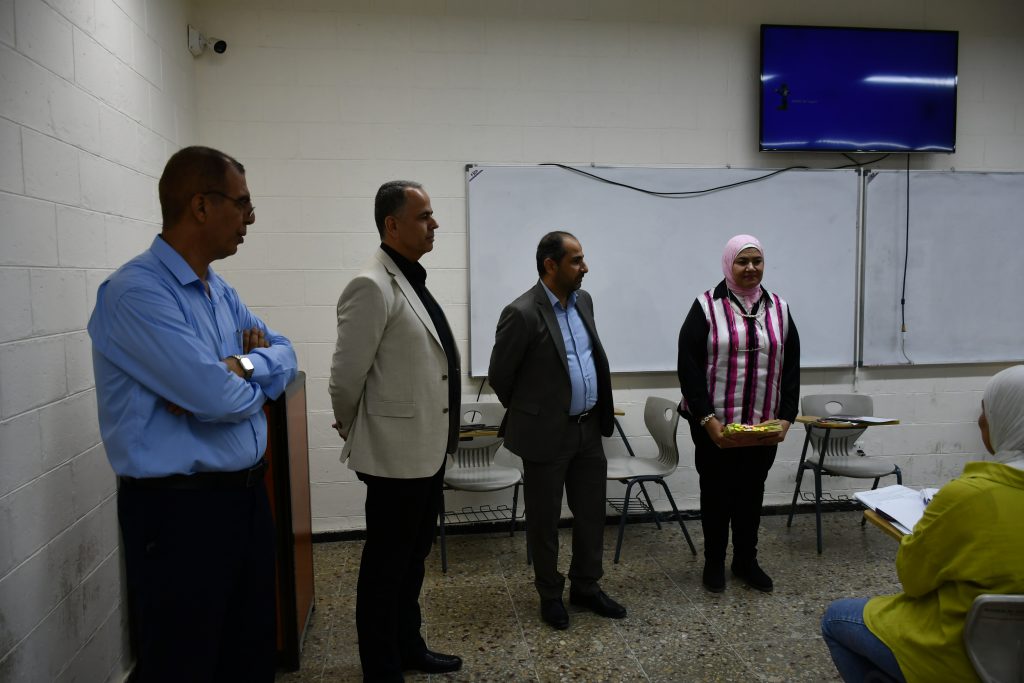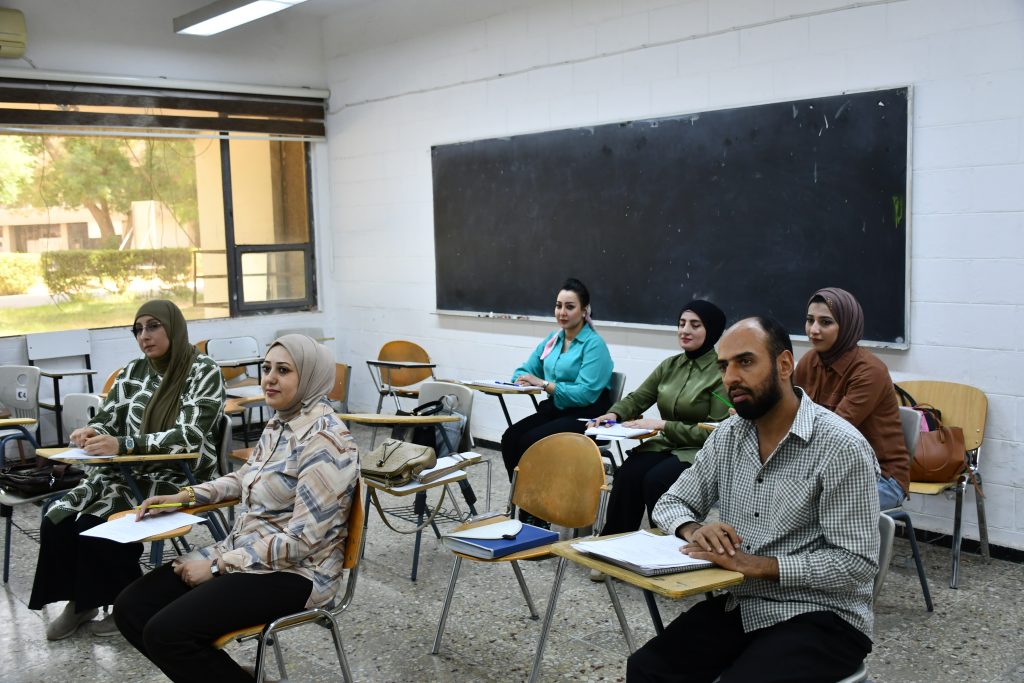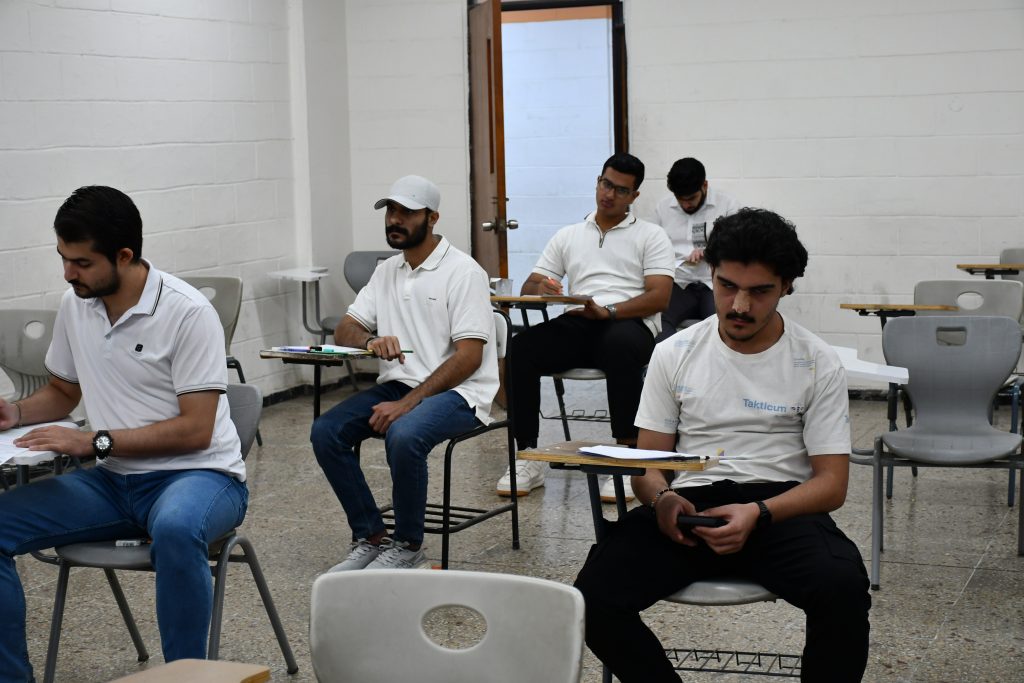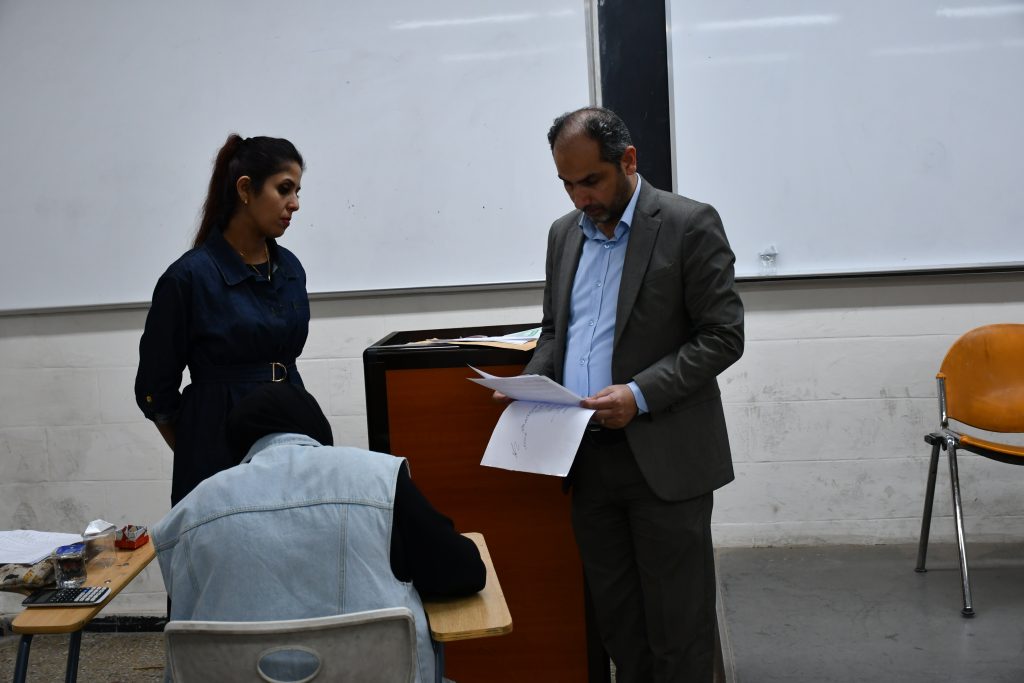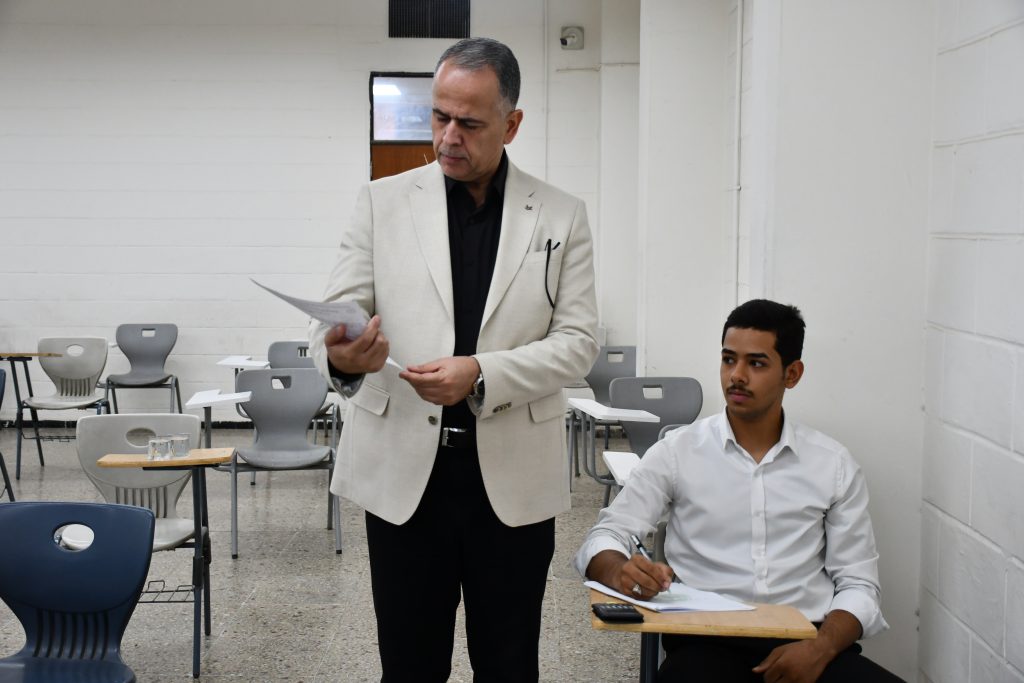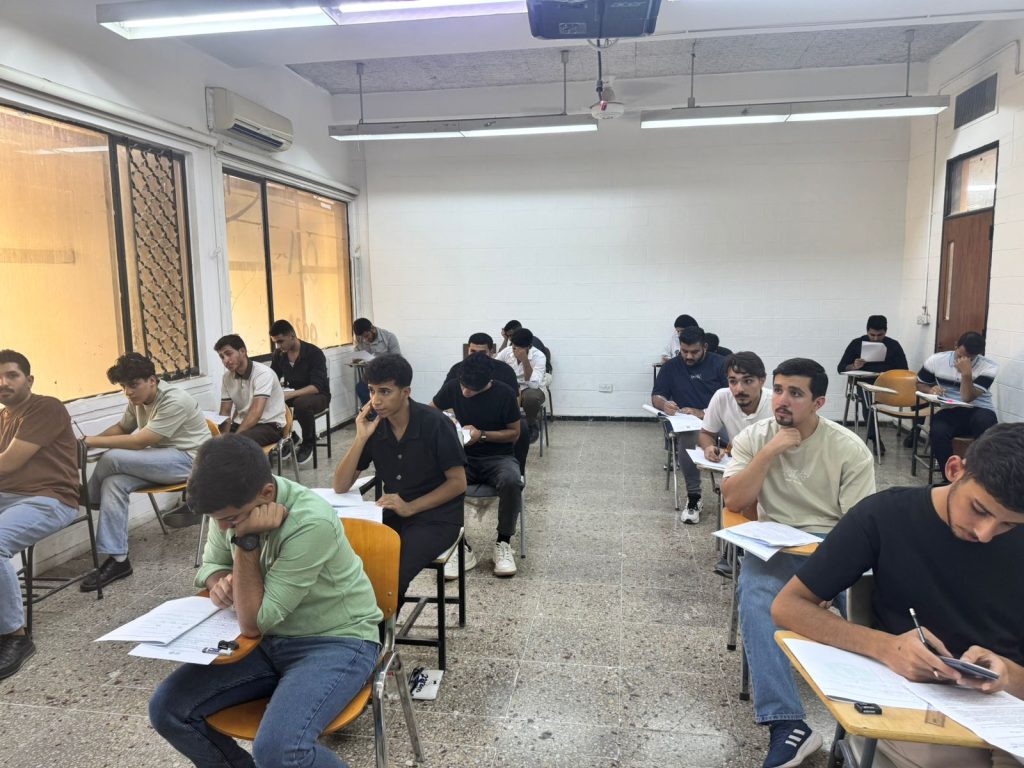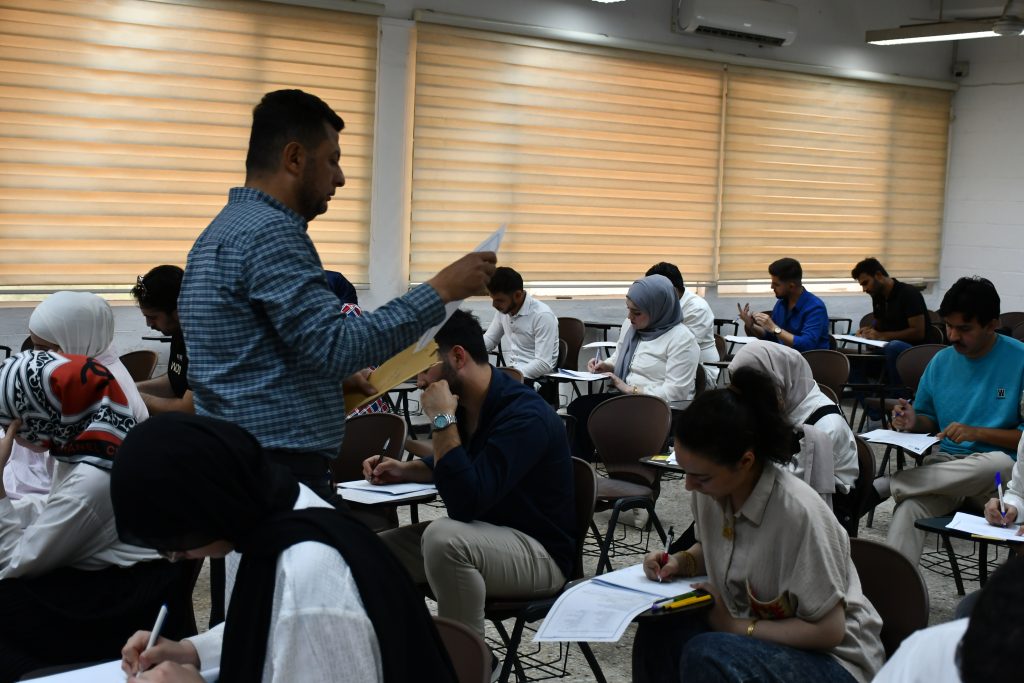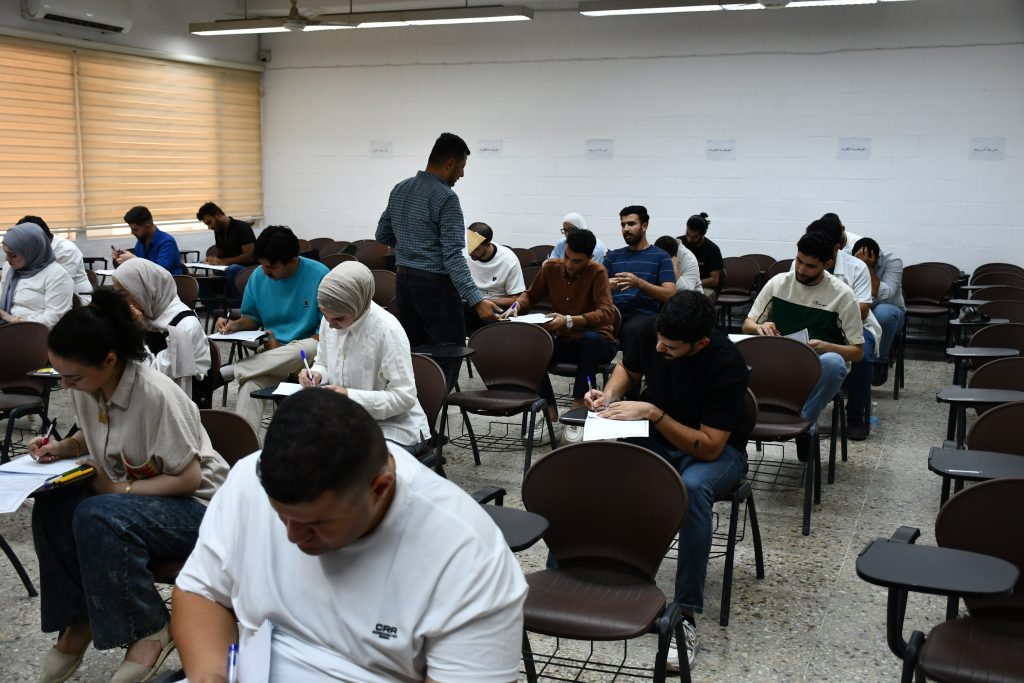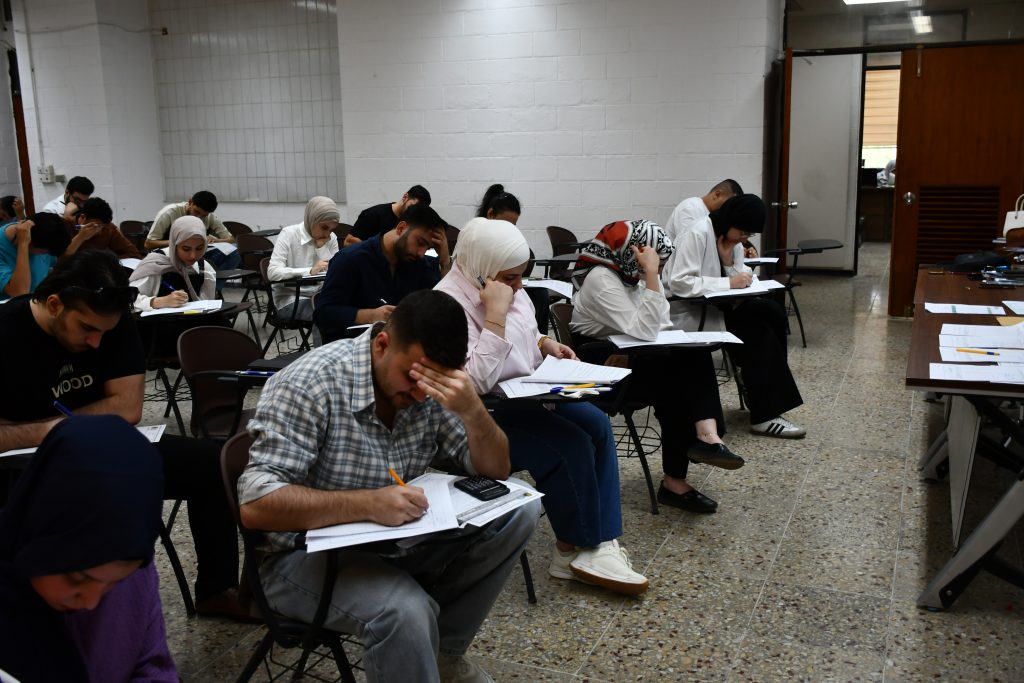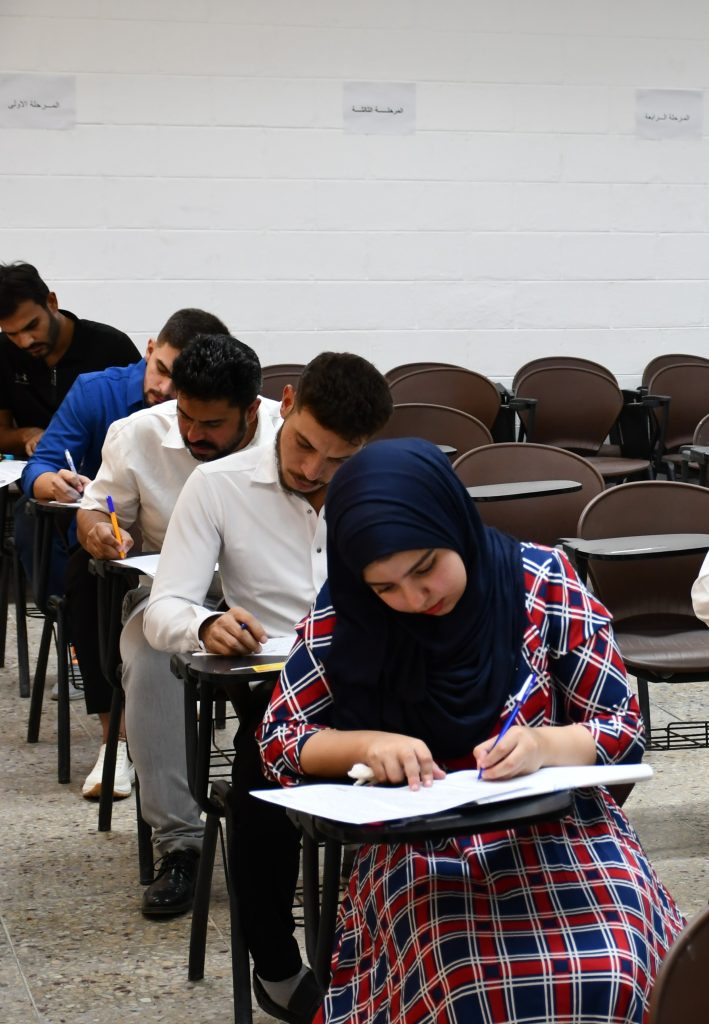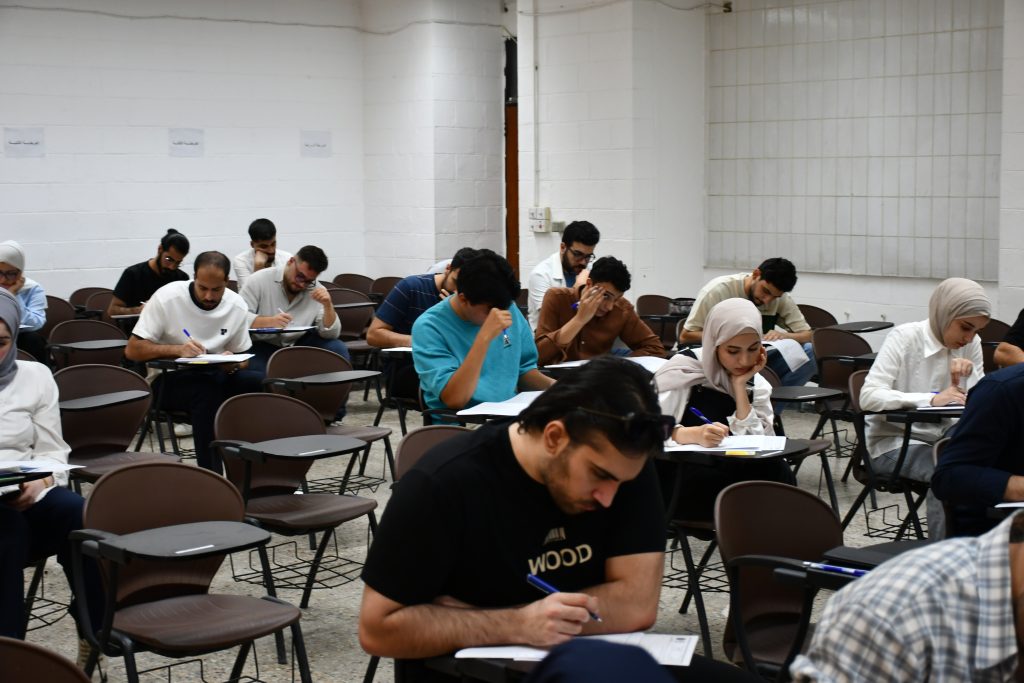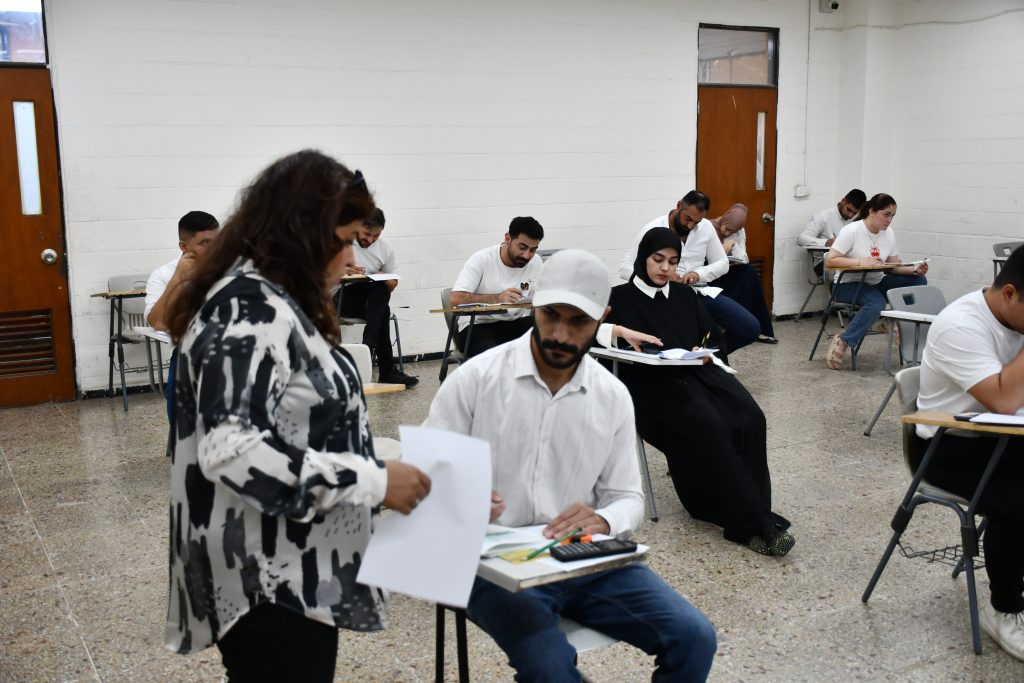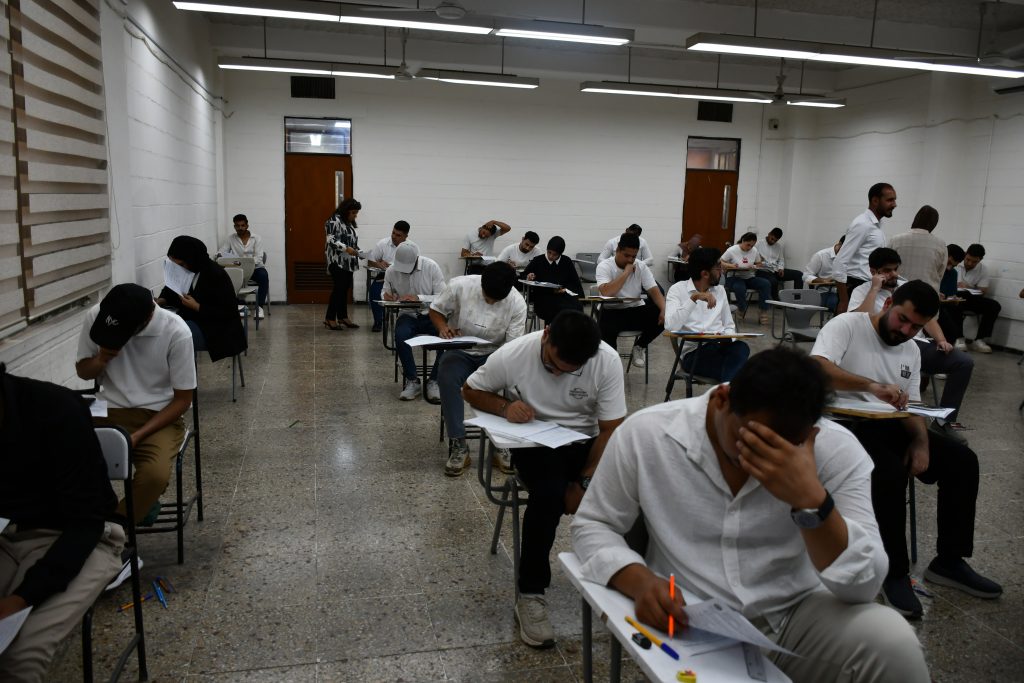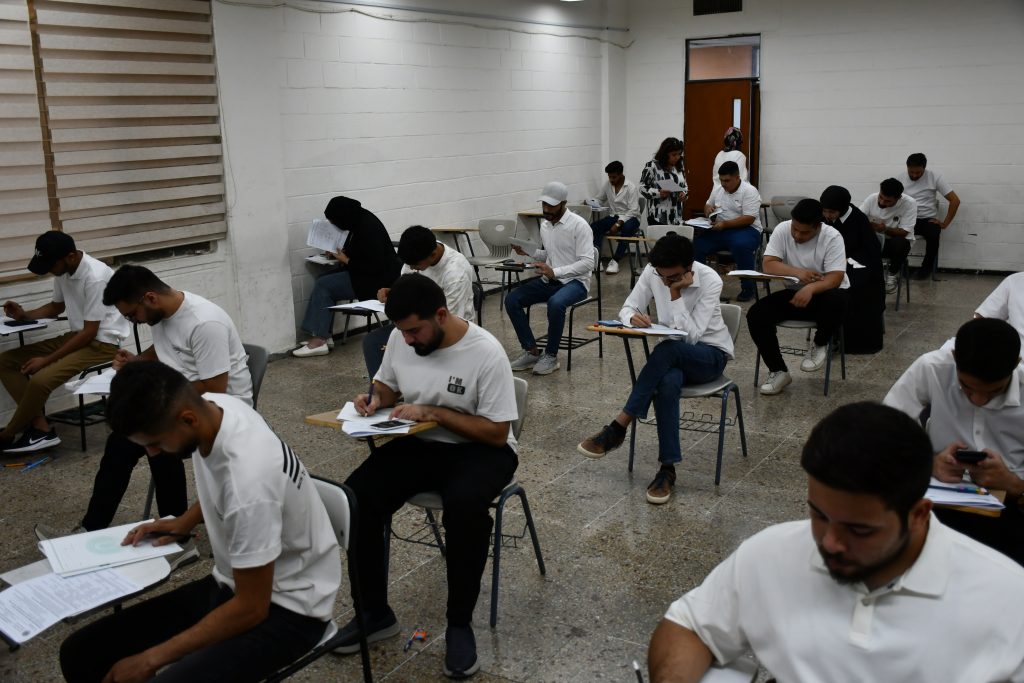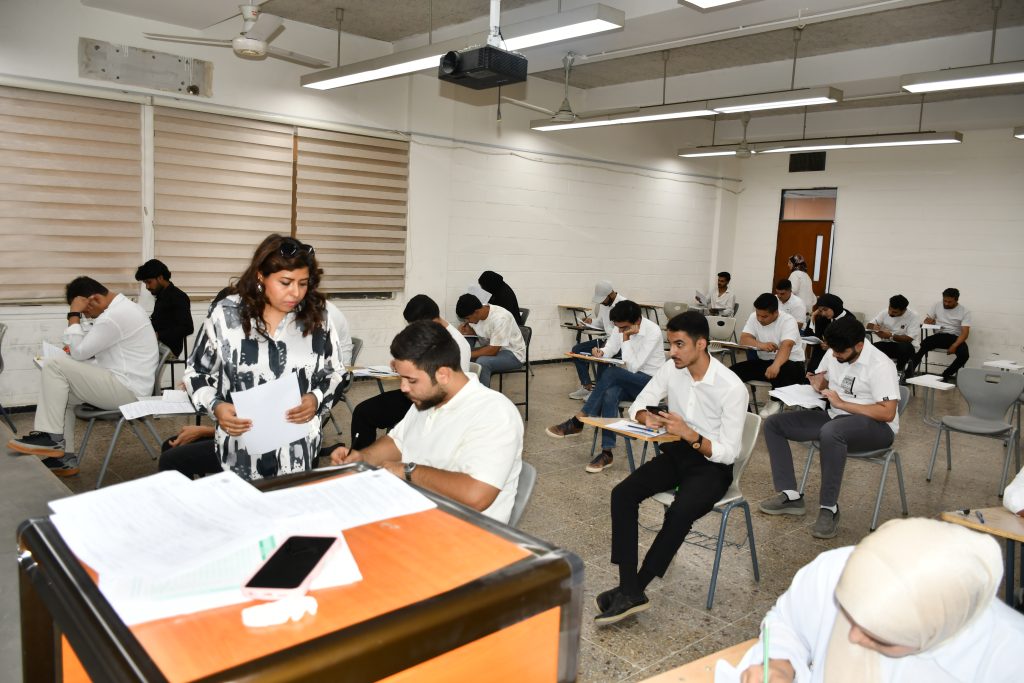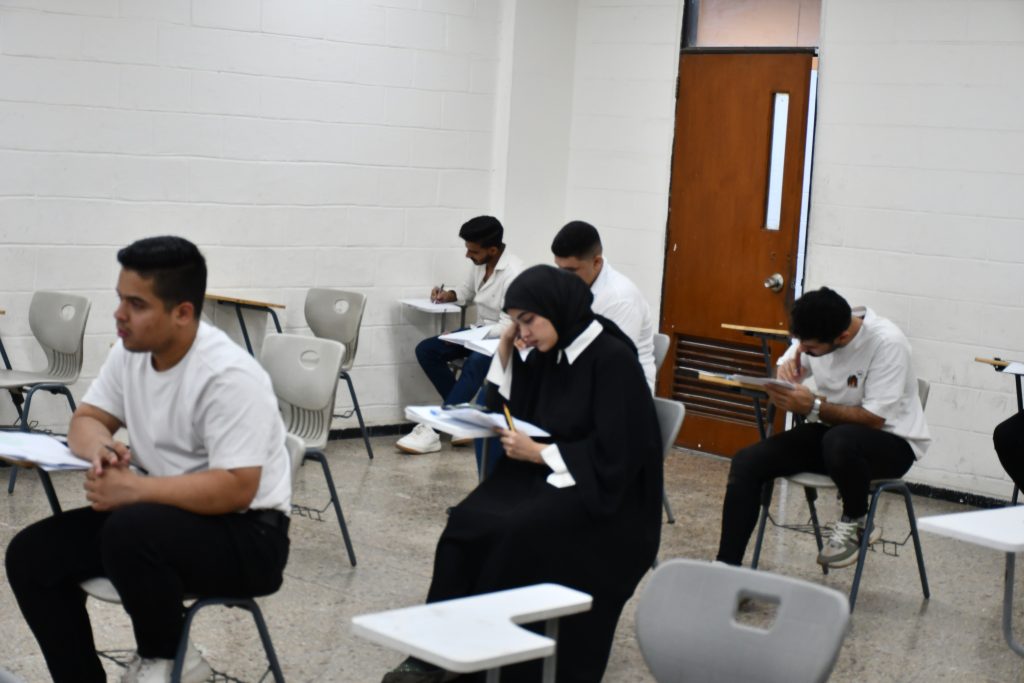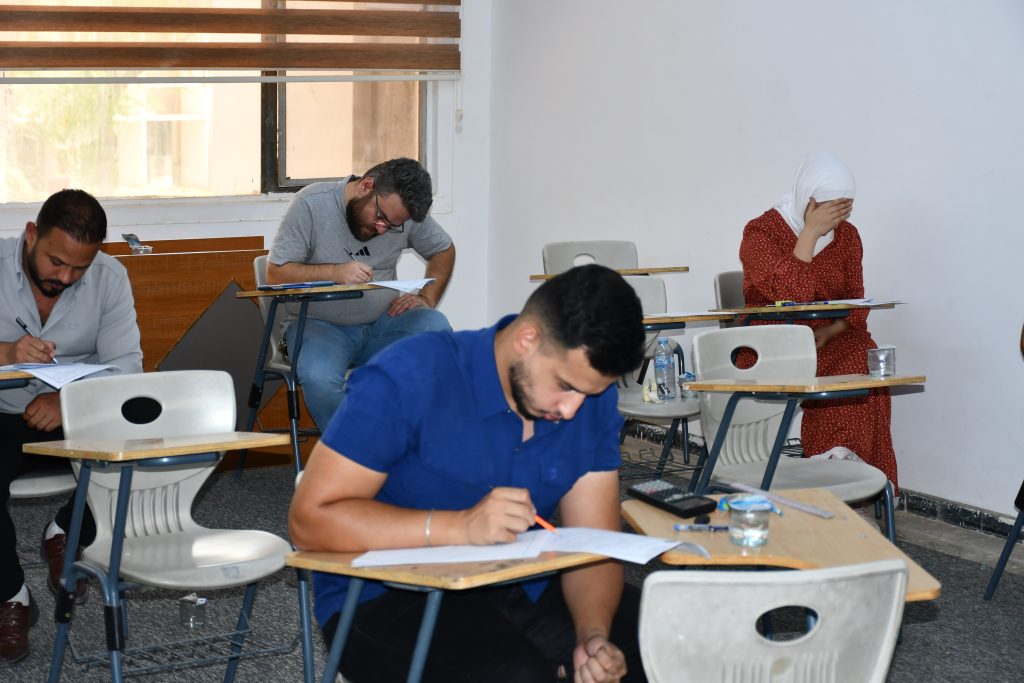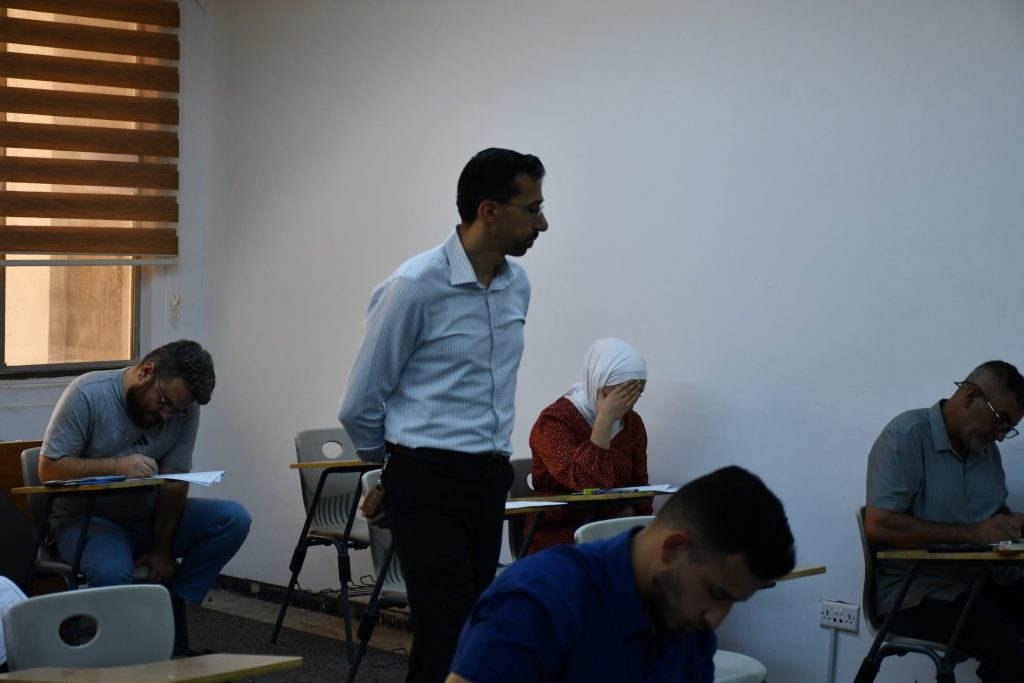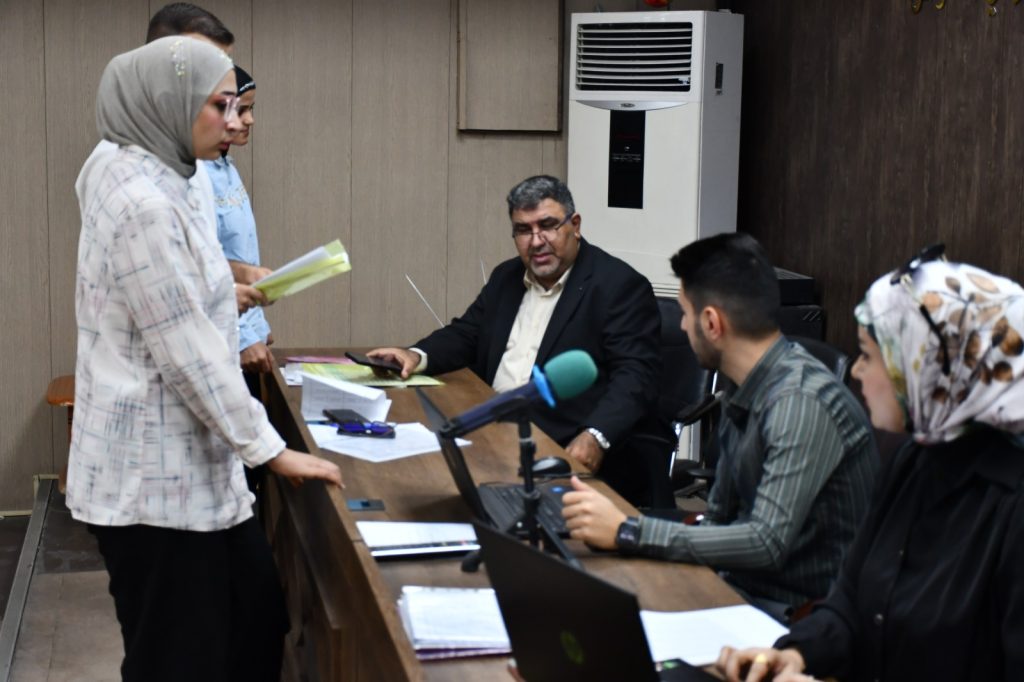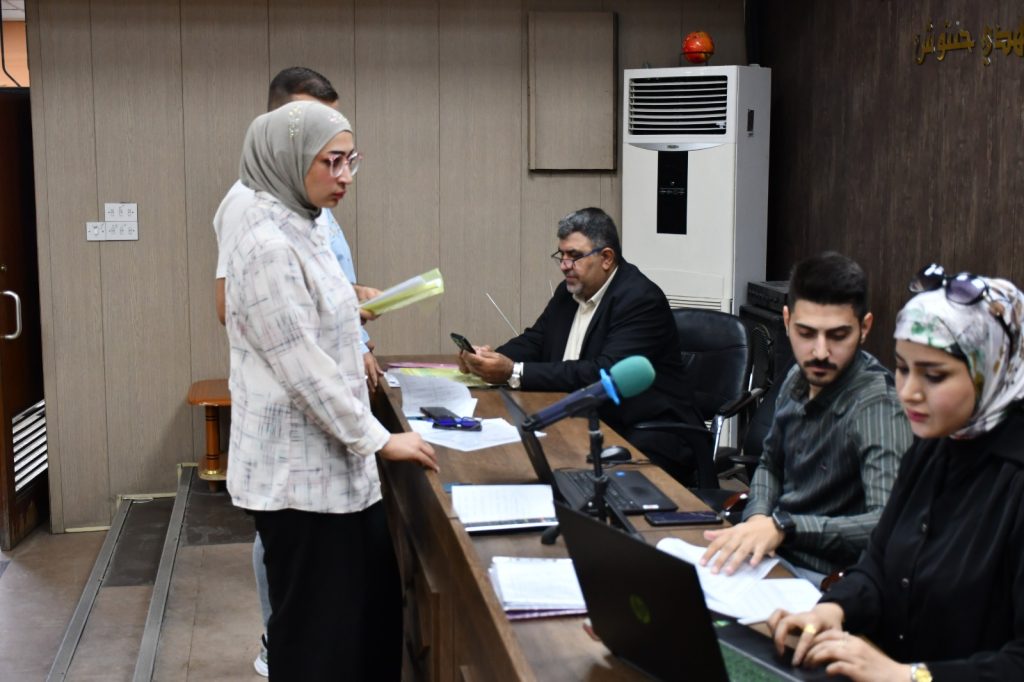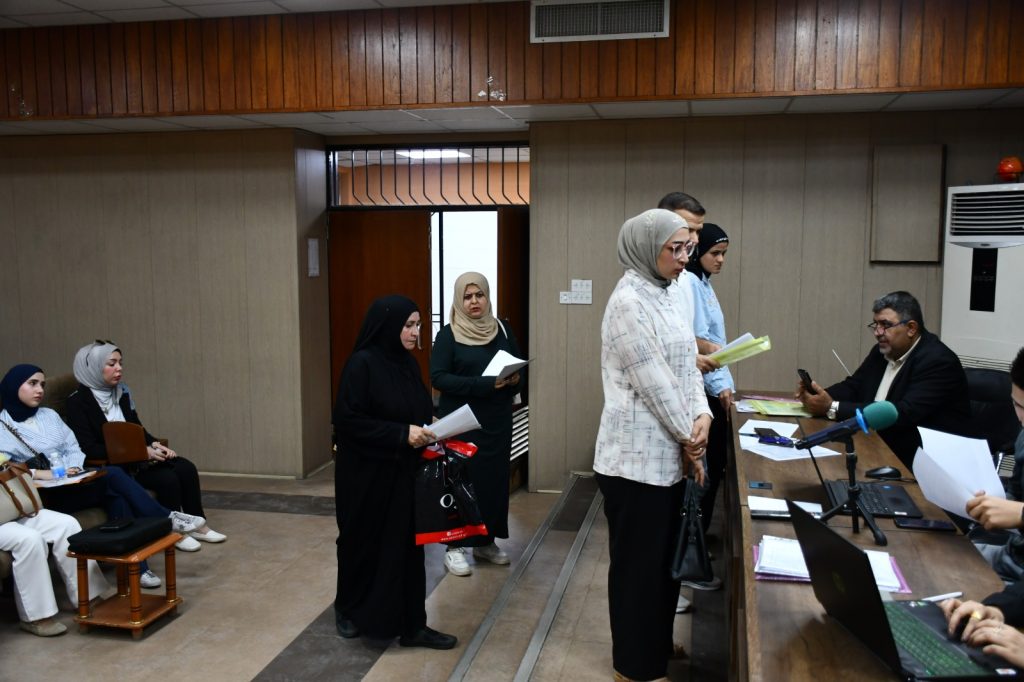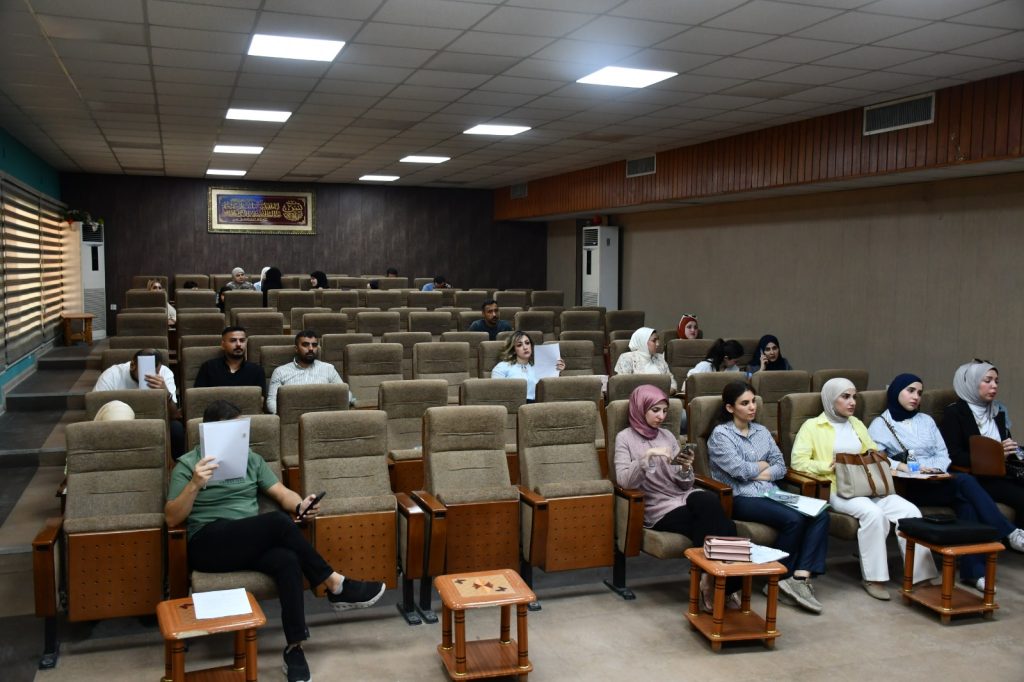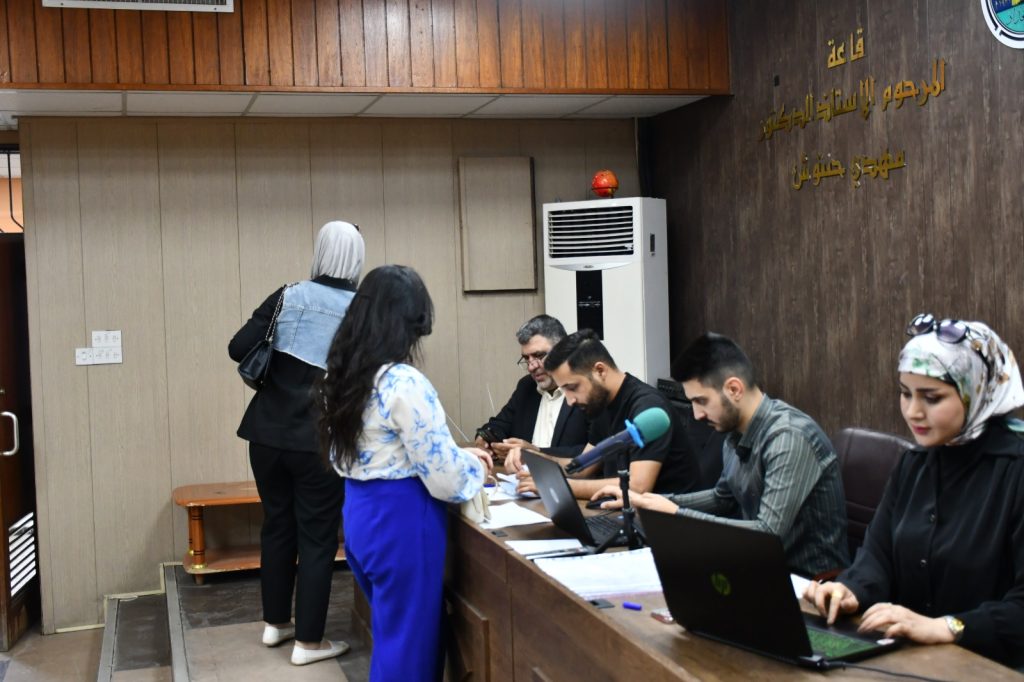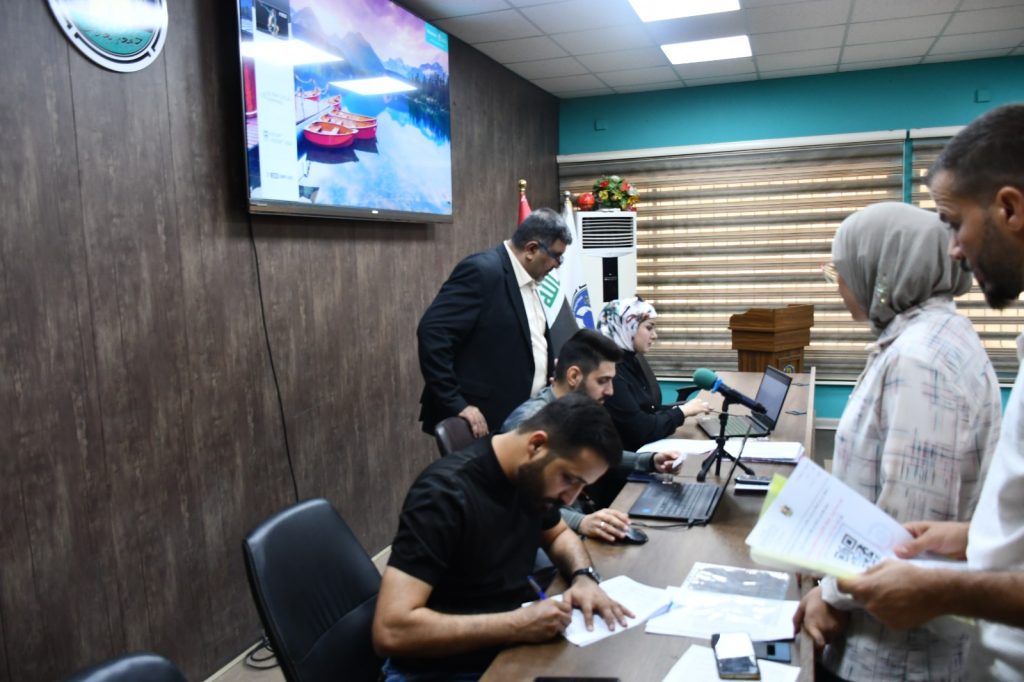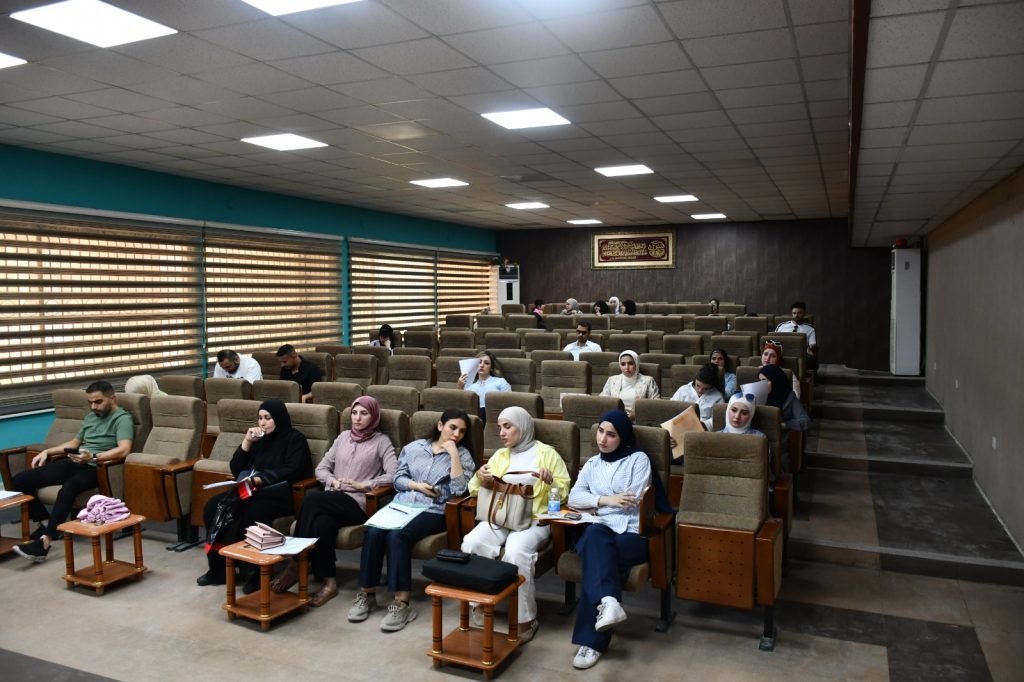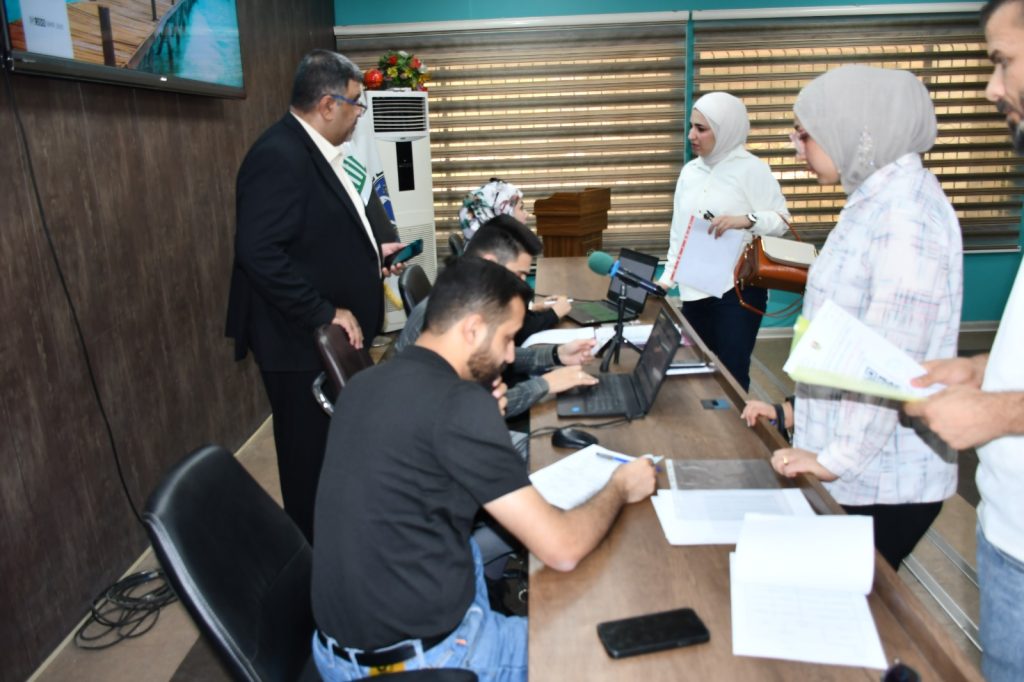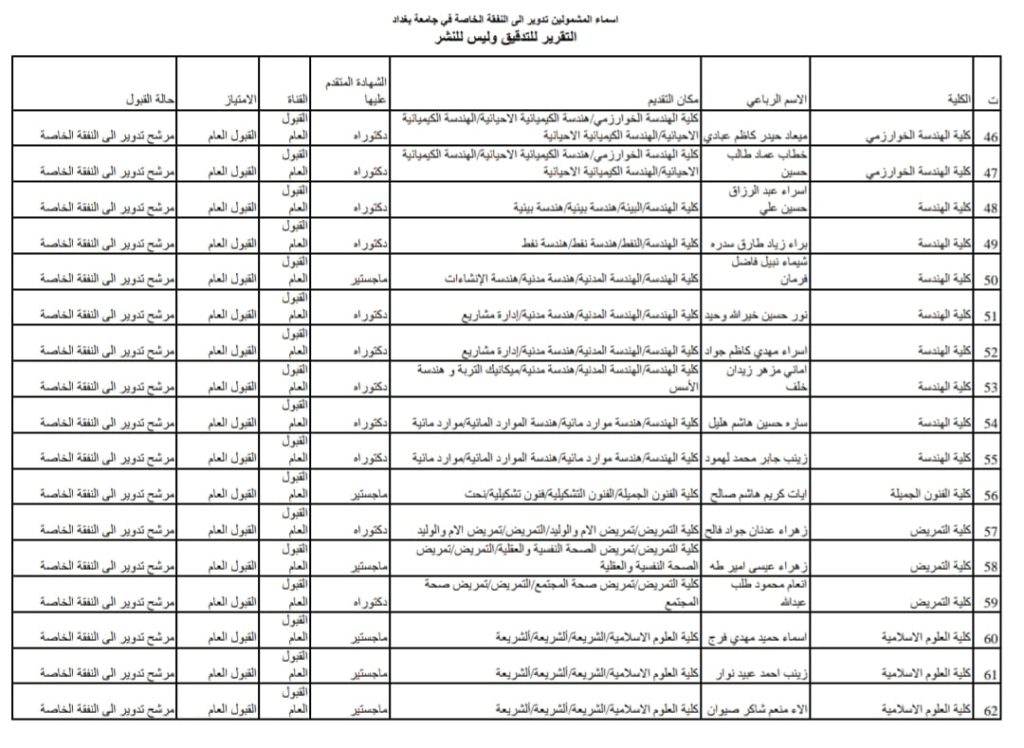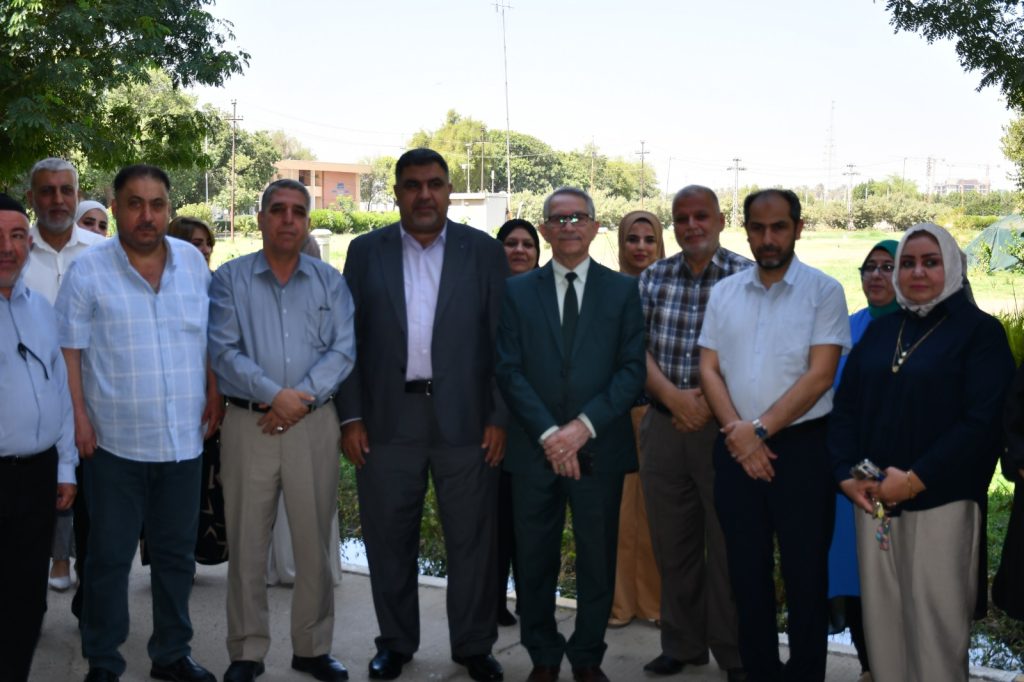تأسس القسم في عام 1986 لتهيئة كوادر هندسية متخصصة في مجال الهندسة الألكترونية و الإتصالات.
عدد السنوات الدراسية أربعة بعد الدراسة الإعدادية / الفرع العلمي.
تخرجت الدفعة الأولى من طلبة القسم في صيف عام 1990, و كان عددهم آنذاك 20 طالبا, و منحوا درجة البكالوريوس في الهندسة الألكترونية و الإتصالات.
من ذلك التاريخ, تخرج أكثر من 1000 مهندس من حملة البكالوريوس و الماجستير, و هم الآن يشغلون مناصب فنية و اكاديمية في العديد من دوائر الدولة و القطاع الخاص داخل و خارج العراق.
في عام 2000, افتتحت الدراسات العليا في القسم لدراسة الماجستير و الدكتوراه. لكنها توقفت بعد عام واحد بسبب قلة الكادر التدريسي.
أعيد افتتاح الدراسات العليا في القسم في عام 2009 لدراسة الماجستير فقط.
عدد الطلاب في القسم للعام الدراسي 2010/2011 كان 130 طالب في الدراسات الأولية و العليا.
| ت | أسم رئيس القسم | التأريخ |
| 1 | د. صالح رؤوف الاعرجي | 1986/1991 |
| 2 | د.سركوت نامق عبد الله الحويزي | 1991/1994 |
| 3 | د. قيس سعيد اسماعيل الصباغ | 1994/2002 |
| 4 | د. قادر حمود الشرع | 2002/2003 |
| 5 | د. سركوت نامق عبد الله | 2003/2009 |
| 6 | د.جعفر وادي عبد السادة | 2009 /2011 |
| 7 | د. سليمان مرتضى عباس | 2015/2011 |
| 8 | أ.م.د.طارق زياد أسماعيل | 2015 /2018 |
| 9 | م.د بثينة موسى عمران | 2018- 2020 |
| 10 | د.عقيل نعمة زعيان | 2020- لحد الان |
الدورات والندوات للعام الدراسي 2019-2020
الأستمارات الالكترونية ادناه تخص قسم الهندسة الالكترونية و الاتصالات
نشاطات القسم
باشر طلبة المرحلة الاولى كلية الهندسة في جامعة بغداد صباح يوم الأحد الموافق 9 نوفمبر ٢٠٢٥، عامهم الدراسي الجديد ٢٠٢٥–٢٠٢٦، حيث انتظموا في مقاعدهم الدراسية وسط توفير كافة المستلزمات التعليمية واحتياجات الطلبة من قبل عمادة الكلية، بما يهيئ بيئة مناسبة لانطلاقة أكاديمية مثمرة بالنجاح .
وانطلاقًا من هذه المناسبة، قدّم عميد الكلية الأستاذ الدكتور غسان حميد عبد المجيد تهنئته للطلبة وأعضاء الهيئة التدريسية، مؤكدًا أهمية الالتزام بالدوام الرسمي والمثابرة لتحقيق التفوق والتميز العلمي، متمنيًا للجميع عامًا دراسيًا حافلًا بالنجاح والعطاء
برعاية عميد كلية الهندسة بجامعة بغداد أ.د. غسان حميد عبد المجيد، وبإشراف معاون العميد للشؤون العلمية والدراسات العليا أ.د. زياد طارق عبد علي، نظمت وحدة الإرشاد النفسي الجامعي ولجان الإرشاد في الأقسام العلمية (هندسة الحاسبات، الهندسة الميكانيكية، هندسة الإلكترونيات والاتصالات)، بالتعاون مع منظمة التعافي، ورشة عمل بعنوان "الآثار الاجتماعية والنفسية للإدمان"، يوم الخميس الموافق 30 تشرين الأول 2025، على قاعة الدكتور مهدي حنتوش.
قدّم الورشة مؤسس منظمة التعافي الأستاذ عصام كشيش كاظم، وأ.م. هبة مؤيد محمد، مدير الإرشاد النفسي والتوجيه التربوي في الكلية، بحضور السيد أ.د. كريم حسن، رئيس قسم الهندسة الميكانيكية، إلى جانب عدد من التدريسيين والموظفين والطلبة.
تناولت الورشة مخاطر المخدرات والعوامل المؤدية لتعاطيها بين الشباب، وآثارها النفسية والاجتماعية والصحية، إضافة إلى تأثيرها على سلوك المدمن وشخصيته. كما تم استعراض اضطراب تعاطي المخدرات وانعكاساته على الفرد والمجتمع، مع التأكيد على ضرورة الوعي المبكر بمخاطر الإدمان وسبل الوقاية منه.واستعرض مؤسس المنظمة تجارب حقيقية لأشخاص تمكنوا من التعافي بفضل الدعم والمساندة التي قدمتها لهم منظمة التعافي، مما أبرز أهمية برامج المنظمة ودورها الفعّال في مساعدة المتعافين على العودة إلى حياتهم الطبيعية
وأكّدت أ.م. هبة مؤيد محمد على أهمية حماية الشباب الجامعي كونهم شريحة أساسية لبناء الوطن وقادة المستقبل، مشيدةً بدور منظمة التعافي في دعم المتعافين من الإدمان من خلال برامجها وخبراتها العملية.
واختتمت الورشة بعدد من التوصيات التي شددت على الدور الحيوي للأسرة في توجيه الأبناء وتنشئتهم بشكل سليم، وأهمية تعزيز القيم الدينية والاجتماعية، ورفع مستوى الوعي بمخاطر المخدرات وآثارها، بالإضافة إلى ضرورة التدخل العلاجي المبكر لتجنب الاعتماد النفسي والجسدي على المخدرات وتقليل أضرارها على الفرد والمجتمع
احتفت كلية الهندسة – جامعة بغداد بخريجيها ضمن فعاليات الحفل المركزي لجامعة بغداد بدورتها الثامنة والستين، الذي أُقيم تحت شعار "التميّز والإبداع" في حدائق كلية التربية البدنية، يوم السبت الموافق 1 تشرين الثاني 2025، بحضور وزير التعليم العالي والبحث العلمي الدكتور نعيم العبودي، وعدد من رؤساء الجامعات والقيادات الأكاديمية والأمنية، فضلاً عن عوائل الطلبة الخريجين.
شهد الحفل المسيرة الأكاديمية للخريجين الذين زينوا الساحة بأروابهم ورايات كلياتهم، وسط أجواء مفعمة بالفخر والاعتزاز بجهودهم العلمية على مدى سنوات دراستهم. وتضمنت الفعاليات كلمات رسمية استعرضت المكانة الريادية لجامعة بغداد بوصفها الجامعة الأم التي أسهمت في رفد مؤسسات الدولة بكفاءات علمية ومهنية كان لها دور فاعل في التنمية والبناء.
واختُتم الحفل بتكريم الطلبة الأوائل من الدراستين الصباحية والمسائية من قبل السيد وزير التعليم العالي، في مشهد احتفالي بهيج غمرت فيه الفرحة وجوه الخريجين وذويهم.
من جانبهم، اعرب أساتذة كلية الهندسة عن خالص تهانيهم لطلبتهم، متمنين لهم مستقبلاً مشرقًا وحافلًا بالنجاح والتفوق في مسيرتهم العلمية والمهنية داعينهم إلى مواصلة السعي للابتكار والإبداع والمساهمة الفاعلة في بناء المجتمع
ضمن مبادرات كلية الهندسة في جامعة بغداد الهادفة إلى تحسين البيئة الجامعية ونشر ثقافة العمل التطوعي، نظم قسم الهندسة الإلكترونية والاتصالات بالتعاون مع وحدة الإرشاد النفسي والتوجيه التربوي حملة تشجير تطوعية، وذلك يوم الأحد الموافق 26 تشرين الأول 2025، في الحديقة الأمامية الواقعة في مرآب القسم.
وجاءت هذه المبادرة في إطار الجهود الرامية إلى الحد من ظاهرة التصحر في العراق، وتعزيز المساحات الخضراء داخل الجامعة، لما لها من أثر في تقليل التلوث البيئي وتحسين جودة الهواء وخفض درجات الحرارة، فضلًا عن دورها في إضفاء لمسة جمالية على البيئة الجامعية وتهيئة أجواء ملائمة للطلبة.
وشهدت الحملة مشاركة واسعة من التدريسيين والطلبة الذين ساهموا في زراعة أنواع مختلفة من الأشجار والنباتات، مؤكدين أن مثل هذه الأنشطة التطوعية تعكس روح التعاون والمسؤولية المجتمعية، وتسهم في ترسيخ مفهوم الاستدامة داخل الحرم الجامعي.
احتفت كلية الهندسة - جامعة بغداد، في جميع أقسامها، بالعيد الوطني العراقي الذي يصادف الثالث من تشرين الأول، في أجواء وطنية مفعمة بالفخر والانتماء.
وشمل الاحتفال رفع الأعلام وعزف النشيد الوطني، إلى جانب مشاركة الطلبة بكلمات وعبارات وطنية عبّرت عن حبهم واعتزازهم بالعراق، وجسّدت روح الانتماء والوحدة، مسهمةً في تعزيز أجواء الفرح والفخر بالهوية الوطنية.
وأكدت عمادة الكلية أن هذه المناسبة تجسد تلاحم أبناء الوطن الواحد، وتستحضر التضحيات التي قدمها العراقيون من أجل وحدتهم وسيادتهم، مشددةً على أن الكلية ستظل حاضنة للعلم والمعرفة وغرس مبادئ المواطنة الصالحة بين الشباب.
نظمت لجنة رصانة المجلات العلمية للبحوث المنشورة في كلية الهندسة – جامعة بغداد، يوم الأحد الموافق 28 أيلول 2025، ورشة عمل حول التحول الرقمي وآلية تقديم طلب رصانة البحوث العلمية إلكترونياً بدلاً من النظام الورقي.
أُقيمت الورشة برئاسة أ.د زياد طارق عبد علي، معاون العميد للشؤون العلمية والدراسات العليا، وبحضور أعضاء لجنة الرصانة في أقسام الكلية. وناقشت الورشة آليات تقديم الطلبات من قبل الباحثين الأكاديميين لنشر البحوث العلمية الرصينة في مجلة كلية الهندسة العلمية عبر النظام الإلكتروني، وفقاً لنظام رصانة المجلات الذي أعده فريق شعبة تكنولوجيا المعلومات بالكلية.
كما تم التعريف بالنظام الإلكتروني للنشر وشروط نشر البحوث التي يجب على الباحثين الالتزام بها، مع توضيح دور اللجنة في دعم الباحثين وتسهيل عملية النشر الإلكتروني بما يضمن رفع مستوى الرصانة العلمية للمجلات الأكاديمية.
واختتم أ.د زياد طارق الورشة بالتأكيد على أهمية الالتزام بالمعايير العلمية والأكاديمية للنشر في المجلات الإلكترونية، مشدداً على ضرورة العمل بروح الفريق لمعالجة جميع التحديات، ومثمناً جهود أعضاء اللجنة في تعزيز جودة البحوث العلمية المنشورة.
باشر طلبة كلية الهندسة في جامعة بغداد صباح يوم الأحد الموافق 21 أيلول 2025، عامهم الدراسي الجديد 2025–2026،
حيث انتظموا في مقاعدهم الدراسية وسط توفير كافة المستلزمات التعليمية واحتياجات الطلبة من قبل عمادة الكلية، بما يهيئ بيئة مناسبة لانطلاقة أكاديمية مثمرة بالنجاح.
وانطلاقًا من هذه المناسبة، قدّم عميد الكلية الأستاذ الدكتور غسان حميد عبد المجيد تهنئته للطلبة وأعضاء الهيئة التدريسية، مؤكدًا أهمية الالتزام بالدوام الرسمي والمثابرة لتحقيق التفوق والتميز العلمي، متمنيًا للجميع عامًا دراسيًا حافلًا بالنجاح والعطاء.
أعلنت كلية الهندسة في جامعة بغداد
عن المقاعد الشاغرة في جميع التخصصات ولجميع قنوات القبول ضمن برامج الدراسات العليا للعام الدراسي 2026/2025.
وتدعو الكلية الراغبين بالتدوير بين الجامعات إلى الاطلاع على تفاصيل المقاعد المتاحة من خلال الرابط : المقاعد الشاغرة في هندسة بغداد بعد المعالجة والتدوير
شهدت كلية الهندسة جامعة بغداد يوم الثلاثاء الموافق 9-9-2025 المناقشة العلنية لطالبة الماجستير نشوة رباح عبود من قسم هندسة الإلكترونيات والاتصالات، عن رسالتها الموسومة: "Machine learning based RPL protocol for WSN Performance improvement"، بإشراف م.د. أنوار قاسم.
هدفت الدراسة إلى تعزيز أداء شبكات الاستشعار اللاسلكية عبر اقتراح بروتوكول RPL محسن يعتمد على خوارزميات التعلم الآلي. وقد تم تطوير منهجين: الأول يمثل التنفيذ الأساسي لبروتوكول RPL-OF0، والثاني يدمج خوارزميات الغابة العشوائية (RF) وآلة متجه الدعم (SVM) لاختيار المسارات ديناميكياً وفق كفاءة الطاقة.
وأظهرت نتائج المحاكاة باستخدام برنامج MATLAB في سيناريوهين مختلفين—توزيع منتظم وعشوائي للعقد—تحسناً ملحوظاً في استهلاك الطاقة، ونسبة إيصال الحزم، وتقليل زمن التأخير من طرف إلى طرف، وكفاءة نشاط الراديو.
وأوصت الباحثة بتطبيق هذا الإطار المحسن في شبكات الاستشعار اللاسلكية لتحقيق توجيه أكثر كفاءة وموثوقية، مع إمكانية توسيع الدراسة لمزيد من خوارزميات التعلم الآلي لتلبية احتياجات شبكات أكبر وأكثر تعقيداً.
وبعد المناقشة والاستماع لدفاع الباحثة من قبل لجنة المناقشة، تم منح الباحثة درجة الماجستير في هندسة الإلكترونيات والاتصالات.
في إطار المتابعة المستمرة لسير العملية التعليمية، أجرى الأستاذ الدكتور زياد طارق عبد علي، معاون العميد للشؤون العلمية والدراسات العليا، والأستاذ الدكتور وميض نزار فليح، معاون العميد لشؤون الطلبة، جولة ميدانية يوم الأربعاء الموافق 10 أيلول 2025 في كلية الهندسة – جامعة بغداد.
شملت الجولة القاعات الدراسية والامتحانية الخاصة بامتحانات الدور الثاني لطلبة الدراسات الأولية،والعليا حيث اطلع المعاونان على آلية أداء الامتحانات والإجراءات التنظيمية المتبعة لضمان انسيابيتها في أجواء ملائمة، مثمّنين جهود اللجان الامتحانية والكادر التدريسي في تهيئة المستلزمات الضرورية لنجاح العملية الامتحانية.
كما تزامنت الجولة مع استقبال وتهنئة طلبة الدراسات العليا بمناسبة بدء العام الدراسي الجديد، حيث أكد المعاونان حرص الكلية على توفير بيئة أكاديمية رصينة تسهم في تطوير مهارات الطلبة وتعزيز قدراتهم البحثية بما يواكب متطلبات سوق العمل وخطط التنمية.
واختُتمت الجولة بدعوة الطلبة إلى مضاعفة الجهود لتحقيق أفضل النتائج، مع التمنيات لهم بدوام التوفيق والنجاح في مسيرتهم العلمية.
شهدت كلية الهندسة في جامعة بغداد صباح اليوم الاثنين الموافق 1 أيلول 2025 انطلاق الامتحانات النهائية للدور الثاني للعام الدراسي 2024–2025، لطلبة الدراسات الأولية والعليا في جميع الأقسام العلمية.
وجرت الامتحانات بانسيابية عالية بعد اتخاذ الكلية الإجراءات اللازمة لضمان نجاح العملية الامتحانية، وتهيئة القاعات بكافة المستلزمات المطلوبة لتوفير بيئة ملائمة للطلبة لأداء امتحاناتهم بسهولة ويسر.
أعلنت كلية الهندسة -جامعة بغداد عن صدور الأمر الجامعي الخاص بالقبول الثاني (التدوير) للدراسات العليا في برامج الدبلوم العالي والماجستير والدكتوراه للعام الدراسي 2025-2026.
وتمنت عمادة الكلية لجميع الطلبة المقبولين التوفيق والنجاح في مسيرتهم العلمية،
للاطلاع على أسماء المقبولين اضغط على الرابط. /الأمر_الجامعي_للقبول_الثاني_تدوير_.pdf
تعلن كلية الهندسة في جامعة بغداد عن توفر المقاعد الشاغرة في كافة التخصصات وقنوات القبول للدراسات العليا للعام الدراسي 2026/2025، وذلك للراغبين بالتدوير بين الجامعات.
ودعت الكلية الراغبين إلى الاطلاع على ملف المقاعد الشاغرة في كلية الهندسة من خلال الرابط التالي: احصائية-عدد-المقاعد-بعد-الاشغال-والتدوير-والمعالجة-كلية-الهندسة.xls
تُهيب كلية الهندسة / جامعة بغداد بالخريجين المدرجة أسماؤهم في الملف بضرورة الحضور إلى شعبة التسجيل لتوقيع ورقة طلب التعيين، وذلك وفق الطلب الجديد الصادر من مجلس الخدمة الاتحادي.على أن تكون المراجعة خلال هذا الأسبوع حصراً.
يُرجى الالتزام بالحضور ضمن الفترة المحددة لتسهيل إجراءات التعيين وضمان استكمال متطلبات العملية.
🔗 للاطلاع على الأسماء اضغط على الرابط : اسماء الخريجين المطلوب حضورهم
تعلن شعبة الدراسات العليا في كلية الهندسة - جامعة بغداد أسماء المقبولين للعام الدراسي 2026/2025 ضمن برنامج التدوير من قناتي العام والخاص إلى المقاعد الشاغرة في قناة الامتيازات، وذلك للناجحين أولاً ومن ثم للحالات الحرجة من خلال الرابطين المرفقين.
وسيتم تبليغ المقبولين للمراجعة فور صدور الأمر الجامعي لاستكمال إجراءات القبول.
للاطلاع على أسماء المقبولين والحالات الحرجة يرجى زيارة الرابطين أدناه:
تعلن شعبة الدراسات العليا في كلية الهندسة - جامعة بغداد عن توفر مقاعد شاغرة ضمن قناة الامتيازات لكافة التخصصات مبينةً إمكانية تقديم طلبات التدوير من قناتي العام والخاص إلى قنوات الامتيازات الشاغرة للحالات الحرجة (45-49) حصراً، وذلك للفترة من 20 آب ولغاية 23 آب 2025.
وسيكون التقديم إلكترونياً عبر الرابط: http://hs.uob.edu.iq، على أن يعتمد القبول على أعلى معدل تفاضلي.
للاطلاع على تفاصيل المقاعد الشاغرة يرجى الدخول عبر الرابط:
المقاعد الشاغرة في قناة الامتيازات بعد تدوير الناجحين
على جميع المتقدمين الالتزام بالتوقيتات المحددة.
تعلن شعبة الدراسات العليا في كلية الهندسة - جامعة بغداد عن توفر مقاعد شاغرة ضمن قناة الامتيازات في جميع التخصصات، وتدعو المتقدمين من قناتي العام والخاص (من الناجحين حصراً) إلى تقديم طلبات التدوير لشغل هذه المقاعد للفترة من 8/14 /2025 ولغاية 2025/8/18. يكون تقديم الطلبات إلكترونياً عبر الرابط: http://hs.uob.edu.iq، وسيكون القبول على أساس أعلى معدل تفاضلي وعلى قناة النفقة الخاصة.
للاطلاع على تفاصيل المقاعد الشاغرة من خلال الرابط : المقاعد الشاغرة _ الامتيازات
يرجى الالتزام بالتوقيتات المحددة
أعلنت كلية الهندسة في جامعة بغداد صدور الأمر الجامعي الخاص بالقبول في الدراسات العليا للعام الدراسي 2025/2026، في برامج الدبلوم العالي والماجستير والدكتوراه.
للأطلاع على أسماء المقبولين من خلال الرابط : الامر الجامعي للقبول - 2025-2026
وتتقدم عمادة كلية الهندسة بأسمى آيات التهاني والتبريكات للمقبولين، متمنية لهم التوفيق والنجاح في مسيرتهم العلمية.
تعلن كلية الهندسة في جامعة بغداد عن فتح باب تقديم طلبات التدوير للمتقدمين ضمن فئات الامتيازات والحالات الحرجة (45-49) للتدوير فيما بينهم حصراً. وأوضحت الكلية أن استقبال الطلبات سيكون إلكترونيًا عبر الرابط : http://hs.uob.edu.iq، وذلك حتى موعد أقصاه الساعة الثامنة صباحاً من يوم 14 أغسطس 2025.
تدعو شعبة الدراسات العليا في هندسة بغداد الخريجين المُدرجـة أسماؤهم في الوجبة الرابعة ضمن الملف المُرفق، إلى مراجعة الكلية في قاعة مهدي حنتوش يوم غد الأربعاء الموافق 2025/8/6 وذلك من الساعة ٩:٠٠ صباحاً وحتى ١٢:٠٠ ظهراً، لغرض تدقيق بياناتهم واستكمال إجراءات الحصول على الكود الوظيفي الخاص بالتعيين ضمن تعيينات مجلس الخدمة العامة الاتحادي.
يرجى من الخريجين جلب المستمسكات التالية:
- استمارة طلب التعيين والحصول على الرمز الوظيفي (متوفرة في الموقع الرسمي).
- البطاقة الوطنية الموحدة للخريج ووالديه (الأب والأم).
- بطاقة السكن.
- الأمر الجامعي للتخرج متضمناً الباركود.
- جواز السفر (إن وجد).
وتنوه شعبة الدراسات العليا إلى أن يوم غد سيكون الموعد الأخير لمراجعة الخريجين للكلية، لغرض تسليم المستمسكات المطلوبة وتدقيق بياناتهم. وبخلافه يتحمّل الخريج مسؤولية عدم استكمال إجراءات الحصول على كود التعيين.
وتُهيب الشعبة بجميع الخريجين الالتزام بالحضور في الوقت المحدد، مع إحضار المستمسكات كاملة لضمان سرعة ودقة إنجاز الإجراءات.
الاسماء مرفقة عبر الرابط التالي: اسماء الوجبة الــ 4تواصل شعبة الدراسات العليا في كلية الهندسة – جامعة بغداد، بشكل يومي، تنفيذ آلية توزيع الكود الوظيفي على خريجي الدراسات العليا، لغرض تدقيق بياناتهم واستكمال إجراءات حصولهم على الكود الخاص بالتعيين ضمن تعيينات مجلس الخدمة العامة الاتحادي.
وتُجرى هذه الإجراءات ضمن لجنة من شعبة الدراسات العليا، بإشراف مباشر من الأستاذ الدكتور ضياء جاسم كاظم، معاون العميد للشؤون العلمية، لضمان انسيابية العمل ودقّة تدقيق البيانات.
وتأتي هذه الجهود في إطار حرص الكلية على دعم خريجيها وتسهيل دخولهم إلى سوق العمل ضمن المسارات الرسمية المعتمدة.
تدعو شعبة الدراسات العليا في هندسة بغداد الخريجين المُدرجـة أسماؤهم في الوجبة الثالثة ضمن الملف المُرفق، إلى مراجعة الكلية في قاعة مهدي حنتوش يوم غد الثلاثاء الموافق 2025/8/5 وذلك من الساعة ٩:٠٠ صباحاً وحتى ١٢:٠٠ ظهراً، لغرض تدقيق بياناتهم واستكمال إجراءات الحصول على الكود الوظيفي الخاص بالتعيين ضمن تعيينات مجلس الخدمة العامة الاتحادي.
يرجى من الخريجين جلب المستمسكات التالية:
- استمارة طلب التعيين والحصول على الرمز الوظيفي (متوفرة في الموقع الرسمي).
- البطاقة الوطنية الموحدة للخريج ووالديه (الأب والأم).
- بطاقة السكن.
- الأمر الجامعي للتخرج متضمناً الباركود.
- جواز السفر (إن وجد).
نُهيب بجميع الخريجين الالتزام بالحضور في الوقت المحدد وإحضار المستمسكات المطلوبة كاملة لضمان سرعة إنجاز الإجراءات.
الاسماء مرفقة عبر الرابط التالي: اسماء الوجبة -3
تدعو شعبة الدراسات العليا في هندسة بغداد الخريجين المُدرجـة أسماؤهم في الملف المُرفق، إلى مراجعة الكلية في قاعة مهدي حنتوش يوم غد الاثنين الموافق 2025/8/4 وذلك من الساعة ٩:٠٠ صباحاً وحتى ١٢:٠٠ ظهراً، لغرض تدقيق بياناتهم واستكمال إجراءات الحصول على الكود الوظيفي الخاص بالتعيين ضمن تعيينات مجلس الخدمة العامة الاتحادي. يرجى من الخريجين جلب المستمسكات التالية:
- استمارة طلب التعيين والحصول على الرمز الوظيفي (متوفرة في الموقع الرسمي).
- البطاقة الوطنية الموحدة للخريج ووالديه (الأب والأم).
- بطاقة السكن.
- الأمر الجامعي للتخرج متضمناً الباركود.
- جواز السفر (إن وجد). نُهيب بجميع الخريجين الالتزام بالحضور في الوقت المحدد وإحضار المستمسكات المطلوبة كاملة لضمان سرعة إنجاز الإجراءات. الاسماء مرفقة عبر الرابط التالي: اسماء الوجبة 2
تعلن شعبة الدراسات العليا في كلية الهندسة – جامعة بغداد، عن أسماء المرشحين للتدوير من قناة القبول العام إلى قناة النفقة الخاصة، من الطلبة الناجحين في الامتحان التنافسي.
وأوضحت الشعبة أنه سيتم، خلال الفترة من 3 إلى 7 آب 2025، إضافة خمس درجات لمعالجة الحالات الحرجة وفق أعلى معدل تفاضلي، لغرض إشغال المقاعد الشاغرة ضمن قناة كل متقدم.
وفي حال توفر مقاعد شاغرة في قناة النفقة الخاصة، يمكن للمتقدمين المستفيدين من درجات المعالجة تقديم طلبات التدوير إلكترونيًا خلال المدة ذاتها (3 – 7 آب 2025)، لشغل تلك المقاعد.
وبيّنت شعبة الدراسات العليا أنه إذا وُجد متقدمان مشمولان بدرجات المعالجة في كلتا قناتي التقديم (القبول العام والنفقة الخاصة)، وتوفر مقعد شاغر واحد فقط في قناة النفقة الخاصة، فإن الأفضلية في إشغاله تُمنح للمتقدم ضمن قناة النفقة الخاصة.
كما أكدت الشعبة أنه في حال استفادة المتقدم ضمن قناة القبول العام أو الامتيازات من درجات المعالجة لغرض إشغال المقعد ضمن قناته الأصلية، فلا تترتب عليه أية تبعات مالية، ويُعد مستمرًا في قناته نفسها.
ويكون تقديم طلبات التدوير إلكترونيًا حصراً عبر الموقع الرسمي: http://hs.uob.edu.iq
رابط اسماء التدوير : اسماء التدوير الى النفقة الخاصة
في إنجاز نوعي يُضاف إلى رصيدها الأكاديمي، ساهمت كلية الهندسة – جامعة بغداد بدور محوري في دعم الجامعة للحصول على العضوية الكاملة في شراكة "تخضير التعليم" التابعة لمنظمة الأمم المتحدة للتربية والعلم والثقافة (اليونسكو)، وذلك بعد استكمال الركائز الأربعة الأساسية المطلوبة ضمن معايير الشراكة.
وتُعد جامعة بغداد أول مؤسسة تعليمية عراقية حكومية تنجح في تحقيق شرط تنفيذ هذه الركائز في 50% من مؤسساتها التعليمية، قبل الموعد المحدد عالميًا في عام 2030، مما أهلها لنيل العضوية الكاملة في الشراكة الدولية، والحصول على حق استخدام شعار العضوية الرسمي في موقعها الإلكتروني ومراسلاتها، وهو ما لم تكن تسمح به اليونسكو إلا لعدد محدود من المؤسسات الملتزمة بمعايير التعليم الأخضر.
وقد كان لكلية الهندسة دور ريادي في هذا الإنجاز، من خلال التزامها بتطبيق معايير الاستدامة البيئية والتحول نحو التعليم الأخضر، في ظل متابعة مباشرة من عميد الكلية الأستاذ الدكتور غسان حميد عبد المجيد، وجهود متواصلة من الملاكات الأكاديمية والإدارية، ما جعل الكلية نموذجًا مؤسسيًا متقدّمًا ضمن هذا الإطار.
وتعبّر كلية الهندسة عن فخرها واعتزازها بهذا الإنجاز الذي يعكس مكانتها كمؤسسة فاعلة في دعم توجهات جامعة بغداد نحو الريادة في التعليم المستدام وتعزيز حضورها ضمن الشراكات الدولية المعتمدة من قبل منظمة اليونسكو.
نظّمت كلية الهندسة في جامعة بغداد، صباح اليوم الأحد الموافق 3 آب 2025، وقفة تضامنية لإحياء الذكرى الحادية عشرة للإبادة الجماعية والجرائم الوحشية التي ارتكبتها العصابات الإرهابية بحق الإخوة الإيزيديين في سنجار ومناطق الموصل.
وشهدت الوقفة حضور السيد عميد كلية الهندسة الأستاذ الدكتور غسان حميد عبد المجيد، ومعاونيه للشؤون العلمية والإدارية، ومعاون شؤون الطلبة، وعدد من تدريسيي وموظفي الكلية، حيث استُهلت الفعالية بالوقوف دقيقة صمت ترحماً على أرواح الضحايا الأبرياء الذين قضوا في تلك المجازر.
وتأتي هذه الفعالية ضمن إطار الدور الإنساني والأخلاقي الذي تضطلع به الكلية في نشر ثقافة التسامح والتضامن، واستذكار المآسي الإنسانية التي تعرّض لها الإيزيديون عام 2014، والتي أسفرت عن مقتل الآلاف، واختطاف واستعباد أكثر من 6000 شخص، فضلًا عن تهجير ما يزيد عن 400 ألف مواطن لا يزال أغلبهم يعيشون في ظروف صعبة داخل مخيمات إقليم كوردستان.
وأكدت كلية الهندسة – جامعة بغداد، أن هذه الوقفة تعبّر عن موقف المجتمع الأكاديمي المبدئي الرافض لكل أشكال العنف والتطرف، ودعماً لمسيرة العدالة والإنصاف لضحايا الإبادة الجماعية وعائلاتهم
تدعو كلية الهندسة – جامعة بغداد الخريجين المُدرجـة أسماؤهم في الملف المُرفق، إلى مراجعة الكلية في قاعة مهدي حنتوش يوم الأحد الموافق 2025/8/3 وذلك من الساعة 9:00 صباحاً وحتى 12:00 ظهراً، لغرض تدقيق بياناتهم واستكمال إجراءات الحصول على الكود الوظيفي الخاص بالتعيين ضمن تعيينات مجلس الخدمة العامة الاتحادي.
يرجى من الخريجين جلب المستمسكات التالية:
- استمارة طلب التعيين والحصول على الرمز الوظيفي (متوفرة في الموقع الرسمي).
- البطاقة الوطنية الموحدة للخريج ووالديه (الأب والأم).
- بطاقة السكن.
- الأمر الجامعي للتخرج متضمناً الباركود.
- جواز السفر (إن وجد).
نُهيب بجميع الخريجين الالتزام بالحضور في الوقت المحدد وإحضار المستمسكات المطلوبة كاملة لضمان سرعة إنجاز الإجراءات.
الاسماء مرفقة عبر الرابط التالي: الأسماء
تعلن كلية الهندسة في جامعة بغداد عن دعوة خريجيها الثلاثة الأوائل على مستوى كل قسم من خريجي الدراسات الأولية للسنوات الممتدة من 2003 حتى 2025، لغرض تحديث بياناتهم الرسمية.
ودعت الكلية الخريجين المشمولين إلى ملء الاستمارة الإلكترونية عبر الرابط التالي:
🔗 https://forms.gle/kQWt34HJKYXdP1ue6
وتؤكد الكلية أن المراجعة تكون من قبل الخريج حصراً إلى شعبة التسجيل في مبنى الكلية، مصطحباً نسخة من المستمسكات الثبوتية لهُ ولولديه (الأب، الأم)، وذلك بعد ملء الاستمارة الإلكترونية، وفق الجدول الزمني التالي:
-
خريجو عام 2023: المراجعة يومي الاثنين والثلاثاء الموافقين 4 و5 آب 2025.
-
خريجو عام 2024: المراجعة يومي الأربعاء والخميس الموافقين 6 و7 آب 2025.
-
خريجو عام 2025: المراجعة يومي الاثنين والثلاثاء الموافقين 11 و12 آب 2025.
-
خريجو الأعوام السابقة: المراجعة ابتداءً من يوم 13 آب 2025.
وتدعو الكلية خريجيها الكرام إلى الالتزام بالتوقيتات المحددة حرصاً على تنظيم العمل وسرعة إنجاز المتطلبات.
مناهج المرحلة الثانية
electronics
mathematics
architecture of computer
مناهج المرحلة الثالثة
electronic
DSB
مناهج المرحلة الرابعة
NETWORK
Micrwowave Engineering
Microwave Engineering_Lectures_Website
Optical Communications
fiberlec3 signal attenuation I
Embedded Systems
